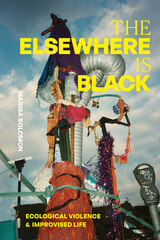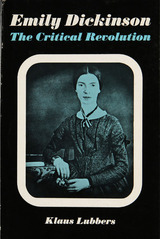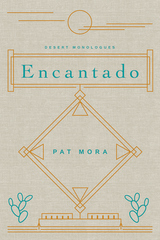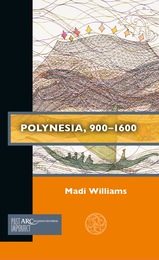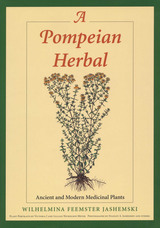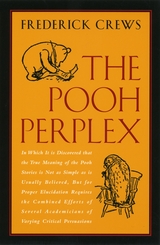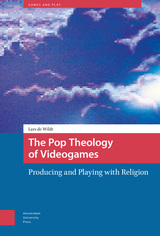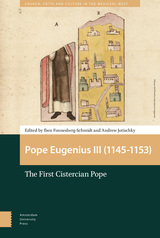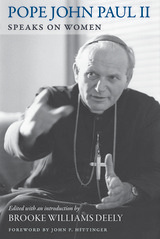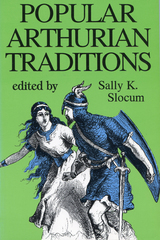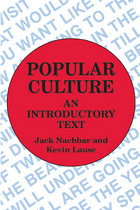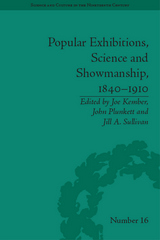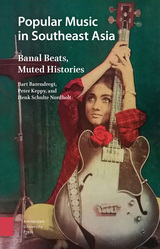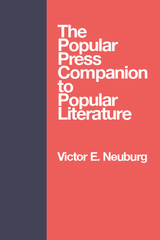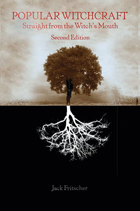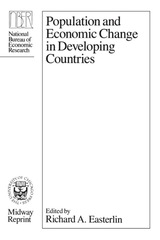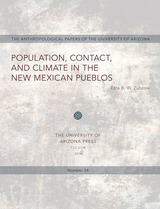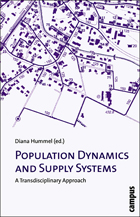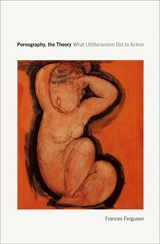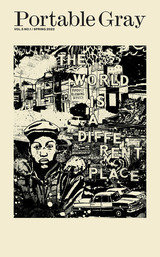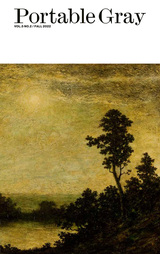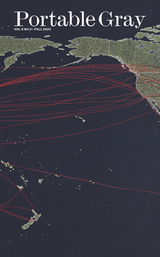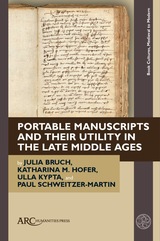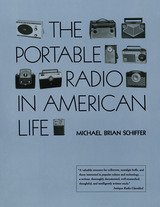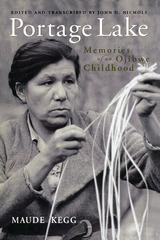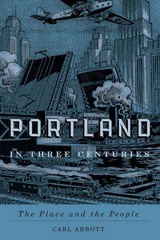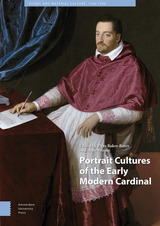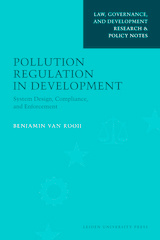 Pollution Regulation in Development: System Design, Compliance and Enforcement
Benjamin van Rooij
Amsterdam University Press, 2008 Over the last decades, some non-OECD countries such as Brazil, Indonesia, Colombia, Mexico, India and China have been rapidly industrializing. While this has had positive effects on economic growth, it has also caused pollution with severe effects on the natural environment, human health, and global climate change. In response to the new pollution threat, most of the industrializing economies have installed pollution prevention and control regulations, and implementing institutions. In practice, however, the regulations often fail to achieve the desired results. Violations of the law remain pervasive, and enforcement reactions against violations of the law are often ineffective.
This Research and Policy Note explains why the regulation of pollution in these countries is so difficult, by looking at several aspects of pollution regulation frameworks, for instance the obstacles to effective law enforcement, effective enforcement strategies in creating compliance in industrializing economies, and the role of local communities, markets and politics.
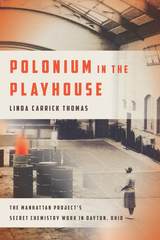 Polonium in the Playhouse: The Manhattan Project's Secret Chemistry Work in Dayton, Ohio
Linda Carrick Thomas
Ohio State University Press, 2017 At the height of the race to build an atomic bomb, an indoor tennis court in one of the Midwest’s most affluent residential neighborhoods became a secret Manhattan Project laboratory. Polonium in the Playhouse: The Manhattan Project's Secret Chemistry Work in Dayton, Ohio presents the intriguing story of how this most unlikely site in Dayton, Ohio, became one of the most classified portions of the Manhattan Project.
Seized by the War Department in 1944 for the bomb project, the Runnymede Playhouse was transformed into a polonium processing facility, providing a critical radioactive ingredient for the bomb initiator—the mechanism that triggered a chain reaction. With the help of a Soviet spy working undercover at the site, it was also key to the Soviet Union’s atomic bomb program.
The work was directed by industrial chemist Charles Allen Thomas who had been chosen by J. Robert Oppenheimer and General Leslie Groves to coordinate Manhattan Project chemistry and metallurgy. As one of the nation’s first science administrators, Thomas was responsible for choreographing the plutonium work at Los Alamos and the Project’s key laboratories. The elegant glass-roofed building belonged to his wife’s family.
Weaving Manhattan Project history with the life and work of the scientist, industrial leader and singing-showman Thomas, Polonium in the Playhouse offers a fascinating look at the vast and complicated program that changed world history and introduces the men and women who raced against time to build the initiator for the bomb.
Polpop 2: Politics and Popular Culture in America Today
James Combs
University of Wisconsin Press, 1991 This book takes another look at politics and popular culture. The author has tried to explain the politics of popular culture as part of historical and cultural processes, helping the reader understand not only how popular culture has affected our politics, but also where it is taking us.
 Poltava 1709: The Battle and the Myth
Serhii Plokhy
Harvard University Press, 2012 The Battle of Poltava has long been recognized as a crucial event in the geopolitical history of Europe and a decisive point in the Great Northern War between Sweden and the Russian Empire. The Russian victory at Poltava contributed to the decline of Sweden as a Great Power and was a major setback to Ukrainian independence. Hetman Ivan Mazepa, who joined forces with the Swedish king Charles XII against Tsar Peter I, remains a controversial figure even today.
In 2009, the Harvard Ukrainian Research Institute gathered scholars from around the globe and from many fields of study—history, military affairs, philology, linguistics, literature, art history, music—to mark the 300th anniversary of the battle. This book is a collection of their papers on such topics as the international, Russian, and Ukrainian contexts of the battle; Mazepa in European culture; the language and literature of the period; art and architecture; history and memory; and fact, fiction, and the literary imagination. Mazepa himself is the focus of many of the articles—a hero to Ukrainians but a treacherous figure to Russians. This book provides a fresh look at this watershed event and sheds new light on the legacies of the battle’s major players.
 Polycarp and John: The Harris Fragments and Their Challenge to the Literary Traditions
Frederick W. Weidmann
University of Notre Dame Press, 1999 This is a multifaceted work concerning an important, if little-known, text on Polycarp of Smyrna, Bishop and martyr, and his association with the apostle John. This ancient work includes significant portions of narrative description and dialogue which are preserved nowhere else among extant texts and shows significant similarities to the earliest strata of other important early Christian works such as the Acts of John and the Martyrdom of Polycarp. The text of the Harris Fragments on Polycarp and John raises anew exciting questions about martyrdom and apostolicity, the earliest history of the important Christian communities at Ephesus and Smyrna, and the legacies of Polycarp and John among early Christians.
Frederick W. Weidmann accomplishes several important things in one volume. Foundationally, he presents an authoritative critical edition and translation of the Harris Fragments on Polycarp and John. Coptologists and philologists are well-served through extensive text-critical notes, while a broader range of interested readers will appreciate, and benefit from, the register of parallels to the New Testament and other ancient literature, and the informative introduction to the ancient text.
An essay on the narrative strategy of the text identifies the broad theme of the work, "apostolicity and martyrdom," as well as many of the rhetorical motifs and elements employed. The Commentary, a significant work in itself, provides a wealth of information about possible biblical sources and parallels, as well as consideration of pertinent Jewish, pagan, and other early Christian works. Weidmann suggests and pursues several relevant avenues of inquiry in order to illuminate the words, phrases, and episodes which make up the extant text, and to engage the cultural context, social location, and theological proclivities of the community in and for which the work may have been written.
In a final chapter, the work preserved by the text of the Harris Fragments on Polycarp and John is located in time and place according to both literary-historical and social-historical considerations. Through a detailed series of inquiries, ranging from consideration of the early Christian apologist Irenaeus and his agendas, to the fascinating and troublesome record of John's martyrdom--or lack thereof, and, finally, to the notorious rivalry between the cities, and Christian communities of, Smyrna and Ephesus, Weidmann is able to narrow significantly the provenance of the work, while also further illuminating its significance.
Polycarp and John: The Harris Fragments and Their Challenge to the Literary Traditions will be influential in New Testament and Early Christian studies, particularly in the areas of Johannine trajectories, martyrdom, noncanonical acts, Coptic literature, and the development of Christianity in Asia Minor.
Frederick Walter Weidmann is Assistant Professor of New Testament at Union Theological Seminary in New York and author of numerous essays on the New Testament and the Early Christian period.
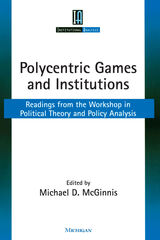 Polycentric Games and Institutions: Readings from the Workshop in Political Theory and Policy Analysis
Michael D. McGinnis, Editor
University of Michigan Press, 2000 Polycentric Games and Institutions summarizes contributions to the analysis of institutions made by scholars associated with the Workshop in Political Theory and Policy Analysis at Indiana University.
The readings in this volume illustrate several varieties of institutional analysis. Each reading builds upon the foundation of game theory to address similar sets of questions concerning institutions and self-governance. The chapters in the first section lay out interrelated frameworks for analysis. Section two illustrates the normative component of institutions and their effects on human behavior. Readings in the following two sections detail how these frameworks have been applied to models of specific situations. Section five presents a modeling exercise exploring the functions of monitoring and enforcement, and the sixth section discusses approaches to the problems of complexity that confront individuals playing polycentric games. The final readings provide overviews of experimental research on the behavior of rational individuals.
Contributors include Arun Agrawal, Sue E. S. Crawford, Clark C. Gibson, Roberta Herzberg, Larry L. Kiser, Michael McGinnis, Stuart A. Marks, Elinor Ostrom, Vincent Ostrom, James Walker, Franz J. Weissing, John T. Williams, and Rick Wilson.
Michael McGinnis is Associate Professor, Department of Political Science and Co-Associate Director, Workshop in Political Theory and Policy Analysis, Indiana University.
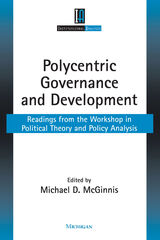 Polycentric Governance and Development: Readings from the Workshop in Political Theory and Policy Analysis
Michael D. McGinnis, Editor
University of Michigan Press, 1999 How do local communities collectively manage those resources that are most important to their own survival or prosperity? Wherever they are located, all communities face similar dilemmas of collective action: how can common goals be realized despite the presence of individual incentives to over-exploit common resources for private gain? The readings collected in Polycentric Governance and Development show the achievements of scholars associated with the Workshop in Political Theory and Policy Analysis at Indiana University in understanding how communities have dealt with dilemmas of collective action. Their analyses also have profound implications for broader issues of development.
The central insight of the research collected in the volume is this: much can be learned by a careful examination of the ways in which local communities have organized themselves to solve collective problems, achieve common aspirations, and resolve conflicts. The first two sections deal with efforts to manage water and other common-pool resources on a relatively small scale. Section three moves to the macro-level of analysis, with particular attention given to examples of constitutional order from Africa, while section four demonstrates that local organizations and informal networks can play essential roles in furthering democratization and development. The concluding section addresses issues at the national level, by linking the practical world of resource management and development policy to the abstract world of the policy analyst. This collection of essays is designed to illustrate how all the pieces fit together and to suggest connections among multiple levels and modes of analysis.
Contributors include Paula C. Baker, William Blomquist, Larry L. Kiser, Ronald J. Oakerson, Elinor Ostrom, Vincent Ostrom, Roger B. Parks, Stephen L. Percy, Charles M. Tiebout, Martha Vandivort, Robert Warren, Gordon P. Whitaker, and Rick Wilson.
Michael McGinnis is Associate Professor, Department of Political Science and Co-Associate Director, Workshop in Political Theory and Policy Analysis, Indiana University.
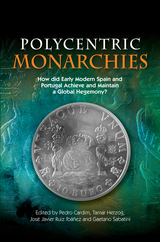 Polycentric Monarchies: How Did Early Modern Spain and Portugal Achieve and Maintain a Global Hegemony?
Edited by Pedro Cardim, Tamar Herzog, and Jose Javier Ruiz Ibanez
Sussex Academic Press, 2022 In the early 16th century - having succeeded in establishing themselves in Europe, Asia, Africa, and the Americas - Spain and Portugal became the first imperial powers on a worldwide scale. Between 1580 and 1640, when these two entities were united, they achieved an almost global hegemony, constituting the largest political force in Europe and abroad. Although they lost their political primacy in the 17th century, both monarchies survived and were able to enjoy a relative success until the early 19th century. This collection answers the question as to how and why their cultural and political legacies persist to date. Part I of the book focuses on the construction of the monarchy, examining the ways different territories were integrated into the imperial network, mainly by inquiring to what extent local political elites maintained their autonomy and to what a degree they shared power with the royal administration. Part II deals primarily with the circulation of ideas, models, and people, observing them as they move in space. It also examines how they coincide in the court, which was a veritable melting pot in which the various administrations that served the kings and the various territories belonging to the monarchy developed their own identities, fought for recognition in what they considered their proper place in the global hierarchy. Part III explains the forms of dependence and symbiosis that were established with other European powers, such as Genoa and the United Provinces. Attempting to reorient the politics of these States, political and financial co-dependence often led to bad economic choices. The book discards the portrayal of the Iberian monarchies as the accumulation of many bilateral relations arranged in a radial pattern, arguing that these political entities were polycentric - that is to say, they allowed for the existence of many different centers which interacted and thus participated in the making of empire. The resulting political structure was complex and unstable, albeit with a general adhesion to a discourse of loyalty to king and religion.
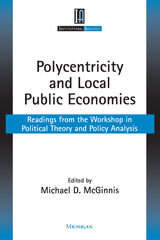 Polycentricity and Local Public Economies: Readings from the Workshop in Political Theory and Policy Analysis
Michael D. McGinnis, Editor
University of Michigan Press, 1999 The study of metropolitan political economies in the United States has provided much of the intellectual inspiration for the research of the Workshop in Political Theory and Policy Analysis at Indiana University. The readings collected in Polycentricity and Local Public Economies present an overview of the results of this research program on police services and metropolitan governance as well as enduring lessons for institutional analysis and public policy.
Polycentricity and Local Public Economies presents both explorations of broad general concepts and specific empirical analyses. The many interactions between the two modes of analysis provide valuable insights for the reader. Readings in the first section cover basic theoretical concepts and analytical distinctions that apply to the study of institutions generally. The second section includes conceptual pieces specifically addressed to the nature of governance in metropolitan areas, while section three reports on a series of empirical studies of police performance. Section four again broadens the focus to highlight the overall organization of local public economies. The final section discusses conceptual advances that have continuing relevance for research and policy debates.
Contributors include William Blomquist, Kathryn Firmin-Sellers, Roy Gardner, Dele Olowu, Elinor Ostrom, Vincent Ostrom, Amos Sawyer, Edella Schlager, Shui Yan Tang, Wai Fung Lam, and James S. Wunsch.
Michael McGinnis is Associate Professor, Department of Political Science and Co-Associate Director, Workshop in Political Theory and Policy Analysis, Indiana University.
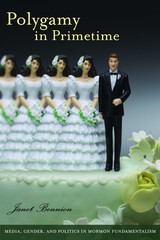 Polygamy in Primetime: Media, Gender, and Politics in Mormon Fundamentalism
Janet Bennion
Brandeis University Press, 2011 Recently, polygamy has become a “primetime” phenomenon. Television shows like Big Love and Sister Wives demonstrate the “progressive” side of polygamy, while horror stories from victims of abusive marriages offer less upbeat experiences among the adherents of the fundamentalist Church of Jesus Christ of Latter Day Saints (FLDS Church). Bennion, herself a product of Mormon polygamy, seeks to dispel the myths and misinformation that surround this topic. This study, based on seventeen years of ethnographic research among the Allred Group (Apostolic United Brethren) and on an analysis of recent blog journal entries written by a range of polygamous women, examines the variety and complexity of contemporary Mormon fundamentalist life in the Intermountain West. Although Bennion highlights problems associated with polygamy, including evidence that some forms are at high risk for father-child incest, she challenges the media-driven depiction of plural marriage as uniformly abusive and harmful to women. She shows how polygamist families can provide both economic security and social sustenance for some women, and how the authority of the husband can be undermined by the stresses of providing for multiple wives and children. Going beyond the media’s obsession with the sexual aspects of polygamous marriage, Bennion offers a rich description of familial, social, and legal contexts. Throughout, she makes the case for legalizing polygamy in order to allow greater visibility and regulation of the practice.
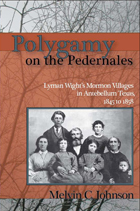 Polygamy on the Pedernales: Lyman Wight's Mormon Village in Antebellum Texas
Melvin C. Johnson
Utah State University Press, 2006 In the wake of Joseph Smith Jr.’s murder in 1844, his following splintered, and some allied themselves with a maverick Mormon apostle, Lyman Wight. Sometimes called the "Wild Ram of Texas," Wight took his splinter group to frontier Texas, a destination to which Smith, before his murder, had considered moving his followers, who were increasingly unwelcome in the Midwest. He had instructed Wight to take a small band of church members from Wisconsin to establish a Texas colony that would prepare the ground for a mass migration of the membership. Having received these orders directly from Smith, Wight did not believe the former’s death changed their significance. If anything, he felt all the more responsible for fulfilling what he believed was a prophet’s intention. Antagonism with Brigham Young and the other LDS apostles grew, and Wight refused to join with them or move to their new gathering place in Utah. He and his small congregation pursued their own destiny, becoming an interesting component of the Texas frontier, where they had a significant economic role as early millers and cowboys and a political one as a buffer with the Comanches. Their social and religious practices shared many of the idiosyncracies of the larger Mormon sect, including polygamous marriages, temple rites, and economic cooperatives. Wight was a charismatic but authoritarian and increasingly odd figure, in part because of chemical addictions. His death in 1858 while leading his shrinking number of followers on yet one more migration brought an effective end to his independent church.
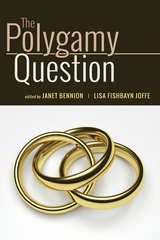 The Polygamy Question
Janet Bennion
Utah State University Press, 2015 The practice of polygamy occupies a unique place in North American history and has had a profound effect on its legal and social development. The Polygamy Question explores the ways in which indigenous and immigrant polygamy have shaped the lives of individuals, communities, and the broader societies that have engaged with it. The book also considers how polygamy challenges our traditional notions of gender and marriage and how it might be effectively regulated to comport with contemporary notions of justice. The contributors to this volume—scholars of law, anthropology, sociology, political science, economics, and religious studies—disentangle diverse forms of polygamy and polyamory practiced among a range of religious and national backgrounds including Mormon and Muslim. They chart the harms and benefits these models have on practicing women, children, and men, whether they are independent families or members of coherent religious groups. Contributors also address the complexities of evaluating this form of marriage and the ethical and legal issues surrounding regulation of the practice, including the pros and cons of legalization. Plural marriage is the next frontier of North American marriage law and possibly the next civil rights battlefield. Students and scholars interested in polygamy, marriage, and family will find much of interest in The Polygamy Question.
Contributors include Kerry Abrams, Martha Bailey, Lori Beaman, Janet Bennion, Jonathan Cowden, Shoshana Grossbard, Melanie Heath, Debra Majeed, Rose McDermott, Sarah Song, and Maura Irene Strassberg.
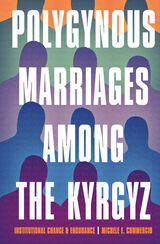 Polygynous Marriages among the Kyrgyz: Institutional Change and Endurance
Michele E. Commercio
University of Pittsburgh Press, 2022 During Soviet rule, the state all but imposed atheism on the primarily Islamic people of Kyrgyzstan and limited the tradition of polygyny—a form of polygamy in which one man has multiple wives. Polygyny did continue under communism, though chiefly under concealment. In the decades since the fall of the Soviet Union, the practice has reemerged. Based on extensive fieldwork, Polygynous Marriages among the Kyrgyz argues that this marriage practice has become socially acceptable and widely dispersed not only because it is rooted in customary law and Islamic practice, but because it can also enable men and women to meet societal expectations and solve practical economic problems that resulted from the fall of the Soviet Union. Michele E. Commercio’s analysis suggests the normalization of polygyny among the Kyrgyz in contemporary Kyrgyzstan is due both to institutional change in the form of altered governmental rules and expectations and to institutional endurance in the form of persistent hegemonic constructions of gender.
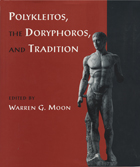 Polykleitos, the Doryphoros, and Tradition
Warren G. Moon
University of Wisconsin Press, 1995
Polykleitos of Argos, who flourished between 450 and 420 BC, is one of the most celebrated sculptors of classical Greece. A philosopher and theoretician as well as a sculptor, Polykleitos sought to capture in his statues the ideal proportions of the human body, and his work was frequently copied by later artists. This richly illustrated volume of superb essays by art historians, classical scholars, and archaeologists discusses Polykleitos’ life and influence, his intellectual and cultural milieu, and his best-known work, the Doryphoros, or “Spearbearer.”
Polykleitos, the Doryphoros, and Tradition displays an impressive range of approaches, beginning with commentary on the artistic and philosophical antecedents that influenced Polykleitos’ own aesthetic, as well as the role of contemporary Greek anatomical knowledge in his representation of the human form. Many of the essays offer extended analysis and detailed illustration of his surviving sculptures, later copies of his work, and reflections of his style in sculpture, paintings, coins, and other art in Greece, Italy, and Asia Minor. Several essays offer an extended discussion of Polykleitos’ original bronze Doryphoros, its pose, its relation to other spearbearer sculptures, and the fine Roman marble copy of it now at the Minneapolis Institute of Arts.
The volume as a whole is a visually and intellectually appealing work that will interest not only specialists but general readers interested in the art of ancient Greece. This volume resulted from a 1989 symposium held at the University of Wisconsin–Madison and the Minneapolis Institute of Arts.
Polynesia, 900–1600
Madi Williams
Arc Humanities Press, 2021 This book provides a concise overview of the history of Polynesia, focusing on New Zealand and its outlying islands, during the period 900–1600. It provides a thematic examination of Polynesia to avoid placing the region’s history into an inaccurate, linear Western chronology. The themes of movement and migration, adaptation and change, and development and expansion offer the optimal means of understanding Polynesia during this time. Through this innovative and unique perspective on Polynesian history, which has not been previously undertaken, the reader is encouraged to think about regions outside Europe in relation to the premodern period.
Polynomial Methods in Optimal Control and Filtering
Kenneth Hunt
The Institution of Engineering and Technology, 1993 This book aims to demonstrate the power and breadth of polynomial methods in control and filtering. Direct polynomial methods have previously received little attention compared with the alternative Wiener-Hopf transfer-function method and the statespace methods which rely on Riccati equations.
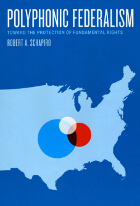 Polyphonic Federalism: Toward the Protection of Fundamental Rights
Robert A. Schapiro
University of Chicago Press, 2009 The relationship between the states and the national government is among the most contested issues in the United States. And questions about where power should reside, how decisions should be made, and how responsibility should be allocated have been central to the American experiment in federalism. In Polyphonic Federalism, Robert A. Schapiro defends the advantages of multiple perspectives in government, arguing that the resulting “polyphony” creates a system that is more efficient, democratic, and protective of liberties.
This groundbreaking volume contends that contemporary views of federalism are plagued by outmoded dualist notions that seek to separate state and federal authority. Instead, Schapiro proposes a polyphonic model that emphasizes the valuable interaction of state and federal law, one that more accurately describes the intersecting realities of local and national power. Through an analysis of several legal and policy debates, Polyphonic Federalism demonstrates how a multifaceted government can best realize the potential of federalism to protect fundamental rights.
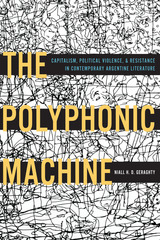 The Polyphonic Machine: Capitalism, Political Violence, and Resistance in Contemporary Argentine Literature
Niall H.D. Geraghty
University of Pittsburgh Press, 2018 Focusing on the work of the Argentine authors César Aira, Marcelo Cohen, and Ricardo Piglia, The Polyphonic Machine conducts a close analysis of the interrelations between capitalism and political violence in late twentieth-century Argentina. Taking a long historical view, the book considers the most recent Argentine dictatorship of 1976–1983 together with its antecedents and its after-effects, exploring the transformations in power relations and conceptions of resistance which accompanied the political developments experienced throughout this period. By tracing allusive fragments of Argentine political history and drawing on a range of literary and theoretical sources Geraghty proposes that Aira, Cohen and Piglia propound a common analysis of Argentine politics during the twentieth century and construct a synergetic philosophical critique of capitalism and political violence. The book thus constitutes a radical reappraisal of three of the most important authors in contemporary Argentine literature and contributes to the philosophical and historical understanding of the most recent Argentine military government and their systematic plan of state terrorism.
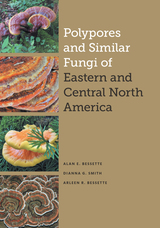 Polypores and Similar Fungi of Eastern and Central North America
Alan E. Bessette, Dianna Smith, and Arleen R. Bessette
University of Texas Press, 2021 <p>This is the first color-illustrated guide to polypores and similar fungi specific to the eastern and central regions of the United States and Canada. Welcoming and comprehensive, it accurately presents the currently available information about polypores, emphasizes identification based primarily on macroscopic field characters, and includes observational data drawn from the authors’ extensive experience. It includes new species and genera; addresses changing nomenclature; and provides details about polypores’ biology, morphology, composition, role as parasites, interactions with various arthropods, and purported medicinal applications. The book also highlights how changes in geology, soil structure, and plant species due to factors such as continental drift and climate change have affected the evolution of polypores. Featuring more than 240 species of polypores, extensive and easy-to-use dichotomous keys, and more than 300 color illustrations and multiple maps and line drawings, it is a must-have for amateur and professional mycologists, forest service personnel, mycophagists, and anyone interested in learning more about this remarkable group of fungi.</p>
A Pompeian Herbal: Ancient and Modern Medicinal Plants
By Wilhelmina Feemster Jashemski,
University of Texas Press, 1999 When workmen excavating the ruins of Pompeii eagerly gathered the native medicinal plants growing there, Wilhelmina Jashemski discovered that this was another example of the continuity of life in the shadow of Vesuvius. Many of the plants used for herbal medicine around Pompeii today are the same ones that ancient authorities such as Pliny the Elder and Dioscorides recommended for treating the same types of disorders. In this book, Jashemski presents an herbal of thirty-six medicinal plants, most of them known to the ancients and still employed today. She describes each plant's contemporary medicinal uses and compares them to ancient practices as recorded in literary sources. Scientific, English, and Italian names and the plant's mythological associations complete the entries, while elegant, full-page portraits depict each plant visually.
 Pompeii: Public and Private Life
Paul Zanker
Harvard University Press, 1999 Pompeii's tragedy is our windfall: an ancient city fully preserved, its urban design and domestic styles speaking across the ages. This richly illustrated book conducts us through the captured wonders of Pompeii, evoking at every turn the life of the city as it was 2,000 years ago.
When Vesuvius erupted in 79 A.D. its lava preserved not only the Pompeii of that time but a palimpsest of the city's history, visible traces of the different societies of Pompeii's past. Paul Zanker, a noted authority on Roman art and architecture, disentangles these tantalizing traces to show us the urban images that marked Pompeii's development from country town to Roman imperial city. Exploring Pompeii's public buildings, its streets and gathering places, we witness the impact of religious changes, the renovation of theaters and expansion of athletic facilities, and the influence of elite families on the city's appearance. Through these stages, Zanker adeptly conjures a sense of the political and social meanings in urban planning and public architecture.
The private houses of Pompeii prove equally eloquent, their layout, decor, and architectural detail speaking volumes about the life, taste, and desires of their owners. At home or in public, at work or at ease, these Pompeians and their world come alive in Zanker's masterly rendering. A provocative and original reading of material culture, his work is an incomparable introduction to urban life in antiquity.
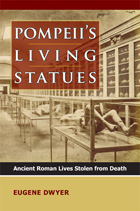 Pompeii's Living Statues: Ancient Roman Lives Stolen from Death
Eugene Dwyer
University of Michigan Press, 2010 In AD 79, Mt. Vesuvius erupted in two stages. While the first stage was incredibly destructive, it was the second stage, a so-called pyroclastic flow, that inundated Pompeii with a combination of superheated gases, pumice, and rocks, killing tens of thousands of people and animals and burying them in ash and mud. During excavations of the town in 1863, Giuseppe Fiorelli, the director of the dig, poured plaster of paris into a cavity under the soil revealed by a workman's pick. When the plaster set and the mound was uncovered, all were amazed to see the secret that the ground had held for 1,800 years: a detailed cast of an ancient Pompeian such as no one had seen before, frozen in the instant of dying and complete in every respect, including outlines of the clothes he was wearing at the time of the destruction. The bodies, photographed and exhibited in the specially built Pompeii Museum, completely changed the world's ideas of life in ancient Italy. Pompeii's Living Statues is a narrative account, supported by contemporary documents, of the remarkable discovery of those ancient victims preserved in the volcanic mud of Vesuvius. Eugene Dwyer examines these casts and related records, the originals of a number of which (along with their museum) were lost in World War II bombing. As he considers the casts as archaeological and cultural pieces, he also discusses Pompeii and its artifacts in the context of Italian unification and party politics, the development of modern excavation methods, and the challenges of maintaining a very large archaeological site. Dwyer's clear organization and writing style, combined with a collection of photographs and engravings, make for a fascinating exploration of Pompeii and its victims.
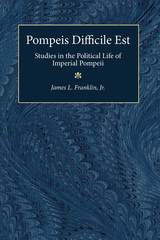 Pompeis Difficile Est: Studies in the Political Life of Imperial Pompeii
James L. Franklin, Jr.
University of Michigan Press, 2001 In describing the intensity of political life in ancient Pompeii, Cicero remarks, "at Pompeii it's difficult" (Pompeis difficile est). Drawing on thousands of fragmentary writings--campaign posters, graffiti, inscriptions, and business receipts--recovered in the excavations of lava- and mud-covered Pompeii, James L. Franklin assembles evidence from the eras of emperors Augustus through Vespasian to prove the validity of Cicero's statement.
By collecting, sifting, and cross-referencing these varied documents, Franklin proves it possible to trace the major political alliances of the times, explore the remains of their houses, and find traces of their personalities. A few families, like the powerful Holconii, developers of the region's most famous grape vine, prove to have been steady players throughout Pompeii's history; but most families rose and fell within two generations at most. Chapters examine the men and families most prominent in each imperial period, including an analysis of their houses, and concludes with family trees. The documents themselves, elsewhere difficult to access, are prominently featured and translated in the text, making these discussions available and vivid to all readers.
This book is the first such attempt to cross-reference and animate all kinds of writing found at this legendary site. Outside of the city of Rome itself, this is the largest collection of writing from Roman antiquity, and it has lain mostly unexamined in the course of three centuries of excavations at Pompeii. This volume will interest not only students of Pompeii and classical scholars, but also historians, political scientists, sociologists, and enthusiasts of human behavior of all eras.
James L. Franklin is Professor of Classical Studies, Indiana University.
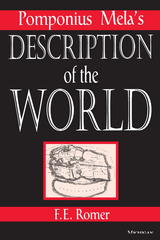 Pomponius Mela's Description of the World
F. E. Romer
University of Michigan Press, 1998 The Description of the World (Chorographia), written by Pomponius Mela, was last translated into English over 400 years ago, and is the earliest surviving geographical work in Latin. Although first published at the height of the Roman Empire, in roughly 44 C.E., Pomponius Mela's work circulated during Europe's great Age of Exploration. His description is in the form of a voyage around the three "known" continents--Africa, Asia, and Europe. Mela integrates geographical description with more familiar historical, cultural, and mythological information. F. E. Romer's translation and commentary on this work help the reader to appreciate the intellectual and physical shape of the ancient world as Mela and the Romans perceived it.
Frank Romer's introduction assesses Mela as a literary and geographic writer, while his translation matches Mela's style. Mela knows of the Chinese and reports geographical and cultural information about Sri Lanka and India, as well as Mediterranean and European locales that are less remote to his experience. The outer edges of all the continents, including Europe, however, remained unfamiliar to the Romans, and it is on the inhabited world's outer edges that the creatures of legend and mythology were believed to live. Romer's commentary clarifies specific ideas raised in the text. He identifies and explains issues, and he points the reader to ancient sources and modern studies.
This new study will intrigue students and teachers of ancient history. This edition of Mela's geography will be of interest to map lovers, historians, classicists, and anyone interested in history of travel, geography, and education.
F.E. Romer is Professor and Chair of the Department of Foreign Languages and Literatures, East Carolina University. He is the author of numerous articles and has received awards for both his writing and teaching.
Pond and Brook: A Guide to Nature in Freshwater Environments
Michael J. Caduto
University Press of New England, 1990 Designed specifically for the amateur naturalist and filled with hands-on projects and activities, Pond and Brook introduces the readers to the intriguing world of freshwater life. Michael Caduto’s keen eye investigates all common freshwater environments, from wetlands and deep lakes to streams and vernal ponds. An important feature of the book is its holistic approach to both living and non-living components of freshwater environments, and how they fit together to weave an ecological whole. Readers will learn the unique properties of water, the basic principles vital to understanding aquatic life, and the origin of freshwater habitats.
 Ponderosa: Big Pine of the Southwest
Sylvester Allred
University of Arizona Press, 2015 For hundreds of years, the massive ponderosa pine of the U.S. Southwest has left multitudes in awe. After spending nearly three decades researching among these trees, Sylvester Allred shares his wealth of experience in the southwestern ponderosa pine forests with the world in Ponderosa. Ponderosa is the first of its kind to provide an introduction to the natural and human histories of the ponderosa pine forests of the Southwest that is accessible to all who wish to enjoy the forests. The book offers knowledge on elemental aspects of the forests, such as the structure of the trees, as well as theoretical perspectives on issues such as climate change. Included are discussions of biogeography, ecology, and human and natural history, illustrated by over fifty color photographs throughout. Allred presents his observations as if he is recalling his thoughts over the course of a walk in a ponderosa pine forest. His imagery-saturated prose provides an informal and enjoyable approach to discovering the history and environment of the ponderosa pine. Using a concise, straightforward writing style, Allred invites readers to explore the forests with him. Ponderosa includes: - More than 50 color photos
- Learn how to estimate the age of a tree
- See the reptiles, birds, and mammals that make their home in ponderosa pine forests
- Much more!
 Pont-de-Montvert: Social Structure and Politics in a French Village
Patrice L.-R. Higonnet
Harvard University Press, 1971 Pont-de-Montvert is a small and shrunken Protestant village in an isolated part of the Cévennes mountains of Southern France. In 1700, the village was a complicated world where some fifteen hundred landless peasants, yeomen peasants, artisans, bourgeois, and nobles had unequal rights, unequal responsibilities, and different perceptions of politics. Today, Pont-de-Montvert is a much smaller, classless society, where social differences have little to do with politics and are due more to personal worth than to inherited wealth or status.
In the seventeenth century, both rich and poor of Pont-de-Montvert had their own politics; one century later, at the time of the French Revolution, the political differences had vanished though the social ones remained. During the nineteenth century, the social structure was transformed, as were its connections with politics.
In this book, P. L.-R. Higonnet explains these changes and describes the conditions of life for different people at different times in a village that is both a part of France and a world unto itself.
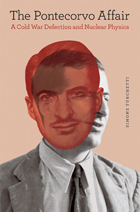 The Pontecorvo Affair: A Cold War Defection and Nuclear Physics
Simone Turchetti
University of Chicago Press, 2012 In the fall of 1950, newspapers around the world reported that the Italian-born nuclear physicist Bruno Pontecorvo and his family had mysteriously disappeared while returning to Britain from a holiday trip. Because Pontecorvo was known to be an expert working for the UK Atomic Energy Research Establishment, this raised immediate concern for the safety of atomic secrets, especially when it became known in the following months that he had defected to the Soviet Union. Was Pontecorvo a spy? Did he know and pass sensitive information about the bomb to Soviet experts? At the time, nuclear scientists, security personnel, Western government officials, and journalists assessed the case, but their efforts were inconclusive and speculations quickly turned to silence. In the years since, some have downplayed Pontecorvo’s knowledge of atomic weaponry, while others have claimed him as part of a spy ring that infiltrated the Manhattan Project. The Pontecorvo Affair draws from newly disclosed sources to challenge previous attempts to solve the case, offering a balanced and well-documented account of Pontecorvo, his activities, and his possible motivations for defecting. Along the way, Simone Turchetti reconsiders the place of nuclear physics and nuclear physicists in the twentieth century and reveals that as the discipline’s promise of military and industrial uses came to the fore, so did the enforcement of new secrecy provisions on the few experts in the world specializing in its application.
Pony: A Play
Sylvan Oswald
Northwestern University Press, 2025 A seminal work of trans theater brought to the page for the first time
When Pony, a formerly incarcerated trans guy, moves to a small rural town to start a new life, he quickly becomes entangled with its isolated community. He starts to fall for a waitress who is obsessed with a local murder; he must comply with a butch social worker who doesn’t understand him; and he is pursued by a young trans man who thinks Pony could be the father he always wanted. Amid this whirlwind of fear and desire, Pony must find the strength to confront the stories he's been told about masculinity, violence, and self-worth. With a new preface by the author on searching for queer and trans community in the theater, and an afterword by critic Miriam Felton-Dansky contextualizing its place in contemporary theater, Pony is a seminal work of trans theater exploring questions of generational difference, class, and gender on an epic scale.
The Pooh Perplex
Frederick Crews
University of Chicago Press, 2003 In this devastatingly funny classic, Frederick Crews skewers the ego-inflated pretensions of the schools and practitioners of literary criticism popular in the 1960s, including Freudians, Aristotelians, and New Critics. Modeled on the "casebooks" often used in freshman English classes at the time, The Pooh Perplex contains twelve essays written in different critical voices, complete with ridiculous footnotes, tongue-in-cheek "questions and study projects," and hilarious biographical notes on the contributors. This edition contains a new preface by the author that compares literary theory then and now and identifies some of the real-life critics who were spoofed in certain chapters.
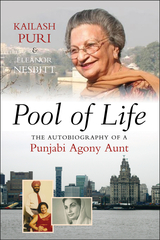 Pool of Life: The Autobiography of a Punjabi Agony Aunt
Kailash Puri
Sussex Academic Press, 2022 Eleanor Nesbitt's introduction contextualises the life of Kailash Puri, Punjabi author and agony aunt, providing the story of the book itself and connecting the narrative to the history of the Punjabi diaspora and themes in Sikh Studies. She suggests that representation of the stereotypical South Asian woman as victim needs to give way to a nuanced recognition of agency, multiple voices and a differentiated experience. The narrative presents sixty years of Kailash's life. Her memories of childhood in West Punjab evoke rural customs and religious practices consistent with recent scholarship on 'Punjabi religion' rather than with the currently dominant Sikh discourse of a religion sharply distinguished from Hindu society. Her marriage, as a shy 15-year-old, with no knowledge of English, to a scientist, Gopal Puri, brought ever-widening horizons as husband and wife moved from India to London, and later to West Africa, before returning to the UK in 1966. This life experience, and Gopal's constant encouragement, brought confidence to write and publish numerous stories and articles. Kailash writes of the contrasting experiences of life as an Indian in the UK of the 1940s and the 1960s. She points up differences between her own outlook and the life-world of the post-war community of Sikhs from East Punjab now living in the West. In their distress and dilemmas many people consulted Kailash for assistance, and the descriptive narrative of her responses and advice and increasingly public profile provides insight into Sikhs' experience in their adopted country. In later years, as grandparents and established citizens of Liverpool, Kailash and Gopal revisited their ancestral home, now in Pakistan - a reflective and moving experience. An Afterword by Eleanor contextualises the current UK Sikh scene. The book includes a glossary of Punjabi words and suggestions for further reading.
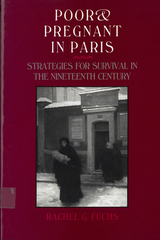 Poor and Pregnant in Paris: Strategies for Survival in the Nineteenth Century
Rachel G Fuchs
Rutgers University Press, 1992 Rachel Fuchs shows how poor urban women in Paris negotiated their environment, and in some respects helped shape it, in their attempt to cope with their problems of poverty and pregnancy. She reveals who the women were and provides insight into the nature of their work and living arrangements. With dramatic detail, and drawing on actual court testimonies, Fuchs portrays poor women's childbirth experiences, their use of charity and welfare, and their recourse to abortion and infanticide as desperate alternatives to motherhood. Fuchs also provides a comprehensive description of philanthropic and welfare institutions and outlines the relationship between the developing welfare state and official conceptions of womanhood. She traces the evolution of a new morality among policymakers in which secular views, medical hygiene, and a new focus on the protection of children replaced religious morality as a driving force in policy formation. Combining social, intellectual, and medical history, this study of poor mothers in nineteenth-century society illuminates both class and gender relations in Paris, and illustrates the connection between social policy and the way ordinary women lived their lives.
The Poor Are Not Us: Poverty and Pastoralism in Eastern Africa
David M. Anderson
Ohio University Press, 1999 Eastern African pastoralists often present themselves as being egalitarian, equating cattle ownership with wealth. By this definition “the poor are not us”, poverty is confined to non-pastoralist, socially excluded persons and groups.
Exploring this notion means discovering something about self-perceptions and community consciousness, how pastoralist identity has been made in opposition to other modes of production, how pastoralists want others to see them and how they see themselves.
This collection rejects the premise of pastoral egalitarianism and poses questions about the gradual creep of poverty, changing patterns of wealth and accumulation, the impact of diminishing resources on pastoral communities and the impact of external values of land, labor, and livestock.
 The Poor Belong to Us: Catholic Charities and American Welfare
Dorothy M. Brown and Elizabeth McKeown
Harvard University Press, 1997 Between the Civil War and World War II, Catholic charities evolved from volunteer and local origins into a centralized and professionally trained workforce that played a prominent role in the development of American welfare. Dorothy Brown and Elizabeth McKeown document the extraordinary efforts of Catholic volunteers to care for Catholic families and resist Protestant and state intrusions at the local level, and they show how these initiatives provided the foundation for the development of the largest private system of social provision in the United States.
It is a story tightly interwoven with local, national, and religious politics that began with the steady influx of poor Catholic immigrants into urban centers. Supported by lay organizations and by sympathetic supporters in city and state politics, religious women operated foundling homes, orphanages, protectories, reformatories, and foster care programs for the children of the Catholic poor in New York City and in urban centers around the country.
When pressure from reform campaigns challenged Catholic child care practices in the first decades of the twentieth century, Catholic charities underwent a significant transformation, coming under central diocesan control and growing increasingly reliant on the services of professional social workers. And as the Depression brought nationwide poverty and an overwhelming need for public solutions, Catholic charities faced a staggering challenge to their traditional claim to stewardship of the poor. In their compelling account, Brown and McKeown add an important dimension to our understanding of the transition from private to state social welfare.
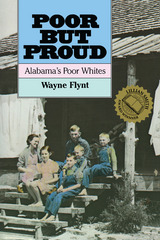 Poor but Proud: Alabama's Poor Whites
Wayne Flynt
University of Alabama Press, 2001 First published in 1989 by The University of Alabama Press, Poor but Proud was met with critical acclaim and awarded the 1990 Lillian Smith prize in nonfiction, as well as being named a CHOICE Outstanding Academic Book. This new paperback version will make the classic work available for general readers, bookstores, and classrooms.
Wayne Flynt addresses the life experiences of poor whites through their occupations, society, and culture. He explores their family structure, music, religion, folklore, crafts, and politics and describes their attempts to resolve their own problems through labor unions and political movements. He reveals that many of our stereotypes about poor whites are wildly exaggerated; few were derelicts or "white trash." Even though racism, emotionalism, and a penchant for violence were possible among poor whites, most bore their troubles with dignity and self-respect - working hard to eventually lift themselves out of poverty.
The phrase "poor but proud" aptly describes many white Alabamians who settled the state and persisted through time. During the antebellum years, poor whites developed a distinctive culture on the periphery of the cotton belt. As herdsmen, subsistence farmers, mill workers, and miners, they flourished in a society more renowned for its two-class division of planters and slaves. The New Deal era and the advent of World War II broke the long downward spiral of poverty and afforded new opportunities for upward mobility.
 Poor Dancer's Almanac: Managing Life & Work in the Performing Arts
David R. White, Lise Friedman, and Tia Tibbitts Levinson, eds.
Duke University Press, 1993 Combining how-to information with voices of working artists, Poor Dancer's Almanac is an essential resource tool and source of inspiration for all independent artists—choreographers, performance artists, dancers producers, managers. Created in 1975 and revised again in 1984 this handbook has come to serve as one of the most crucial references for the arts community. In the most up-to-date and comprehensive edition yet, a broad range of issues affecting performers and producers is addressed, interwoven with newly added, more personal contributions from major figures in the performance world.
Organized and compiled by Dance Theater Workshop in New York and authored by more than fifty leading professionals in the field, Poor Dancer's Almanac offers in-depth discussions of everything from personal livelihood to professional career development, from medical care, housing, and unemployment insurance to management, touring, and legal issues. Each chapter is followed by an appendix containing extensive and varied listings, giving names and addresses for finding internship programs, videotaping, flooring, grant-writing, and reference publications. Although centered on New York the Almanac includes lists of resources and contacts for many other states—California, Washington D.C, Illinois, Minnesota, North Carolina, Texas, Florida, and Ohio. An entirely new section has been added dealing with health issues and the crisis of AIDS.
In personal anecdotes and essays various performers offer their own insights and stories—both of struggles and of successes—to bring to life the practical realities of working in the arts. We hear from Merce Cunningham, Eric Bogosian, Karen Finley, Paul Zaloom, and Bill T. Jones, among others. Illustrated with original drawings by Janie Geiser, this thoroughly revised and updated edition of the Poor Dancer's Almanac will continue to serve as one of the leading sources for those concerned with managing life and work in the performing arts.
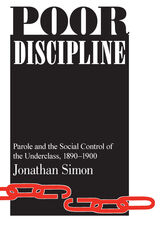 Poor Discipline
Jonathan Simon
University of Chicago Press, 1993 This powerful book reveals how modern strategies of punishment—and, by all accounts, their failure—relate to political and economic transformations in society at large. Jonathan Simon uses the practice of parole in California as a window to the changing historical understanding of what a corrections system does and how it works. Because California is representative of policies and practices on a national level, Simon explicitly presents his findings within a national framework.
When parole first emerged as a corrections strategy in the nineteenth century, work was supposed to keep ex-prisoners out of trouble. This strategy foundered in the changing economy after World War II. What followed was a rehabilitative strategy, where the clinical expertise of the parole agent replaced the discipline of the industrial labor market in defining and controlling criminal deviance. Today, Simon argues, as drastic changes in the economy have virtually locked out an entire class, rehabilitation has given way to mere management. The effect is isolation of the offender, either in jail or in an underclass community; the result is an escalating cycle of imprisonment, destabilization, and insecurity.
No significant improvement in the current penal crisis can be expected until we better understand the relationship between punishment and social order, a relationship which this book explores in theoretical, historical, and practical detail.
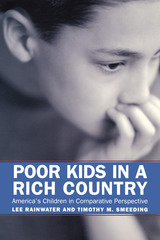 Poor Kids in a Rich Country: America's Children in Comparative Perspective
Lee Rainwater
Russell Sage Foundation, 2003 In Poor Kids in a Rich Country, Lee Rainwater and Timothy Smeeding ask what it means to be poor in a prosperous nation - especially for any country's most vulnerable citizens, its children. In comparing the situation of American children in low-income families with their counterparts in fourteen other countries—including Western Europe, Australia, and Canada—they provide a powerful perspective on the dynamics of child poverty in the United States. Based on the rich data available from the transnational Luxembourg Income Study (LIS), Poor Kids in a Rich Country puts child poverty in the United States in an international context. Rainwater and Smeeding find that while the child poverty rate in most countries has been relatively stable over the past 30 years, child poverty has increased markedly in the United States and Britain—two of the world's wealthiest countries. The book delves into the underlying reasons for this difference, examining the mix of earnings and government transfers, such as child allowances, sickness and maternity benefits, unemployment insurance, and other social assistance programs that go into the income packages available to both single- and dual-parent families in each country. Rainwater and Smeeding call for policies to make it easier for working parents to earn a decent living while raising their children—policies such as parental leave, childcare support, increased income supports for working poor families, and a more socially oriented education policy. They make a convincing argument that our definition of poverty should not be based solely on the official poverty line—that is, the minimum income needed to provide a certain level of consumption—but on the social and economic resources necessary for full participation in society. Combining a wealth of empirical data on international poverty levels with a thoughtful new analysis of how best to use that data, Poor Kids in a Rich Country will provide an essential tool for researchers and policymakers who make decisions about child and family policy.
Poor Law to Poverty Program: Economic Security Policy in Britain and the United States
Samuel Mencher
University of Pittsburgh Press, 1968 The welfare state is a pervasive and controversial aspect of contemporary society. Samuel Mencher provides a historical and philosophical background on the growth of welfare policy through its sources, concepts, and specific programs. He covers a period from the English Poor Law of the sixteenth century through contemporary times-viewing changing attitudes toward poverty, new concepts on the nature of man and the influence of scientific thought-and also discusses mercantilism, laissez-faire, utilitarianism, liberalism, socialism, romanticism, social Darwinism, and modern capitalism as major influences on the growth of economic security policy.
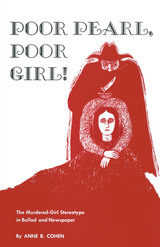 Poor Pearl, Poor Girl!: The Murdered-Girl Stereotype in Ballad and Newspaper
By Anne B. Cohen
University of Texas Press, 1973 The year was 1896, and nineteenth-century journalists called the murder of Pearl Bryan the "Crime of the Century." From the day Pearl's headless body was found to the execution of her murderers on the gallows, the details of the murder fascinated newspaper reporters and ballad composers alike. Often glossing over the facts of the case, newspaper accounts presented the events according to stereotypes that were remarkably similar to those found in well-known murdered-girl ballads, such as "Pretty Polly," "Omie Wise," and "The Jealous Lover." Events, characters, motivations, and plot were presented through this framework: the simple country girl led astray by a clever degenerate. Nearly all variants of the Pearl Bryan ballad point the same moral: Young ladies now take warning
Young men are so unjust,
It may be your best lover
But you know not whom to trust. Representations of this formula appear in such diverse genres as the ballad "Poor Ellen Smith" and the novel An American Tragedy. As Anne Cohen demonstrates, both newspaper accounts and ballads tell the Pearl Bryan story from the same moral stance, express the same interpretation of character, and are interested in the same details. Both distort facts to accommodate a shared pattern of storytelling. This pattern consists of a plot formula—the murdered-girl formula—that is accompanied by stereotyped scenes, actors, and phrases. The headless body—surely the most striking element in the Pearl Bryan case—is absent from those ballads that have survived. Anne Cohen contends that a decapitated heroine does not belong to the formula—a murdered heroine, yes, but not a decapitated one. Similarly, newspapers made much of Pearl's "innocence" and tended to downplay the second murderer. Only one murderer, the lover, belongs to the stereotype. Poor Pearl, Poor Girl! is a ballad study conducted on historic- geographic lines; that is, it seeks to trace the history and interrelations of a series of ballad texts and to relate the ballads directly to their ideological and historical context in the American scene. It also compares the narrative techniques of ballad composition with the techniques of other forms of popular narrative, especially newspaper journalism.
 Poor People's Lawyers in Transition
Katz, Jack
Rutgers University Press, 1982 Jack Katz has written the first case study of legal assistance lawyers—commonly known as poverty lawyers—and their agencies. Focusing on legal services for the poor over the last 100 years in Chicago, the city with the most experienced large staff of poverty reform lawyers in the nation, Katz examines what organizational and personal experiences make these lawyers either passive or entrepreneurial in their drive for equal justice for the poor. This historical and participant-observation study traces the social foundations of the aspiration for equal justice. In the 1880s, when lawyers were first hired by organizations specifically to assist the poor, the legal status of poverty was virtually non-existent. Today the legal status of the poor is defined affirmatively in scores of statues, in masses of highly differentiated administrative regulations, and in a rich case law of judicial decisions made in the last 20 years. During the rise and fall of the Progressive era, throughout the Depression and the New Deal, in the midst of the explosive public activism of the Sixties, and even after the internment of the War on Poverty, legal assistance lawyers have worked progressively toward the legalization of poverty. Recently, a disturbing irony has appeared in this progress. Legal assistance lawyers, especially the most aggressive and professionally creative, have proven less successful in eliminating poverty than in reorganizing the poor into a formal social category. This category is systematically, comprehensively, and predictably defined by law, and administratively maintained by the state in segregation from the working and middle classes.
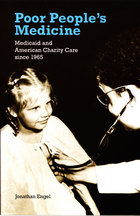 Poor People's Medicine: Medicaid and American Charity Care since 1965
Jonathan Engel
Duke University Press, 2006 Poor People’s Medicine is a detailed history of Medicaid since its beginning in 1965. Federally aided and state-operated, Medicaid is the single most important source of medical care for the poorest citizens of the United States. From acute hospitalization to long-term nursing-home care, the nation’s Medicaid programs pay virtually the entire cost of physician treatment, medical equipment, and prescription pharmaceuticals for the millions of Americans who fall within government-mandated eligibility guidelines. The product of four decades of contention over the role of government in the provision of health care, some of today’s Medicaid programs are equal to private health plans in offering coordinated, high-quality medical care, while others offer little more than bare-bones coverage to their impoverished beneficiaries. Starting with a brief overview of the history of charity medical care, Jonathan Engel presents the debates surrounding Medicaid’s creation and the compromises struck to allow federal funding of the nascent programs. He traces the development of Medicaid through the decades, as various states attempted to both enlarge the programs and more finely tailor them to their intended targets. At the same time, he describes how these new programs affected existing institutions and initiatives such as public hospitals, community clinics, and private pro bono clinical efforts. Along the way, Engel recounts the many political battles waged over Medicaid, particularly in relation to larger discussions about comprehensive health care and social welfare reform. Poor People’s Medicine is an invaluable resource for understanding the evolution and present state of programs to deliver health care to America’s poor.
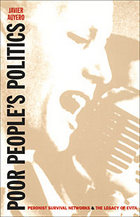 Poor People's Politics: Peronist Survival Networks and the Legacy of Evita
Javier Auyero
Duke University Press, 2000 “Political clientelism” is a term used to characterize the contemporary relationships between political elites and the poor in Latin America in which goods and services are traded for political favors. Javier Auyero critically deploys the notion in Poor People’s Politics to analyze the political practices of the Peronist Party among shantytown dwellers in contemporary Argentina.
Looking closely at the slum-dwellers’ informal problem-solving networks, which are necessary for material survival, and the different meanings of Peronism within these networks, Auyero presents the first ethnography of urban clientelism ever carried out in Argentina. Revealing a deep familiarity with the lives of the urban poor in Villa Paraíso, a stigmatized and destitute shantytown of Buenos Aires, Auyero demonstrates the ways in which local politicians present their vital favors to the poor and how the poor perceive and evaluate these favors. Having penetrated the networks, he describes how they are structured, what is traded, and the particular way in which women facilitate these transactions. Moreover, Auyero proposes that the act of granting favors or giving food in return for votes gives the politicians’ acts a performative and symbolic meaning that flavors the relation between problem-solver and problem-holder, while also creating quite different versions of contemporary Peronism. Along the way, Auyero is careful to situate the emergence and consolidation of clientelism in historic, cultural, and economic contexts.
Poor People’s Politics reexamines the relationship between politics and the destitute in Latin America, showing how deeply embedded politics are in the lives of those who do not mobilize in the usual sense of the word but who are far from passive. It will appeal to a wide range of students and scholars of Latin American studies, sociology, anthropology, political science, history, and cultural studies.
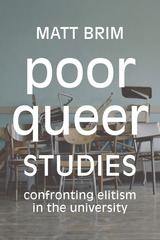 Poor Queer Studies: Confronting Elitism in the University
Matt Brim
Duke University Press, 2020 In Poor Queer Studies Matt Brim shifts queer studies away from its familiar sites of elite education toward poor and working-class people, places, and pedagogies. Brim shows how queer studies also takes place beyond the halls of flagship institutions: in night school; after a three-hour commute; in overflowing classrooms at no-name colleges; with no research budget; without access to decent food; with kids in tow; in a state of homelessness. Drawing on the everyday experiences of teaching and learning queer studies at the College of Staten Island, Brim outlines the ways the field has been driven by the material and intellectual resources of those institutions that neglect and rarely serve poor and minority students. By exploring poor and working-class queer ideas and laying bare the structural and disciplinary mechanisms of inequality that suppress them, Brim jumpstarts a queer-class knowledge project committed to anti-elitist and anti-racist education. Poor Queer Studies is essential for all of those who care about the state of higher education and building a more equitable academy.
Poor Relations: The Children of the State in Illinois, 1818-1990
Joan Gittens
University of Illinois Press, 1994
This comprehensive history traces the care of dependent, delinquent,
and disabled children in Illinois from the early nineteenth century to
current times, focusing on the dilemmas raised by both public intervention
and the lack of it. Joan Gittens explores the inadequacies of a system
that has allowed problems in the public care of children to recur regularly
but at the same time insists that the state's own history makes it clear
that the potential for improvements exists.
 Poor Relief: Why Giving People Money Is Not the Answer to Global Poverty
Heath Henderson
Harvard University Press, 2025 An economist challenges an emerging orthodoxy: the idea that the best way to alleviate poverty is simply to give people money.
A simple notion has become increasingly widespread in recent years: to lift people out of poverty, just give them money. Leading international organizations like the World Bank and United Nations endorse the use of cash transfers. So do Bill Gates, Mark Zuckerberg, and everyday philanthropists—the charity GiveDirectly has raised more than $800 million to distribute to households in a dozen countries.
Challenging this emergent wisdom, Heath Henderson argues that cash transfers—whether one-off grants or a “basic income” provided over a stretch of time—are a flawed response to global poverty. They risk displacing interventions that recipients themselves might prefer: if a community lacks access to clean water or high-quality healthcare, for instance, giving cash to households will not address the problem, which can be solved only by putting those funds toward public infrastructure. Cash transfers have also been linked to more direct harms, including increases in domestic violence, child labor, inflation, and even mortality.
The appeal of cash transfers is rooted in the idea that they avoid paternalism, letting the recipients of the money, rather than faraway donors, make choices for themselves. But as Henderson points out, such transfers substitute one form of paternalism for another, by assuming that markets know best. Poor Relief instead proposes looking beyond one-size-fits-all solutions toward a truly bottom-up alternative. Fixing global poverty is not just a matter of giving people money—it requires giving communities democratic power.
 Poor Things: How Those with Money Depict Those without It
Lennard J. Davis
Duke University Press, 2024 For generations most of the canonical works that detail the lives of poor people have been created by rich or middle-class writers like Charles Dickens, John Steinbeck, or James Agee. This has resulted in overwhelming depictions of poor people as living abject, violent lives in filthy and degrading conditions. In Poor Things, Lennard J. Davis labels this genre “poornography”: distorted narratives of poverty written by and for the middle and upper classes. Davis shows how poornography creates harmful and dangerous stereotypes that build barriers to social justice and change. To remedy this, Davis argues, poor people should write realistic depictions of themselves, but because of representational inequality they cannot. Given the obstacles to the poor accessing the means of publication, Davis suggests that the work should, at least for now, be done by “transclass” writers who were once poor and who can accurately represent poverty without relying on stereotypes and clichés. Only then can the lived experience of poverty be more fully realized.
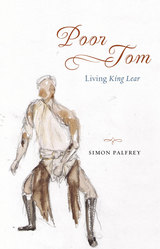 Poor Tom: Living "King Lear"
Simon Palfrey
University of Chicago Press, 2014 King Lear is perhaps the most fierce and moving play ever written. And yet there is a curious puzzle at its center. The figure to whom Shakespeare gives more lines than anyone except the king—Edgar—has often seemed little more than a blank, ignored and unloved, a belated moralizer who, try as he may, can never truly speak to the play’s savaged heart. He saves his blinded father from suicide, but even this act of care is shadowed by suspicions of evasiveness and bad faith.
In Poor Tom, Simon Palfrey asks us to go beyond any such received understandings—and thus to experience King Lear as never before. He argues that the part of Edgar is Shakespeare’s most radical experiment in characterization, and his most exhaustive model of both human and theatrical possibility. The key to the Edgar character is that he spends most of the play disguised, much of it as “Poor Tom of Bedlam,” and his disguises come to uncanny life. The Edgar role is always more than one person; it animates multitudes, past and present and future, and gives life to states of being beyond the normal reach of the senses—undead, or not-yet, or ghostly, or possible rather than actual. And because the Edgar role both connects and retunes all of the figures and scenes in King Lear, close attention to this particular part can shine stunning new light on how the whole play works.
The ultimate message of Palfrey’s bravura analysis is the same for readers or actors or audiences as it is for the characters in the play: see and listen feelingly; pay attention, especially when it seems as though there is nothing there.
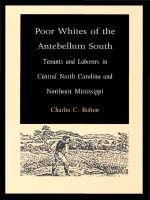 Poor Whites of the Antebellum South: Tenants and Laborers in Central North Carolina and Northeast Mississippi
Charles C. Bolton
Duke University Press, 1994 In Poor Whites of the Antebellum South, Charles C. Bolton gives a distinct voice to one of the most elusive groups in the society of the Old South. Bolton's detailed examination reveals much about the lives of these landless white tenants and laborers and their relationship to yeoman farmers, black slaves, free blacks and elite whites. Providing a provocative analysis of the failure of the Jeffersonian "yeoman ideal" of democracy in white-majority areas, this book also shows how poor whites represented a more significant presence on the political, economic, and social landscape than previously had been thought.
Looking at two specific regions--the "settled" central piedmont of North Carolina and the "frontier" of northeast Mississippi--Bolton describes how poor whites played an important, though circumscribed, role in the local economy. Dependent on temporary employment, they represented a troubling presence in a society based on the principles of white independence and black slavery. Although perceived by southern leaders as a threat, poor whites, Bolton argues, did not form a political alliance with either free or enslaved blacks because of numerous factors including white racism, kinship ties, religion, education, and mobility. A concluding discussion of the crisis of 1860-61 examines the rejection of secession by significant numbers of poor whites, as well as the implications for their future as the Old South turned toward the new.
Poor Whites of the Antebellum South sheds light on a group often neglected in southern history. It is an important contribution that will be of interest to all students and historians of the American South.
 The Poorhouse: Subsidized Housing in Chicago
Devereux Bowly Jr.
Southern Illinois University Press, 2012 Chicago seems an ideal environment for public housing because of the city’s relatively young age among major cities and well-deserved reputation for technology, innovation, and architecture. Yet The Poorhouse: Subsidized Housing in Chicago shows that the city’s experience on the whole has been a negative one, raising serious questions about the nature of subsidized housing and whether we should have it and, if so, in what form. Bowly, a native of the city, provides a detailed examination of subsidized housing in the nation’s third-largest city. Now in its second edition, The Poorhouse looks at the history of public housing and subsidized housing in Chicago from 1895 to the present day. Five new chapters that cover the decline and federal takeover of the Chicago Housing Authority, and its more recent “transformation,” which involved the demolition of the CHA family high-rise buildings and in some cases their replacement with low-risemixed income housing on the same sites. Fifty new photos supplement this edition.
Certificate of Excellence from the Illinois State Historical Society, 2013
 Pop: An Illustrated Novel
Robert Gipe
Ohio University Press, 2024 A coming-of-age story of hope, betrayal, and familial legacy set in rural Appalachia. Set in the run-up and aftermath of the 2016 election, Pop brings the Canard County trilogy to a close as Dawn, the young narrator of Gipe’s first novel, Trampoline, is now the mother of the seventeen-year-old Nicolette. Whereas Dawn has become increasingly agoraphobic as the internet persuades her the world is descending into chaos, Nicolette narrates an Appalachia where young people start businesses rooted in local food culture and work to build community. But Nicolette’s precocious rise in the regional culinary scene is interrupted when her policeman cousin violently assaults her, setting in motion a chain of events that threaten to destroy the family—and Canard County in the process. In the tradition of Gipe’s first two novels, Pop’s Appalachia is full of clear-eyed, caring, creative, and complicated people struggling to hang on to what is best about their world and reject what is not. Their adventures reflect an Appalachia that is overrun by outside commentators looking for stories to tell about the region—sometimes positive, sometimes negative, but almost always oversimplified.
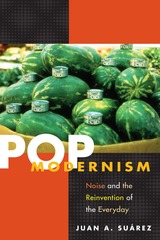 Pop Modernism: Noise and the Reinvention of the Everyday
Juan A. Suarez
University of Illinois Press, 2007 Pop Modernism examines the popular roots of modernism in the United States. Drawing on a wide range of materials, including experimental movies, pop songs, photographs, and well-known poems and paintings, Juan A. Suárez reveals that experimental art in the early twentieth century was centrally concerned with the reinvention of everyday life. Suárez demonstrates how modernist writers and artists reworked pop images and sounds, old-fashioned and factory-made objects, city spaces, and the languages and styles of queer and ethnic “others.” Along the way, he reinterprets many of modernism’s major figures and argues for the centrality of relatively marginal ones, such as Vachel Lindsay, Charles Henri Ford, Helen Levitt, and James Agee. As Suárez shows, what’s at stake is not just an antiquarian impulse to rescue forgotten past moments and works, but a desire to establish an archaeology of our present art, culture, and activism.
 Pop Music And The Press
Steve Jones
Temple University Press, 2002 Since the 1950s, writing about popular music has become a staple of popular culture. Rolling Stone, Vibe, and The Source as well as music columns in major newspapers target consumers who take their music seriously. Rapidly proliferating fanzines, websites, and internet discussion groups enable virtually anyone to engage in popular music criticism. Until now, however, no one has tackled popular music criticism as a genre of journalism with a particular history and evolution.Pop Music and the Press looks at the major publications and journalists who have shaped this criticism, influencing the public's ideas about the music's significance and quality. The contributors to the volume include academics and journalists; several wear both hats, and some are musicians as well. Their essays illuminate the complex relationships of the music industry, print media, critical practice, and rock culture. (And they repeatedly dispel the notion that being a journalist is the next best thing to being a rock star.)
 Pop Out: Queer Warhol
Jennifer Doyle, Jonathan Flatley, and Jose Esteban Muñoz, eds.
Duke University Press, 1996 Andy Warhol was queer in more ways than one. A fabulous queen, a fan of prurience and pornography, a great admirer of the male body, he was well known as such to the gay audiences who enjoyed his films, the police who censored them, the gallery owners who refused to show his male nudes, and the artists who shied from his swishiness, not to mention all the characters who populated the Factory. Yet even though Warhol became the star of postmodernism, avant-garde, and pop culture, this collection of essays is the first to explore, analyze, appreciate, and celebrate the role of Warhol’s queerness in the making and reception of his film and art. Ranging widely in approach and discipline, Pop Out demonstrates that to ignore Warhol’s queerness is to miss what is most valuable, interesting, sexy, and political about his life and work. Written from the perspectives of art history, critical race theory, psychoanalysis, feminist theory, cinema studies, and social and literary theory, these essays consider Warhol in various contexts and within the history of the communities in which he figured. The homoerotic subjects, gay audiences, and queer contexts that fuel a certain fascination with Warhol are discussed, as well as Batman, Basquiat, and Valerie Solanas. Taken together, the essays in this collection depict Warhol’s career as a practical social reflection on a wide range of institutions and discourses, including those, from the art world to mass culture, that have almost succeeded in sanitizing his work and his image. Contributors. Jennifer Doyle, Jonathan Flatley, Marcie Frank, David E. James, Mandy Merck, Michael Moon, José Esteban Muñoz, Eve Kosofsky Sedgwick, Brian Selsky, Sasha Torres, Simon Watney, Thomas Waugh
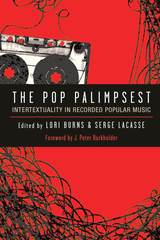 The Pop Palimpsest: Intertextuality in Recorded Popular Music
Lori Burns and Serge Lacasse, Editors
University of Michigan Press, 2018 Within popular music there are entire genres (jazz “standards”), styles (hip hop), techniques (sampling), and practices (covers) that rely heavily on references between music of different styles and genres. This interdisciplinary collection of essays covers a wide range of musical styles and artists to investigate intertextuality—the shaping of one text by another—in popular music. The Pop Palimpsest offers new methodologies and frameworks for the analysis of intertextuality in popular music, and provides new lenses for examining relationships between a variety of texts both musical and nonmusical. Enriched by perspectives from multiple subdisciplines, The Pop Palimpsest considers a broad range of intertextual relationships in popular music to explore creative practices and processes and the networks that intertextual practices create between artists and listeners.
 Pop Song Piracy: Disobedient Music Distribution since 1929
Barry Kernfeld
University of Chicago Press, 2011 The music industry’s ongoing battle against digital piracy is just the latest skirmish in a long conflict over who has the right to distribute music. Starting with music publishers’ efforts to stamp out bootleg compilations of lyric sheets in 1929, Barry Kernfeld’s Pop Song Piracy details nearly a century of disobedient music distribution from song sheets to MP3s. In the 1940s and ’50s, Kernfeld reveals, song sheets were succeeded by fake books, unofficial volumes of melodies and lyrics for popular songs that were a key tool for musicians. Music publishers attempted to wipe out fake books, but after their efforts proved unsuccessful they published their own. Pop Song Piracy shows that this pattern of disobedience, prohibition, and assimilation recurred in each conflict over unauthorized music distribution, from European pirate radio stations to bootlegged live shows. Beneath this pattern, Kernfeld argues, there exists a complex give and take between distribution methods that merely copy existing songs (such as counterfeit CDs) and ones that transform songs into new products (such as file sharing). Ultimately, he contends, it was the music industry’s persistent lagging behind in creating innovative products that led to the very piracy it sought to eliminate.
 Pop Song Piracy: Disobedient Music Distribution since 1929
Barry Kernfeld
University of Chicago Press, 2011 This is an auto-narrated audiobook version of this book.
The music industry’s ongoing battle against digital piracy is just the latest skirmish in a long conflict over who has the right to distribute music. Starting with music publishers’ efforts to stamp out bootleg compilations of lyric sheets in 1929, Barry Kernfeld’s Pop Song Piracy details nearly a century of disobedient music distribution from song sheets to MP3s. In the 1940s and ’50s, Kernfeld reveals, song sheets were succeeded by fake books, unofficial volumes of melodies and lyrics for popular songs that were a key tool for musicians. Music publishers attempted to wipe out fake books, but after their efforts proved unsuccessful they published their own. Pop Song Piracy shows that this pattern of disobedience, prohibition, and assimilation recurred in each conflict over unauthorized music distribution, from European pirate radio stations to bootlegged live shows. Beneath this pattern, Kernfeld argues, there exists a complex give and take between distribution methods that merely copy existing songs (such as counterfeit CDs) and ones that transform songs into new products (such as file sharing). Ultimately, he contends, it was the music industry’s persistent lagging behind in creating innovative products that led to the very piracy it sought to eliminate.
The Pop Theology of Videogames: Producing and Playing with Religion
Lars de Wildt
Amsterdam University Press, 2023 Young people in the West are more likely to encounter religion in videogames than in places of worship like churches, mosques or temples. Lars de Wildt interviews developers and players of games such as Assassin’s Creed to find out how and why the Pop Theology of Videogames is so appealing to modern audiences. Based on extensive fieldwork, this book argues that developers of videogames and their players engage in a ‘Pop Theology’ through which laymen reconsider traditional questions of religion by playing with them. Games allow us to play with religious questions and identities in the same way that children play at being a soldier, or choose to ‘play house.’ This requires a radical rethinking of religious questions as no longer just questions of belief or disbelief; but as truths to be tried on, compared, and discarded at will.
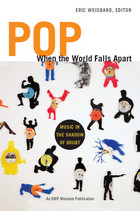 Pop When the World Falls Apart: Music in the Shadow of Doubt
Eric Weisbard, ed.
Duke University Press, 2012 Hearing Elvis Presley, Bob Dylan once said, was “like busting out of jail.” But what happens when popular music isn’t as simple as rock-and-roll rebellion? How does pop respond to such events as a decade-long war in Iraq and Hurricane Katrina? In Pop When the World Falls Apart, a diverse array of music writers, scholars, and enthusiasts reflect on popular music’s role—as commentary, as refuge, and as rallying cry—in times of military conflict, social upheaval, and cultural crisis. Drawn from presentations at the annual Experience Music Project Pop Conference—hailed by Robert Christgau as “the best thing that’s ever happened to serious consideration of pop music”—the essays in this book include inquiries into the sonic dimension of war in Iraq; the cultural life of jazz in post-Katrina New Orleans; Isaac Hayes’s reappropriation of a country song, “By the Time I Get to Phoenix,” as a symbol of black nationalism; and punk rock pranks played on record execs looking for the next big thing in central Virginia. Offering a diverse range of voices, perspectives, and approaches, this volume mirrors the eclecticism of pop itself. Contributors: Larry Blumenfeld , Austin Bunn, Nate Chinen, J. Martin Daughtry, Brian Goedde, Michelle Habell-Pallán, Jonathan Lethem, Eric Lott, Kembrew McLeod, Elena Passarello, Diane Pecknold, David Ritz, Carlo Rotella, Scott Seward, Tom Smucker, Greg Tate, Karen Tongson, Alexandra T. Vazquez, Oliver Wang, Eric Weisbard, Carl Wilson
 Pope and Devil: The Vatican's Archives and the Third Reich
Hubert Wolf
Harvard University Press, 2010 The Vatican’s dealings with the Weimar Republic and the Third Reich have long been swathed in myth and speculation. After almost seventy years, the crucial records for the years leading up to 1939 were finally opened to the public, revealing the bitter conflicts that raged behind the walls of the Holy See. Anti-Semites and philo-Semites, adroit diplomats and dogmatic fundamentalists, influential bishops and powerful cardinals argued passionately over the best way to contend with the intellectual and political currents of the modern age: liberalism, communism, fascism, and National Socialism. Hubert Wolf explains why a philo-Semitic association was dissolved even as anti-Semitism was condemned, how the Vatican concluded a concordat with the Third Reich in 1933, why Hitler’s Mein Kampf was never proscribed by the Church, and what factors surrounded the Pope’s silence on the persecution of the Jews.
In rich detail, Wolf presents astonishing findings from the recently opened Vatican archives—discoveries that clarify the relations between National Socialism and the Vatican. He illuminates the thinking of the popes, cardinals, and bishops who saw themselves in a historic struggle against evil. Never have the inner workings of the Vatican—its most important decisions and actions—been portrayed so fully and vividly.
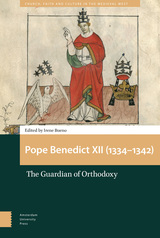 Pope Benedict XII (1334-1342): The Guardian of Orthodoxy
Edited by Irene Bueno
Amsterdam University Press, 2018 This book offers a unique overview on the career and work on Benedict XII, the third pope of Avignon. Benedict XII (ca. 1334-1342) was a key figure of the Avignon papal court, renowned for rooting out heretics and distinguishing himself as a refined theologian. During his reign, he faced the most significant religious and political challenges in the era of the Avignon papacy: theological quarrels, divisions and schisms within the Church, conflicts between European sovereigns, and the growth of Turkish power in the East. In spite of its diminished political influence, the papacy, which had recently moved to France, emerged as an institution committed to the defense and expansion of the Catholic faith in Europe and the East. Benedict made significant contributions to the definition of doctrine, the assessment of pontifical power in Western Europe, and the expansion of Catholicism in the East: in all these different contexts he distinguished himself as a true guardian of orthodoxy.
Pope Eugenius III (1145-1153): The First Cistercian Pope
Edited by Iben Fonnesberg-Schmidt and Andrew Jotischky
Amsterdam University Press, 2018 Elected pope in the wake of a rebellion, Eugenius III came to power as a relative unknown during a time of crisis. This book examines the controversial developments in papal justice and theological debate during his pontificate, his treatment of Cistercian monasteries, his relationships with France, Spain, and Rome, his work in the papal states, and the crusades. It offers a new view of an under-appreciated pope and the place of the church in a rapidly changing European society.
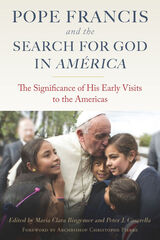 Pope Francis and the Search for God in America: The Significance of His Early Visits to the Americas
Maria Clara Bingemer
Catholic University of America Press, 2021 In Tutti Fratelli, Pope Francis has called again for a “culture of encounter,” But how should his theology, pastoral practice, and social message be understood and applied in the Church of the Americas, a single but complex reality that extends from South to North? This volume offers analyses from experts looking back to the Argentine pontiff’s first fateful encuentros in the Americas as a help for understanding the present reality of the Church in the Western Hemisphere. The group includes theologians, historians, and political scientists, and the unique contribution of the volume lies in the panoramic perspective offered by the book as a whole.
The initial essays set the stage for the volume as a whole, offering rich insight into Argentine and Latin American history, the world from which the Pope came and to which he returned in 2015, as well as surveying the impact of the Latin American “theology of the people” on the Pope’s visit to the U.S.
Additional essays address theological, historical, and pastoral engagements that cut across several of the visits. The final group of essays is dedicated to the visits themselves and is arranged in the order that they occurred. Pope Francis and the Search for God in América is offered to all the members of the Church in América, South and North, old and young, with the hope that it will spur even more thought, reflection, prayer, and service.
 Pope Francis and the Transformation of Health Care Ethics
Todd A. Salzman and Michael G. Lawler
Georgetown University Press, 2021 A call to reform Catholic health care ethics, inspired by the teachings of Pope Francis Since its first edition in 1948, the US Conference of Catholic Bishops’ Ethical and Religious Directives for Catholic Health Care Services (ERD) has guided Catholic institutions in the provision of health care that reflects both the healing ministry of Jesus and the Church’s understanding of human dignity. However, while the papacy of Pope Francis and the clerical sex-abuse scandal both profoundly impacted the Catholic Church, the latest edition of the ERD does not address or reflect these transformations. Now for the first time, Todd A. Salzman and Michael G. Lawler present an extended critical commentary on the 2018 ERD. They argue that it is problematic in a number of ways. First, the revised ERD continues to prioritize a rule-based over a personalist-based ethical method, with an emphasis on absolute norms that proscribe specific medical acts. Further, it does not take into account Pope Francis’s transforming ecclesiological, methodological, and anthropological visions, neither internally in Catholic health care institutions nor externally in collaborations between Catholic and non-Catholic health care institutions. Finally, the revised ERD provides no evidence that the bishops grasp how the clerical sex-abuse scandal and its cover-up have fundamentally undermined episcopal authority and credibility. Salzman and Lawler propose new ways forward for US Catholic health care ethics that prioritize human dignity as their guiding principle. As there is pluralism in Catholic definitions of human dignity, there must be pluralism in the norms and directives that facilitate realizing human dignity. Pope Francis’s emphasis on the virtues of mercy and care should move the ERD forward from a focus on absolute norms in medical ethics to a focus on virtues and principles to guide both patients and health care professionals in their discerned conscientious health care decisions.
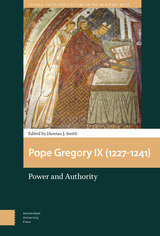 Pope Gregory IX (1227-1241): Power and Authority
Damian J. Smith
Amsterdam University Press, 2023 As Cardinal Hugo and as pope, Gregory was one of the dominant figures in the history of the papacy of the High Middle Ages. Coming to prominence under Pope Innocent III, Hugo played an important political role, particularly as legate on various occasions, as well as being a major promoter of the new religious orders. As pope, his battle with Emperor Frederick II is one of medieval history’s most absorbing conflicts. But he also acted as peacemaker, promoter of the Crusades, instigator of mission for the sake of conversion, refomer of the Curia, patron of arts and liturgy, and as a passionate advocate of Church reform. His decretal collection, the Liber Extra, was the most influential of the Middle Ages. A full examination of Gregory’s pontificate is very long overdue. The current volume brings together a team of international scholars, each of them expert in dealing with a particular aspect of the pontificate, and provides what will be a collection of studies of lasting scholarly value on a central figure of the medieval papacy.
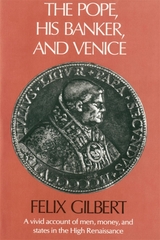 The Pope, His Banker, and Venice
Felix Gilbert
Harvard University Press, 1980 This study of Renaissance adventures and struggles against fate brings to life a brilliant age and its exemplars. It is a story of how several men, including Julius II, worked, intrigued, and made business deals against the backdrop of an Italy invaded by continental countries and England. The future of the once great Republic of Venice was at stake as it was besieged and in desperate need of allies. The Papacy switched sides, breaking the seemingly invincible and mostly foreign League of Cambrai, and saw that Venice was offered a loan by Agostino Chigi, the richest man of his time. The Pope's banker, as daring as Julius II, negotiated with the formidable communal rulers of Venice and Italy was kept from further dismemberment.
As a dramatic account that brings together diplomacy, war, business, and politics, viewed through one long entrepreneurial venture, this book is unique. It juxtaposes differing institutional structures and the various political ways among Italy's city states; it also brings into sharp focus the new men of the Renaissance. Their dealings and lifestyles were original and bold. They were successful against great odds and flaunted their new wealth and position in society in building great palaces and estates and becoming patrons of art. Felix Gilbert is a master teacher of history, and his new work is as luminous as the men and events he tells about.
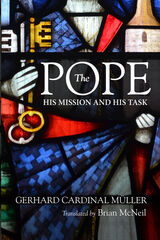 The Pope: His Mission and His Task
Gerhard Cardinal Muller
Catholic University of America Press, 2021 This book offers an introduction to the theological and historical aspects of the papacy, an office and institution that is unique in this world. Throughout its history up to our present time, the Petrine ministry is both fascinating and challenging to people, both inside and outside the Catholic Church.
Gerhard Cardinal Müller speaks from a particular and personal viewpoint, including his experience of working closely with the pope every day as Prefect of the Congregation for the Doctrine of the Faith. He addresses, in particular, those dimensions of the papal office which are crucial for understanding more deeply the pope as a visible principle of the church’s unity.
500 years after the Protestant reformation, the book offers insights into the ecumenical controversies about the papacy throughout the centuries, in their historical context. The book also exposes prejudices and cliches, and points to the authentic foundation of the Petrine ministry.
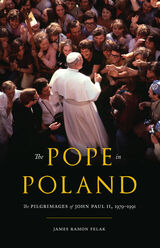 The Pope in Poland: The Pilgrimages of John Paul II, 1979-1991
James Ramon Felak
University of Pittsburgh Press, 2020 John Paul II was the first non-Italian pope in over 500 years, and the first Slavic pontiff in history. Shortly after his election to the papacy in 1978, he launched a series of visits to his native Poland, then in the midst of dramatic social changes that heralded the end of Communism. In this groundbreaking book, James Ramon Felak carefully examines the Pope’s first four visits to his homeland in June of 1979, 1983, 1987, and 1991 in the late Communist and immediate post-Communist period. Careful analysis of speeches, press coverage, and documents from the Communist Party, government, and police show how the Pope and the Communist authorities engaged one another. Felak gives equal attention to John Paul’s political and religious messages, highlighting how he astutely maneuvered between the rising hopes of the Polish people and the dangerous fears of a dying regime. The Pope in Poland recreates and explicates these dramatic visits that played a major role in the collapse of Communism in Poland as well as laid out a papal vision for Poland’s post-Communist future.
Pope John Paul II Speaks on Women
Brooke Williams Deely
Catholic University of America Press, 2014 In Pope John Paul II Speaks on Women, Brooke Williams Deely presents a comprehensive record of John Paul II's reflections. This collection brings to the forefront the full context and content of his original contributions. Since John Paul II encouraged women and men to expand what he has adumbrated, this book facilitates ongoing dialogue. The principle of the organization of the volume is chronological, compiling John Paul II's teachings on the subject of women arranged by date over the entire term of his Papacy. Since this influential Pope addressed the situation of women from the beginning of his pontificate, this overview of his writings and his spoken addresses best showcases the development and historical context of his thought.
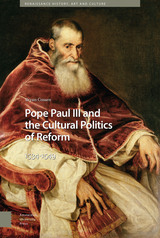 Pope Paul III and the Cultural Politics of Reform: 1534-1549
Bryan Cussen
Amsterdam University Press, 2020 When Paul III was elected in 1534, hopes arose across Christendom that this pope would at last reform and reunite the Church. During his fifteen-year reign, though, Paul's engagement with reform was complex and contentious. A work of cultural history, this book explores how cultural narratives of honour and tradition, including how honour played out in politics, significantly constrained Pope Paul and his chosen reformers in framing strategies for change. Indeed, the reformers' programme would have undermined the culture of honour and weakened Rome's capacity to ward off current threats of invasion. The study makes a provocative case that Paul called the Council of Trent to contain reform rather than promote it. Nevertheless, Paul and the Council did sow seeds of reform that eventually became central to the Counter-Reformation. This book thus sheds new light on a pope whose relationship to reform has long been regarded as an enigma.
 Pope.L: Showing Up to Withhold
The Renaissance Society at the University of Chicago
University of Chicago Press, 2014 Iconoclast and artist Pope.L uses the body, sex, and race as his materials the way other artists might use paint, clay, or bronze. His work problematizes social categories by exploring how difference is marked economically, socially, and politically. Working in a range of media from ketchup to baloney to correction fluid, with a special emphasis on performativity and writing, Pope.L pokes fun at and interrogates American society’s pretenses, the bankruptcy of contemporary mores, and the resulting repercussions for a civil society. Other favorite Pope.L targets are squeamishness about the human body and the very possibility of making meaning through art and its display.
Published to accompany his wonderfully inscrutable exhibition Forlesen at the Renaissance Society at the University of Chicago, Pope.L: Showing Up to Withhold is simultaneously an artist’s book and a monograph. In addition to reproductions of a number of his most recent artworks, it includes images of significant works from the past decade, and presents a forum for reflection and analysis on art making today with contributions by renowned critics and scholars, including Lawrie Balfour, Nick Bastis, Lauren Berlant, and K. Silem Mohammad.
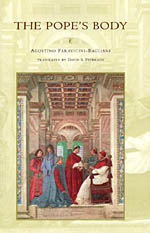 The Pope's Body
Agostino Paravicini-Bagliani
University of Chicago Press, 2000 In contrast to the role traditionally fulfilled by secular rulers, the pope has been perceived as an individual person existing in a body subject to decay and death, yet at the same time a corporeal representation of Christ and the Church, eternity and salvation. Using an array of evidence from the eleventh through the fifteenth centuries, Agostino Paravicini- Bagliani addresses this paradox. He studies the rituals, metaphors, and images of the pope's body as they developed over time and shows how they resulted in the expectation that the pope's body be simultaneously physical and metaphorical. Also included is a particular emphasis on the thirteenth century when, during the pontificate of Boniface VIII (1294-1303), the papal court became the focus of medicine and the natural sciences as physicians devised ways to protect the pope's health and prolong his life.
Masterfully translated from the Italian, this engaging history of the pope's body provides a new perspective for readers to understand the papacy, both historically and in our own time.
Popular Abstracts
Ray B. Browne
University of Wisconsin Press, 1978
Popular Abstracts is a reference tool providing access to information appearing in past issues of three journals published by the Bowling Green Popular Press. Abstracts are included for each article appearing in the first ten volumes of The Journal of Popular Culture (1967–1977), the first five volumes of The Journal of Popular Film (1972–1977), and the first four volumes of Popular Music and Society (1971–1975).
Popular Annuals of Eastern North America, 1865–1914
Peggy Cornett Newcomb
Harvard University Press, 1985 Using the evidence of written documents, seed and plant lists, catalogues, and illustrations, the author attempts to show which annuals were popular and how they were used in the fifty-year period following the Civil War. Several commercial seed lists are reproduced to document the changing styles of gardening.
Popular Arthurian Traditions
Sally K. Slocum
University of Wisconsin Press, 1992 From medieval history and romance through various twentieth-century renderings, this collection of essays considers themes, characters, and events of the legend and the meanings they impart. Sir Thomas Malory, Chrétien de Troyes, Mark Twain, Thomas Berger, Marion Zimmer Bradley, C. J. Cherryh, and other prose writers are discussed as are comic books and other genres. Film interpretations, photographic illustrations, and musical expressions receive analytical attention, as do poetic, religious, and mythic uses of the Arthurian world.
 The Popular Arts
Stuart Hall and Paddy Whannel
Duke University Press, 2018 When it first appeared in 1964, Stuart Hall and Paddy Whannel's The Popular Arts opened up an almost unprecedented field of analysis and inquiry into contemporary popular culture. Counter to the prevailing views of the time, Hall and Whannel recognized popular culture's social importance and considered it worthy of serious study. In their analysis of everything from Westerns and the novels of Mickey Spillane, Ian Fleming, and Raymond Chandler to jazz, advertising, and the television industry, they were guided by the belief that studying popular culture demanded an ethical evaluation of the text and full attention to its properties. In so doing, they raised questions about the relation of culture to society and the politics of taste and judgment in ways that continue to shape cultural studies. Long out of print, this landmark text highlights the development of Hall's theoretical and methodological approach while adding a greater understanding of his work. This edition also includes a new introduction by Richard Dyer, who contextualizes The Popular Arts within the history of cultural studies and outlines its impact and enduring legacy.
 Popular Bohemia: Modernism and Urban Culture in Nineteenth-Century Paris
Mary Gluck
Harvard University Press, 2005 A radical reconceptualization of modernism, this book traces the appearance of the modern artist to the Paris of the 1830s and links the emergence of an enduring modernist aesthetic to the fleeting forms of popular culture. Contrary to conventional views of a private self retreating from history and modernity, Popular Bohemia shows us the modernist as a public persona parodying the stereotypes of commercial mass culture. Here we see how the modern artist—alternately assuming the roles of the melodramatic hero, the urban flâneur, the female hysteric, the tribal primitive—created his own version of an expressive, public modernity in opposition to an increasingly repressive and conformist bourgeois culture. And here we see how a specifically modern aesthetic culture in nineteenth-century Paris came about, not in opposition to commercial popular culture, but in close alliance with it.
Popular Bohemia revises dominant historical narratives about modernism from the perspective of a theoretically informed cultural history that spans the period between 1830 and 1914. In doing so, it reconnects the intellectual history of avant-garde art with the cultural history of bohemia and the social history of the urban experience to reveal the circumstances in which a truly modernist culture emerged.
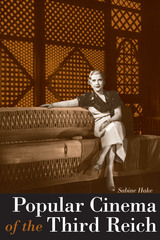 Popular Cinema of the Third Reich
By Sabine Hake
University of Texas Press, 2002 Too often dismissed as escapist entertainment or vilified as mass manipulation, popular cinema in the Third Reich was in fact sustained by well-established generic conventions, cultural traditions, aesthetic sensibilities, social practices, and a highly developed star system—not unlike its Hollywood counterpart in the 1930s. This pathfinding study contributes to the ongoing reassessment of Third Reich cinema by examining it as a social, cultural, economic, and political practice that often conflicted with, contradicted, and compromised the intentions of the Propaganda Ministry. Nevertheless, by providing the illusion of a public sphere presumably free of politics, popular cinema helped to sustain the Nazi regime, especially during the war years. Rather than examining Third Reich cinema through overdetermined categories such as propaganda, ideology, or fascist aesthetics, Sabine Hake concentrates on the constituent elements shared by most popular cinemas: famous stars, directors, and studios; movie audiences and exhibition practices; popular genres and new trends in set design; the reception of foreign films; the role of film criticism; and the representation of women. She pays special attention to the forced coordination of the industry in 1933, the changing demands on cinema during the war years, and the various ways of coming to terms with these filmic legacies after the war. Throughout, Hake's findings underscore the continuities among Weimar, Third Reich, and post-1945 West German cinema. They also emphasize the codevelopment of German and other national cinemas, especially the dominant Hollywood model.
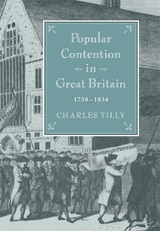 Popular Contention in Great Britain, 1758-1834
Charles Tilly
Harvard University Press, 1995 Between 1750 and 1840 ordinary British people abandoned such time-honored forms of protest as collective seizures of grain, the sacking of buildings, public humiliation, and physical abuse in favor of marches, petition drives, public meetings, and other sanctioned routines of social movement politics. The change created--perhaps for the first time anywhere--mass participation in national politics.
Charles Tilly is the first to address the depth and significance of the transmutations in popular collective action during this period. As he unravels the story of thousands of popular struggles and their consequences, he illuminates the dynamic relationships of an industrializing, capitalizing, proletarianizing economy; a war-making, growing, increasingly interventionist state; and an internal history of contention that spawned such political entrepreneurs as Francis Place and Henry Hunt. Tilly's research rests on a catalog of more than 8,000 "contentious gatherings" described in British periodicals, plus ample documentation from British archives and historical monographs.
The author elucidates four distinct phases in the transformation to mass political participation and identifies the forms and occasions for collective action that characterized and dominated each. He provides rich descriptions not only of a wide variety of popular protests but also of such influential figures as John Wilkes, Lord George Gordon, William Cobbett, and Daniel O'Connell. This engaging study presents a vivid picture of the British populace during a pivotal era.
Popular Culture: An Introductory Text
Edited by Jack Nachbar and Kevin Lause
University of Wisconsin Press, 1992 Popular Culture: An Introductory Text provides the means for a new examination of the different faces of the American character in both its historical and contemporary identities. The text is highlighted by a series of extensive introductions to various categories of popular culture and by essays that demonstrate how the methods discussed in the introductions can be applied. This volume is an exciting beginning for the study of the materials of everyday life that define our culture and confirm our individual senses of identity.
 Popular Culture in America
Paul Buhle, Editor
University of Minnesota Press, 1987
Popular Culture in America was first published in 1987. Minnesota Archive Editions uses digital technology to make long-unavailable books once again accessible, and are published unaltered from the original University of Minnesota Press editions.
This book collects some of the best work from the journal Cultural Correspondence (1975–83), which editor Paul Buhle calls "the first political journal of culture to assume its readers (and writers) watched television." The twenty-four contributors are part of a new generation of cultural critics and historians who are self-conscious products of the mass culture of the fifties and sixties. Their work attempts to update an elementary democratic principle - that people seek understanding and solutions, real or fanciful, through the mechanisms available to them. Although these writers condemn the manipulative qualities of commercial culture, they just as vehemently reject most of what has passed for Marxist (or liberal or conservative) orthodoxy on popular culture. Americans, they argue, have had a unique opportunity as well as a unique need to make the most of popular culture; the collective cultural experience is our only shared past. The richness and vitality of that culture is the focus of this book.
The thirty-four essays work toward an understanding of American mass culture not through abstraction but by exploring the real pleasures of ordinary people's lives. Pulp literature (utopian and horror themes, sports and nurse novels, and contemporary science fiction); radio thrillers; TV horror movies: television evangelists; sitcoms; music (polka, country-western, blues, jazz, and rock 'n roll); comic strips (Krazy Kat, Dick Tracy, Zippy); women's humor—these and other topics are given sensitive, detailed—sometimes humorous—attention. Paul Buhle's essay, "The 1960s Meet the 1980s," discusses popular culture scholarship, drawing on a wide range of theory—the Frankfort School, art history, literary criticism, and social science approaches. Buhle argues for the importance of this scholarship as a way of understanding "that missed connection between the cultural promise of a richly diverse, democratic society and the reality at hand."
Popular Culture in the Middle Ages
Smith
University of Wisconsin Press, 1986 The culture of the Middle Ages was as complex, if not as various, as our own, as the essays in this volume ably demonstrate. The essays cover a wide range of tipics, from church sculpture as "advertisement" to tricks and illusions as "homeeconomics."
 Popular Culture Theory and Methodology: A Basic Introduction
Edited by Harold E. Hinds, Marilyn F. Motz, and Angela M.S. Nelson
University of Wisconsin Press, 2006 Since its birth in the 1960s, the study of popular culture has come a long way in defining its object, its purpose, and its place in academe. Emerging along the margins of a scholarly establishment that initially dismissed anything popular as unworthy of serious study-trivial, formulaic, easily digestible, escapist-early practitioners of the discipline stubbornly set about creating the theoretical and methodological framework upon which a deeper understanding could be founded. Through seminal essays that document the maturation of the field as it gradually made headway toward legitimacy, Popular Culture Theory and Methodology provides students of popular culture with both the historical context and the critical apparatus required for further growth. For all its progress, the study of popular culture remains a site of healthy questioning. What exactly is popular culture? How should it be studied? What forces come together in producing, disseminating, and consuming it? Is it always conformist, or has it the power to subvert, refashion, resist, and destabilize the status quo? How does it differ from folk culture, mass culture, commercial culture? Is the line between "high" and "low" merely arbitrary? Do the popular arts have a distinctive aesthetics? This collection offers a wide range of responses to these and similar questions. Edited by Harold E. Hinds, Jr., Marilyn F. Motz, and Angela M. S. Nelson, Popular Culture Theory and Methodology charts some of the key turning points in the "culture wars" and leads us through the central debates in this fast developing discipline. Authors of the more than two dozen studies, several of which are newly published here include John Cawelti, Russel B. Nye, Ray B. Browne, Fred E. H. Schroeder, John Fiske, Lawrence Mintz, David Feldman, Roger Rollin, Harold Schechter, S. Elizabeth Bird, and Harold E. Hinds, Jr. A valuable bibliography completes the volume.
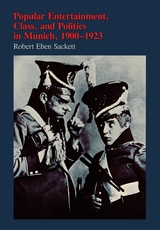 Popular Entertainment, Class, and Politics in Munich, 1900–1923
Robert Eben Sackett
Harvard University Press, 1982 From the turn of the century until 1923, the year of the National Socialist putsch, popular entertainment in Munich reflected the sentiments and ideas of its largely middle-class audience. While industrialization, rapid urbanization, World War I, and the German Revolution of 1918–19 created an atmosphere of turbulent change, performances on Munich's popular stages gave voice to the continuity of several basic attitudes: patriotism; nostalgia for a preindustrial, rural community; hostility toward Jews; and increasing anxiety over social status. In songs, monologues, skits, and one-act plays, popular entertainers articulated views common to Munich's traditional middle class of tradesmen and shopkeepers and its “new” or white-collar middle class of clerks and minor officials. Folksingers Karl Valentin and Weiss Ferdl serve as examples of this relationship between politics and culture. They shared their audience's class background and sympathies, and in the cabarets and music halls their songs dealt with vexed social and political issues.
This intriguing book in cultural history adds to our understanding of social conditions preparing the way for political change. A model case study, it explores the roots of Nazism in a large urban setting.
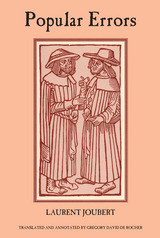 Popular Errors
Laurent Joubert
University of Alabama Press, 1989 Laurent Joubert was an important figure in the medical world of the French Renaissance. Born in 1529, he became a doctor at age 29 and shortly thereafter was appointed personal physician to Catherine de Medici and later became physician to three French monarchs. Joubert was an educator as well as a physician, and he wrote several works of medical literature, including his most controversial work, Erreurs populaires. While the work focuses on popular misconceptions concerning medicine and physicians in France in the 1500s, it also represents a wealth of information on the social, economic, political, and religious worldviews that framed and thus supported the development and conduct of medical science. Gregory de Rocher’s skill as a translator brings this highly readable and very funny book to life. Many topics central to Joubert’s thesis in the 1500s remain contemporary themes in the popular and scholarly literature of the 1980s.
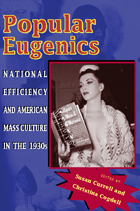 Popular Eugenics: National Efficiency and American Mass Culture in the 1930s
Susan Currell
Ohio University Press, 2006 The motto “Eugenics is the self-direction of human evolution” was part of the logo of the Second International Congress of Eugenics, held in 1921. However, by the 1930s, the disturbing legacy of this motto had started to reveal itself in the construction of national identities in countries throughout the world. Popular Eugenics is a fascinating look at how such tendencies emerged within the rhetoric, ideology, and visual aesthetics of U.S. mass culture during the 1930s, offering detailed analysis of the way that eugenics appeared within popular culture and images of modernity, particularly during the Depression era.
The essays in this generously illustrated collection demonstrate how, after the scientific foundations of the eugenics movement had been weakened in the 1930s, eugenic beliefs spread into the popular media, including newspapers, movies, museum exhibits, plays, and novels, and even fashion shows and comic strips.
Popular Eugenics shows that eugenic thought persisted in science and culture as well as in social policy and goes a long way toward explaining the durability of eugenic thinking and its effects on social policy in the United States. Popular Eugenics will be of interest to scholars and students in a broad range of disciplines, especially American literature and history, popular culture, media studies, and the history of science.
Popular Exhibitions, Science and Showmanship, 1840-1910
Joe Kember
University of Pittsburgh Press, 2012 Victorian culture was characterized by a proliferation of shows and exhibitions. These were encouraged by the development of new sciences and technologies, together with changes in transportation, education and leisure patterns. The essays in this collection look at exhibitions and their influence in terms of location, technology and ideology.
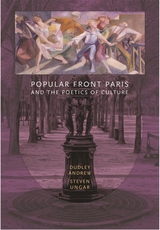 Popular Front Paris and the Poetics of Culture
Dudley Andrew and Steven Ungar
Harvard University Press, 2005 The story of Paris in the 1930s seems straightforward enough, with the Popular Front movement leading toward the inspiring 1936 election of a leftist coalition government. The socialist victory, which resulted in fundamental improvements in the lives of workers, was then derailed in a precipitous descent that culminated in France's capitulation before the Nazis in June 1940. Yet no matter how minutely recounted, this "straight story" clarifies only the political activity behind which turbulent cultural currents brought about far-reaching changes in everyday life and the way it is represented.
In this book, Dudley Andrew and Steven Ungar apply an evocative "poetics of culture" to capture the complex atmospherics of Paris in the 1930s. They highlight the new symbolic forces put in play by technologies of the illustrated press and the sound film—technologies that converged with efforts among writers (Gide, Malraux, Céline), artists (Renoir, Dalí), and other intellectuals (Mounier, de Rougemont, Leiris) to respond to the decade's crises.
Their analysis takes them to expositions and music halls, to upscale architecture and fashion sites, to traditional neighborhoods, and to overseas territories, the latter portrayed in metropolitan exhibits and colonial cinema. Rather than a straight story of the Popular Front, they have produced something closer to the format of an illustrated newspaper whose multiple columns represent the breadth of urban life during this critical decade at the end of the Third French Republic.
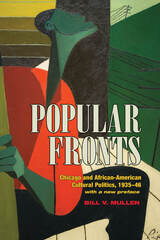 Popular Fronts: Chicago and African-American Cultural Politics, 1935-46
Bill V. Mullen
University of Illinois Press, 2015 The Communist International's Popular Front campaign of the 1930s brought to the fore ideas that resonated in Chicago's African American community. Indeed, the Popular Front not only connected to the black experience of the era, but outlasted its Communist Party affiliation to serve as both model and inspiration for a postwar cultural insurrection led by African Americans. With a new preface Bill V. Mullen updates his dynamic reappraisal of a critical moment in American cultural history. Mullen's study includes reassessments of the politics of Richard Wright's critical reputation and a provocative reading of class struggle in Gwendolyn Brooks' A Street in Bronzeville. He also takes an in-depth look at the institutions that comprised Chicago's black popular front: the Chicago Defender, the period's leading black newspaper; Negro Story, the first magazine devoted to publishing short stories by and about African Americans; and the WPA-sponsored South Side Community Art Center.
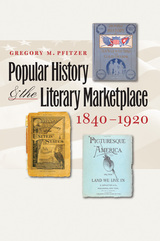 Popular History and the Literary Marketplace, 1840–1920
Gregory M. Pfitzer
University of Massachusetts Press, 2008 Prior to the mid-nineteenth century, most Americans "heard" rather than "read" national history. They absorbed lessons from the past more readily by attending Patriots' Day orations and anniversary commemorations than by reading expensive, multivolume works of patrician historians. By the 1840s, however, innovations in publishing led to the marketing of inexpensive, mass-produced "popular" histories that had a profound influence on historical literacy and learning in the United States. In this book, Gregory M. Pfitzer charts the rise and fall of this genre, demonstrating how and why it was born, flourished, and then became unpopular over time.
Pfitzer begins by exploring how the emergence of a new literary marketplace in the mid-nineteenth century affected the study of history in America. Publishers of popular works hoped to benefit from economies of scale by selling large numbers of inexpensive books at small profit. They hired authors with substantial literary reputations to make the past accessible to middle-class readers. The ability to write effectively for wide audiences was the only qualification for those who dominated this field. Privileging narration and effusive literary style over dispassionate prose, these artists adapted their favorite fictional and poetic conventions with an ease that suggests the degree to which history was viewed as literary art in the nineteenth century.
Beginning as a small cottage industry, popular histories sold in the hundreds of thousands by the 1890s. In an effort to illuminate the cultural conditions for this boom, Pfitzer focuses on the business of book making and book promotion. He analyzes the subscription sales techniques of book agents as well as the aggressive prepublication advertising campaigns of the publishers, including the pictorial embellishments they employed as marketing devices.
He also examines the reactions of professional historians who rejected the fictionalizing and poetic tendencies of popular history, which they equated with loose and undisciplined scholarship. Pfitzer explains how and why these professionals succeeded in challenging the authority of popular histories, and what the subsequent "unpopularity of popular history" meant for book culture and the study of history in the twentieth century.
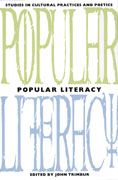 Popular Literacy: Studies in Cultural Practices and Poetics
John Trimbur
University of Pittsburgh Press, 2001
From the work of medieval spiritualist Margery Kempe and John Foxes’ Book of Martyrs to nineteenth century American scrapbooks, Mexican ex-votos, and Italian-American cookbooks, the essays in Popular Literacy examine acts of reading, writing, and speaking that take place at the margins of official, institutionalized literacy.
The contributors explore these noncanonical, unschooled, and unauthorized acts in order to explore how people make literacy popular by using whatever means of communication is at hand, to their own ends. The essays treat a range of topics, agents, and historical settings, and the contributors use a variety of theoretical frameworks and methods from a number of fields: ethnography, American studies, history, literary criticism, science studies, rhetoric, and writing studies.
The chapters examine particularly revealing historical moments and cultural conjunctures where instances of popular literacy take place in uneasy relation to the dominant institutions—the church, the state, the schools, the market. The contributors show that while the practices of popular literacy are never free from these influences, neither are they altogether encapsulated by them.
Taken as a whole, the essays are loosely aligned in a common project to study the ways ordinary (and extraordinary) readers, speakers, and writers use literacy to articulate identities and social aspirations, to produce alternative forms of cultural knowledge, and to cope with the asymmetries of power that regulate cultural life.
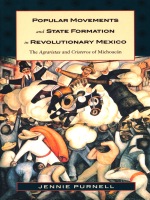 Popular Movements and State Formation in Revolutionary Mexico: The Agraristas and Cristeros of Michoacan
Jennie Purnell
Duke University Press, 1999 In Popular Movements and State Formation in Revolutionary Mexico Jennie Purnell reconsiders peasant partisanship in the cristiada of 1926–29, one episode in the broader Mexican Revolution and the last major popular rebellion in Mexican history. While some scholars have argued that the Mexican Revolution was a people’s rebellion that aimed to destroy the political and economic power of the elites to the benefit of the peasants, others claim that the Revolution was a struggle between elites that left little room for popular participation. Neither approach, however, explains why thousands of peasants sided with the Church against the state and its program of agrarian reform—reform that was presumably in the best interest of the peasants. Nor do they explain why so many peasants who considered themselves devout Catholics took up arms against the Church.
Rather than viewing the cristeros (supporters of the Church) as victims of false consciousness or as religious fanatics, as others have done, Purnell shows that their motivations—as well as the motivations of the agraristas (supporters of the revolutionary state)—stem from local political conflicts that began decades, and sometimes centuries, before the Revolution. Drawing on rich but underutilized correspondence between peasants and state officials written over the course of the nineteenth and twentieth centuries, Purnell shows how these conflicts shaped the relationships between property rights, religious practice, and political authority in the center-west region of Mexico and provides a nuanced understanding of the stakes and interests involved in subsequent conflicts over Mexican anticlericalism and agrarian reform in the 1920s.
 Popular Music Ethnographies: Practice, Place and Identity
Edited by Sarah Raine, Shane Blackman, Robert McPherson, and Iain A. Taylor
Intellect Books, 2025 An ethnographic approach to global pop music studies.
This edited collection offers evocative ways into an international selection of popular music, from the Ecuadorian indie scene to Chinese rock. In exploring the experiences of musicians, fans, industry professionals, and academics, the rich complexity of popular music is brought to life through ethnography as an immersive approach to both undertaking and communicating research.
Experimenting with ethnography through the joys and tribulations of musical production, fandom, and scholarship, the contributors critically consider what it means to be a popular music ethnographer and what it means to take an ethnographic approach to studying popular music.
In addition to the critical essays, shorter vignettes are provided by musicians, venue owners, music writers, live music photographers, and fans. Altogether, the book explores the practices, places, and identities behind the music.
 Popular Music in Leeds: Histories, Heritage, People and Places
Edited by Brett Lashua, Karl Spracklen, and Kitty Ross
Intellect Books, 2023 A groundbreaking study of music and musical history in Leeds.
This is the first scholarly volume to focus on popular music in Leeds. It delves into the rich musical history of Leeds and its long tradition of vibrant venues, nightclubs, dance halls, pubs, and other sites of musical entertainment. The contributors use the popular music of Leeds to exemplify and inform understandings of broader cultural and urban changes, the social and historical significance of music as mass media; music and migration; music, racialization, and social equity; and industrial decline, deindustrialization, neoliberalism, and the rise of the twenty-four-hour city. Charting moments of stark musical politicization and de-politicization, while also tracing arguments about heritagizing popular music within discussions about music’s place in museums and in the urban economy, this book contributes to debates about why music matters, has mattered, and continues to matter in Leeds and beyond.
Popular Music in Southeast Asia: Banal Beats, Muted Histories
Bart Barentdregt, Peter Keppy, and Henk Schulte Nordholt
Amsterdam University Press, 2017 From the 1920s on, popular music in Southeast Asia was a mass-audience phenomenon that drew new connections between indigenous musical styles and contemporary genres from elsewhere to create new, hybrid forms. This book presents a cultural history of modern Southeast Asia from the vantage point of popular music, considering not just singers and musicians but their fans as well, showing how the music was intrinsically bound up with modern life and the societal changes that came with it. Reaching new audiences across national borders, popular music of the period helped push social change, and at times served as a medium for expressions of social or political discontent.
Popular Music Perspectives: Ideas, Themes, and Patterns in Contemporary Lyrics
B. Lee Cooper
University of Wisconsin Press, 1991 In thirteen essays, this book probes ideas and themes that are prominent in contemporary song lyrics. The essays take social change, human interaction, technology, and intellectual development as points of departure for specific examinations of public education, railroads, death, automobiles, and rebels. The essays also examine humor, traditions, and historical events found in answer songs, cover recordings, nursery rhyme adaptations, and novelty tunes.
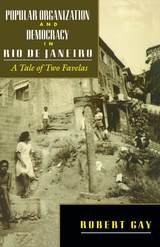 Popular Organization and Democracy in Rio De Janeiro: A Tale of Two Favelas
Robert Gay
Temple University Press, 1993 "Robert Gay's study is well done. It provides a detailed look at two different forms of popular political organization in Brazil and how they relate to the state, local people, parties, and politicians.... Gay allows the reader to catch a glimpse of the enormous varieties of ways in which popular organizations relate politics to contemporary Brazil. There is no comparable book on Latin American politics."
--Scott Mainwaring, Helen Kellogg Institute for International Studies, University of Notre Dame
This urban tale of survival illustrates two versions of active, organized, aggressive participation in the political process.
Vila Brasil survives by exchanging votes for favors. The president of its neighborhood association promises political candidates that the favela will vote in masse for the highest bidder. Vila Brasil has maneuvered this power to become one of the best served favelas in the region--for the moment, at least.
Vidigal, on the other hand, steadfastly refuses to support candidates who campaign on boasts or promises alone. Vote-selling, or buying, is not permitted. To do well in Vidigal, a politician must talk not only about providing electricity and water in the favela, but also about wages, education, and health care over the longer term.
In analyzing the favela's different responses to the popular movement that confronted the military in Rio de Janeiro in the late 1970s and early 1980s, the author makes a significant contribution to literature about relationships among urban poor, political elites, and the state.
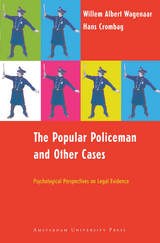 The Popular Policeman and Other Cases: Psychological Perspectives on Legal Evidence
W. A. Wagenaar and H. F. M. Crombag
Amsterdam University Press, 2005 The role of psychologists, both in the courtroom and at the crime scene, is rapidly expanding. Surveying a wide range of international court cases, The Popular Policeman and Other Cases explores the critical—and often misunderstood—intersection of psychology and law.
The authors, both expert psychologists with extensive experience in the courtroom, are quite familiar with the fundamental differences between the law and psychology as an empirical science. As well as dealing with well-known and controversial issues such as recovered memories or false confessions, The Popular Policeman and Other Cases examines a variety of less traditional criminal topics, including illegal gambling, trademark litigation, and the perils of risky courtship behavior. Each chapter reviews an actual case, appraises the relevant scientific research, and then demonstrates how psychological insights were introduced within the courtroom. The authors conclude by noting the outcome of each case—and how their research played a role in the decision.
With its detailed investigation of the complex links between psychological research and its eventual application in the courtroom, The Popular Policeman and Other Cases fills a critical vacancy. It is virtually impossible for researchers to make significant progress within the field of law and psychology without experience as expert witnesses in actual trials. This casebook will be essential for their studies.
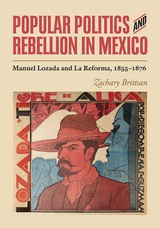 Popular Politics and Rebellion in Mexico: Manuel Lozada and La Reforma, 1855-1876
Zachary Brittsan
Vanderbilt University Press, 2015 The political conflict during Mexico's Reform era in the mid-nineteenth century was a visceral battle between ideologies and people from every economic and social class. As Popular Politics and Rebellion in Mexico develops the story of this struggle, the role of one key rebel, Manuel Lozada, comes into focus. The willingness of rural peasants to take up arms to defend the Catholic Church and a conservative political agenda explains the bitterness of the War of Reform and the resulting financial and political toll that led to the French Intervention. Exploring the activities of rural Jalisco's residents in this turbulent era and Lozada's unique position in the drama, Brittsan reveals the deep roots of colonial religious and landholding practices, exemplified by Lozada, that stood against the dominant political current represented by Benito Juarez and liberalism.
Popular Politics and Rebellion in Mexico also explores the conditions under which a significant segment of Mexican society aligned itself with conservative interests and French interlopers, revealing this constituency to be more than a collection of reactionary traitors to the nation. To the contrary, armed rebellion--or at least the specter of force--protected local commercial interests in the short run and enhanced the long-term prospects for political autonomy. Manuel Lozada's story adds a necessary layer of complexity to our understanding of the practical and ideological priorities that informed the tumultuous conflicts of the mid-nineteenth century.
The Popular Press Companion to Popular Literature
Victor E. Neuburg
University of Wisconsin Press, 1983 In this pioneering work Victor Neuberg has assembled a wealth of information about popular literature, from the invention of the printing press to the present. This guide, by judicious selection, gives a vivid picture of the range and variety of popular literature and its producers. Besides describing the main genres, the author has also included the social, cultural and commercial background to the production of popular literature, factors that were crucial in influencing the forms it took.
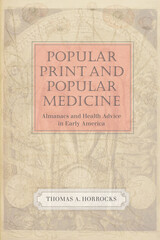 Popular Print and Popular Medicine: Almanacs and Health Advice in Early America
Thomas A. Horrocks
University of Massachusetts Press, 2008 In this innovative study of the relationship between popular print and popular attitudes toward the body, health, and disease in antebellum America, Thomas A. Horrocks focuses our attention on a publication long neglected by scholars—the almanac. Approaching his subject as both a historian of the book and a historian of medicine, Horrocks contends that the almanac, the most popular secular publication in America from the late eighteenth century to the first quarter of the nineteenth, both shaped and was shaped by early Americans' beliefs and practices pertaining to health and medicine. Analyzing the astrological, therapeutic, and regimen advice offered in American almanacs over two centuries, and comparing it with similar advice offered in other genres of popular print of the period, Horrocks effectively demonstrates that the almanac was a leading source of health information in America prior to the Civil War. He contends that the almanac was an integral component of a complicated, fragmented, semi-vernacular health literature of the period, and that the genre played a leading role in disseminating astrological health advice as well as shaping contemporary and future perceptions of astrology. In terms of therapeutic and regimen advice, Horrocks asserts that the almanac performed a complementary role, confirming and reinforcing traditional beliefs and practices. By analyzing the almanac as a cultural artifact that represents a time, a place, and a certain set of assumptions and beliefs, he demonstrates that the genre can provide a lens through which scholars may examine early American attitudes and practices concerning their health in particular and American popular culture in general.
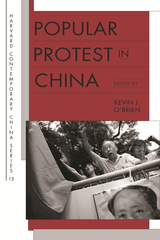 Popular Protest in China
Kevin J. O'Brien
Harvard University Press, 2008 Do our ideas about social movements travel successfully beyond the democratic West? Unrest in China, from the dramatic events of 1989 to more recent stirrings, offers a rare opportunity to explore this question and to consider how popular contention unfolds in places where speech and assembly are tightly controlled. The contributors to this volume, all prominent scholars of Chinese politics and society, argue that ideas inspired by social movements elsewhere can help explain popular protest in China.
Drawing on fieldwork in China, the authors consider topics as varied as student movements, protests by angry workers and taxi drivers, recruitment to Protestant house churches, cyberprotests, and anti-dam campaigns. Their work relies on familiar concepts—such as political opportunity, framing, and mobilizing structures—while interrogating the usefulness of these concepts in a country with a vastly different history of class and state formation than the capitalist West. The volume also speaks to “silences” in the study of contentious politics (for example, protest leadership, the role of grievances, and unconventional forms of organization), and shows that well-known concepts must at times be modified to square with the reality of an authoritarian, non-western state.
Popular Protest in Palestine: The History and Uncertain Future of Unarmed Resistance
Marwan Darweish and Andrew Rigby
Pluto Press, 2015 Popular Protest in Palestine provides an overview and analysis of the role and significance of unarmed civil resistance in the Palestinian national movement. Marwan Darweish and Andrew Rigby focus on the contemporary popular resistance movement in the Occupied Palestinian Territories, prefaced by a historical review of the thread of unarmed civil resistance that has run throughout the history of the Palestinian liberation struggle. The authors explore this underemphasized dimension of the Palestinian struggle, arguing that at the present juncture the popular resistance movement, especially in the West Bank, is the most significant form of struggle against the ongoing occupation.
Popular Religion in America: Symbolic Change and the Modernization Process in Historical Perspective
Peter W. Williams
University of Illinois Press, 1989 "Williams provides a thought-provoking overview of popular religion in America that will intrigue specialist and student alike. . . . He has both answered many questions and raised important new ones on the nature and development of American popular religion." --Journal for the Scientific Study of Religion "Pioneering. . . . I for one am glad he combined scholarship and chutzpah for this modestly immodest first word." --Catholic Historical Review
 Popular Resistance in Palestine: A History of Hope and Empowerment
Mazin B. Qumsiyeh
Pluto Press, 2011 The Western media paint Palestinian resistance against Israeli occupation as exclusively violent: armed resistance, suicide bombings, and rocket attacks. In reality these methods are the exception to what is a peaceful and creative resistance movement. In this fascinating book, Dr Mazin Qumsiyeh synthesises data from hundreds of original sources to provide the most comprehensive study of civil resistance in Palestine.
The book contains hundreds of stories of the heroic and highly innovative methods of resistance employed by the Palestinians over more than 100 years. The author also analyses the successes, failures, missed opportunities and challenges facing ordinary Palestinians as they struggle for freedom against incredible odds. This is the only book to critically and comparatively study the uprisings of 1920-21, 1929, 1936-9, 1970s, 1987-1991 and 2000-2006.
The compelling human stories told in this book will inspire people of all faiths and political backgrounds to chart a better and more informed direction for a future of peace with justice.
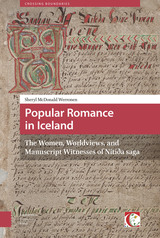 Popular Romance in Iceland: The Women, Worldviews, and Manuscript Witnesses of Nítí¿a saga
Sheryl McDonald Werronen
Amsterdam University Press, 2016 A late medieval Icelandic romance about the ‘maiden-king’ of France, Nítída saga generated interest in its day and grew in popularity in post-Reformation Iceland, yet until now it has not received the comprehensive scholarly analysis that it much deserves. Analysing this saga from a variety of perspectives, this book sheds light on the manner in which Nítída saga explores and negotiates the romance genre from an Icelandic perspective, showcasing this exciting saga’s strong female characters, worldviews, and long manuscript tradition. Beginning with Nítída saga’s manuscript context, including its reception and transformation in early modern Iceland, this study also discusses how Nítída saga was influenced by, and also later influenced, other Icelandic romances. Considering the text as literature, discussion of its unusual depiction of world geography, as well as the various characters and their relationships, provides insights into medieval Icelanders’ ideas about themselves and the world they lived in, including questions about Icelandic identity, gender, female solidarity, and the literary genre of romance itself. The book also includes a newly revised reading edition and translation of Nítída saga.
 The Popular Sources of Political Authority: Documents on the Massachusetts Constitution of 1780
Oscar Handlin
Harvard University Press Rarely is it possible to hear the voice of the people in a revolution except as it filters through the writings of articulate individuals who may not really be representative. But on several occasions during the effort to draft a constitution for Massachusetts after 1776, the citizens of the Commonwealth were asked to convene in their 300 town meetings to debate and convey to the legislators their political theories, needs, and aspirations. This book presents the transcribed debates and the replies returned to Boston which constitute a unique body of material documenting the political thought of the ordinary citizen.
In an important, extended introduction, the editors, interpreting the American Revolution and its sustaining political framework in light of this material, analyze the forces that were singular and those that were universal in the shaping of American democracy. Comparisons are made with popular uprisings in other parts of the world and at other times, and the whole is integrated into a general discussion of the nature of revolution and its relationship to constitutional authority.
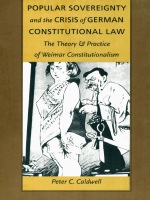 Popular Sovereignty and the Crisis of German Constitutional Law: The Theory and Practice of Weimar Constitutionalism
Peter C. Caldwell
Duke University Press, 1997 Popular Sovereignty and the Crisis of German Constitutional Law is a historical analysis of competing doctrines of constitutional law during the Weimar Republic. It chronicles the creation of a new constitutional jurisprudence both adequate to the needs of a modern welfare state and based on the principle of popular sovereignty. Peter C. Caldwell explores the legal nature of democracy as debated by Weimar’s political theorists and constitutional lawyers. Laying the groundwork for questions about constitutional law in today’s Federal Republic, this book draws clear and insightful distinctions between strands of positivist and anti-positivist legal thought, and examines their implications for legal and political theory.
Caldwell makes accessible the rich literature in German constitutional thought of the Weimar period, most of which has been unavailable in English until now. On the liberal left, Hugo Preuss and Hans Kelsen defended a concept of democracy that made the constitution sovereign and, in a way, created the "Volk" through constitutional procedure. On the right, Carl Schmitt argued for a substantial notion of the "Volk" that could overrule constitutional procedure in a state of emergency. Rudolf Smend and Heinrich Triepel located in the constitution a set of inviolable values of the political community, while Hermann Heller saw in it a guarantee of substantial social equality. Drawing on the work of these major players from the 1920s, Caldwell reveals the various facets of the impassioned constitutional struggles that permeated German legal and political culture during the Weimar Republic.
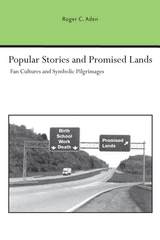 Popular Stories and Promised Lands: Fan Cultures and Symbolic Pilgrimages
Roger C. Aden
University of Alabama Press, 2007 A conversation about who we are, where we’ve been, and where we might be going
Popular Stories and Promised Lands enters a conversation about who we are, where we’ve been, and where we might be going by suggesting that possible answers to those questions can be found in the popular stories we encounter at the movies, on television, in popular magazines, and even on the funny pages.
As countless scholars and popular writers have noted, those of us living in the United States find ourselves at a cultural crossroads. We are increasingly aware that the stories that once permeated life in these United States, stories that tell us that social and economic progress comes from working hard, that everyone has an equal opportunity to experience such progress, do not resonate to the degree they once did. Because many Americans have traditionally defined themselves, others, and their unique sense of place through these stories, we find ourselves displaced socially, economically, politically, and/or culturally.
So, Roger Aden says, we go to places of our own making. Fans of the television series The X-Files return to the Funhouse each week for a dose of frightening fun. Fans of the weekly magazine Sports Illustrated play in the American Elysian Fields where democratic efforts at balancing work and play are valued. Fans of the movie Field of Dreams work as altruistic producers in an alternative garden spot.
Grounded in the author’s own experiences and reinforced by the voices of approximately two hundred additional fans of the four popular stories, this book offers a compelling case for understanding the alleged wasteland of popular culture as a fertile site of individually and communally created sacred places.
 Popular Theatre in Political Culture: Britain and Canada in focus
Edited by Tim Prentki and Jan Selman
Intellect Books, 1995
The fragmentation of social groups in the face of the global mass media has begun to threaten the survival of popular theatre companies. This study traces the development of various types of community theatre in Britain and Canada, from the '70s to the present day.
Attention is drawn to several key issues including: distinctions between popular and mainstream theatre; the Theatre in Education movement; influence of Theatre for Development from Africa and Asia; popular theatre as an art form, a process of self-empowerment and an instrument of cultural intervention. The book follows an innovative structure, integrating a comparative history of popular theatre with the contributions of current, active popular theatre makers. The co-authors, one British, one Canadian, shape their discourses around these contributions so that the the authentic voices are neither mediated nor distorted. The book is thus designed to appeal both to the theatrical practitioner and to the academic.
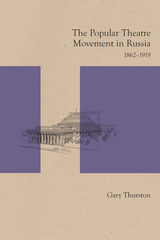 The Popular Theatre Movement in Russia: 1862-1919
Gary Thurston
Northwestern University Press, 2016 In The Popular Theatre Movement in Russia, Gary Thurston illuminates the “popular theater” of pre-revolutionary Russia, which existed alongside the performing arts for the nation’s economic elite. He shows how from Peter the Great's creation of Europe's first theater for popular enlightenment to Lenin's decree nationalizing all Soviet theaters, Russian rulers aggressively exploited this enduring art form for ideological ends rather than for its commercial potential.
After the emancipation of the serfs in 1861, educated Russians began to present plays as part of a crusade to "civilize" the peasants. Relying on archival and published material virtually unknown outside Russia, this study looks at how playwrights criticized Russian social and political realities, how various groups perceived their plays, and how the plays motivated viewers to change themselves or change their circumstances. The picture that emerges is of a potent civic art influential in a way that eluded and challenged authoritarian control.
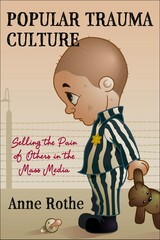 Popular Trauma Culture: Selling the Pain of Others in the Mass Media
Rothe, Anne
Rutgers University Press, 2011 In Popular Trauma Culture, Anne Rothe argues that American Holocaust discourse has a particular plot structure—characterized by a melodramatic conflict between good and evil and embodied in the core characters of victim/survivor and perpetrator—and that it provides the paradigm for representing personal experiences of pain and suffering in the mass media. The book begins with an analysis of Holocaust clichés, including its political appropriation, the notion of vicarious victimhood, the so-called victim talk rhetoric, and the infusion of the composite survivor figure with Social Darwinism. Readers then explore the embodiment of popular trauma culture in two core mass media genres: daytime TV talk shows and misery memoirs.
Rothe conveys how victimhood and suffering are cast as trauma kitsch on talk shows like Oprah and as trauma camp on modern-day freak shows like Springer. The discussion also encompasses the first scholarly analysis of misery memoirs, the popular literary genre that has been widely critiqued in journalism as pornographic depictions of extreme violence. Currently considered the largest growth sector in book publishing worldwide, many of these works are also fabricated. And since forgeries reflect the cultural entities that are most revered, the book concludes with an examination of fake misery memoirs.
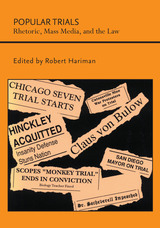 Popular Trials: Rhetoric, Mass Media, and the Law
Robert Hariman
University of Alabama Press, 1993 Contemporary scholarship illustrates the law’s increasingly powerful role in American life; legal education, in turn, has focused on the problems and techniques of communication. This book addresses these interests through critical study of eight popular trials: the 17th-century trial of Dr. Henry Sacheverell, and the 20th-century trials of Scopes, the Rosenbergs, the Chicago Seven, the Catonsville Nine, John Hinckley, Claus von Bulow, and San Diego Mayor Larry Hedgecock. Such trials spark major public debates, become symbols of public life, and legitimize particular beliefs and institutions. Despite high visibility and drama, however, the popular trial has not received sufficient study as persuasive event. Lying at the intersection of the institutional practices of law and the mass media, the popular trial has confounded study according to the conventional assumptions of scholarship in both law and communication studies. This volume defines popular trials as a genre of public communication, a genre that includes trials unusually prominent within public discourse. Further, popular trials are often characterize by special media presentations through televised coverage of the trial itself and news analysis, intense audience identification with the principal actors, and political and social consequences independent of the legal action. The essays in this volume stress the rhetorical functions of popular trials. Contributors in addition to the editor include Lawrance M. Bernabo, Barry Brummett, Celeste Michelle Condit, Juliet Dee, Susan J. Drucker, J. Justin Gustainis, Janice Platt Hunold, William Lewis, John Louis Lucaites, and Larry A. Williamson.
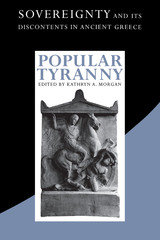 Popular Tyranny: Sovereignty and Its Discontents in Ancient Greece
Edited by Kathryn A. Morgan
University of Texas Press, 2003 The nature of authority and rulership was a central concern in ancient Greece, where the figure of the king or tyrant and the sovereignty associated with him remained a powerful focus of political and philosophical debate even as Classical Athens developed the world's first democracy. This collection of essays examines the extraordinary role that the concept of tyranny played in the cultural and political imagination of Archaic and Classical Greece through the interdisciplinary perspectives provided by internationally known archaeologists, literary critics, and historians. The book ranges historically from the Bronze and early Iron Age to the political theorists and commentators of the middle of the fourth century B.C. and generically across tragedy, comedy, historiography, and philosophy. While offering individual and sometimes differing perspectives, the essays tackle several common themes: the construction of authority and of constitutional models, the importance of religion and ritual, the crucial role of wealth, and the autonomy of the individual. Moreover, the essays with an Athenian focus shed new light on the vexed question of whether it was possible for Athenians to think of themselves as tyrannical in any way. As a whole, the collection presents a nuanced survey of how competing ideologies and desires, operating through the complex associations of the image of tyranny, struggled for predominance in ancient cities and their citizens.
Popular Witchcraft: Straight from the Witch's Mouth
Jack Fritscher
University of Wisconsin Press, 2004 Popular Witchcraft: Straight from the Witch’s Mouth, inspired by the British Gerald Gardner’s Witchcraft Today, was the first book to be published on popular American witchcraft and remains the classic survey of white and black magic. Newly revised and updated for twenty-first-century readers, the author—an ordained but marvelously fallen exorcist—tells all about the evil eye, the queer eye, women and witch trials, the Old Religion, magic Christianity, Satanism, and New Age self-help.
Jack Fritscher sifts through legends of sorcery and the twisted history of witchcraft, including the casting of spells and incantations, with a focus on the growing role of witchcraft in popular culture and its mainstream commercialization through popular music, Broadway, Hollywood, and politics. As seriously historical as it is fun to read, there is no other book like it.
 The Popular Wobbly: Selected Writings of T-Bone Slim
T-Bone Slim
University of Minnesota Press, 2025 The first critical edition of the writings of the prolific radical workers’ newspaper columnist and musician who rode the rails during the Great Depression
The Popular Wobbly brings together a wide selection of writings by T-Bone Slim, the most popular and talented writer belonging to the Industrial Workers of the World (IWW). Slim wrote humorous, polemical pieces, engaging with topics like labor and class injustice, which were mostly published in IWW publications from 1920 until his death in 1942. Although relatively little is known about Slim, editors Owen Clayton and Iain McIntyre coalesce the latest research on this enigmatic character to create a vivid portrait that adds valuable context for the array of writings assembled here.
Known as “the laureate of the logging camps,” Slim also composed numerous songs that have been performed and recorded by Pete Seeger, Utah Phillips, and Candie Carawan, who in 1960 updated Slim’s song “The Popular Wobbly” with Civil Rights–era lyrics. Slim’s witticisms, sayings, and exhortations (“Wherever you find injustice, the proper form of politeness is attack”; “Only the poor break laws—the rich evade them”) were widely discussed among fellow hobos across the “jungle” campfires that dotted the railways, and some even transcribed his commentary on boxcars that traveled the country. Yet despite Slim’s importance and fame during his lifetime, his work disappeared from public view almost immediately after his death.
The Popular Wobbly is the first critical edition of Slim’s work and also a significant contribution to literature about working-class writers, the radical labor movement, and the history and culture of nomadism and precarity. With this publication, Slim’s rediscovered writings can once again inspire artists and activists to march and agitate for a more just and equitable world.
The Popularity of Middle English Romance
Velma B. Richmond
University of Wisconsin Press, 1975 The Middle English romance has elicited throughout the centuries a curious mixture of indifference,hostile apprehension, and contempt that perhaps no other literature—except its most likely offspring, modern best-sellers—has provoked.
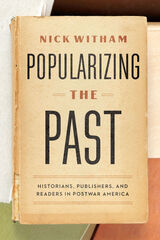 Popularizing the Past: Historians, Publishers, and Readers in Postwar America
Nick Witham
University of Chicago Press, 2023 Popularizing the Past tells the stories of five postwar historians who changed the way ordinary Americans thought about their nation’s history.
What’s the matter with history? For decades, critics of the discipline have argued that the historical profession is dominated by scholars unable, or perhaps even unwilling, to write for the public. In Popularizing the Past, Nick Witham challenges this interpretation by telling the stories of five historians—Richard Hofstadter, Daniel Boorstin, John Hope Franklin, Howard Zinn, and Gerda Lerner—who, in the decades after World War II, published widely read books of national history.
Witham compellingly argues that we should understand historians’ efforts to engage with the reading public as a vital part of their postwar identity and mission. He shows how the lives and writings of these five authors were fundamentally shaped by their desire to write histories that captivated both scholars and the elusive general reader. He also reveals how these authors’ efforts could not have succeeded without a publishing industry and a reading public hungry to engage with the cutting-edge ideas then emerging from American universities. As Witham’s book makes clear, before we can properly understand the heated controversies about American history so prominent in today’s political culture, we must first understand the postwar effort to popularize the past.
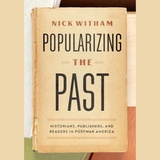 Popularizing the Past: Historians, Publishers, and Readers in Postwar America
Nick Witham
University of Chicago Press, 2023 This is an auto-narrated audiobook edition of this book. Popularizing the Past tells the stories of five postwar historians who changed the way ordinary Americans thought about their nation’s history.
What’s the matter with history? For decades, critics of the discipline have argued that the historical profession is dominated by scholars unable, or perhaps even unwilling, to write for the public. In Popularizing the Past, Nick Witham challenges this interpretation by telling the stories of five historians—Richard Hofstadter, Daniel Boorstin, John Hope Franklin, Howard Zinn, and Gerda Lerner—who, in the decades after World War II, published widely read books of national history.
Witham compellingly argues that we should understand historians’ efforts to engage with the reading public as a vital part of their postwar identity and mission. He shows how the lives and writings of these five authors were fundamentally shaped by their desire to write histories that captivated both scholars and the elusive general reader. He also reveals how these authors’ efforts could not have succeeded without a publishing industry and a reading public hungry to engage with the cutting-edge ideas then emerging from American universities. As Witham’s book makes clear, before we can properly understand the heated controversies about American history so prominent in today’s political culture, we must first understand the postwar effort to popularize the past.
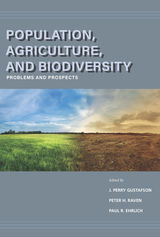 Population, Agriculture, and Biodiversity: Problems and Prospects
J. Perry Gustafson
University of Missouri Press, 2020 This timely collection of 15 original essays written by expert scientists the world over addresses the relationships between human population growth, the need to increase food supplies to feed the world population, and the chances for avoiding the extinction of a major proportion of the world's plant and animal species that collectively makes our survival on Earth possible. These relationships are highly intertwined, and changes in each of them steadily decrease humankind’s chances to achieve environmental stability on our fragile planet.
The world population is projected to be nine to ten billion by 2050, signaling the need to increase world food production by more than 70 percent on the same amount of land currently under production—and this without further damaging our fragile environment. The essays in this collection, written by experts for laypersons, present the problems we face with clarity and assess our prospects for solving them, calling for action but holding out viable solutions.
 The Population Ahead
Roy G. Francis, Editor
University of Minnesota Press, 1958 The Population Ahead was first published in 1958. Minnesota Archive Editions uses digital technology to make long-unavailable books once again accessible, and are published unaltered from the original University of Minnesota Press editions. This volume brings together the thinking and viewpoints of specialists from various pertinent fields for a discussion of factors bearing on the quality of future populations of the world. The discussions center around three fundamental questions: Is the human population growing at a rate which threatens the standards of living to which most of tits individuals aspire? Is the genetic composition of the population tending in directions which are harmful to the common good? What can and should be done, if the answer to either of the foregoing questions is yes? The chapters, by nine different contributors, are based on the papers given at a conference on population problems held at the University of Minnesota in 1957. In addition, discussion and comments by six other participants in the conference are included.
Population and Economic Change in Developing Countries
Edited by Richard A. Easterlin
University of Chicago Press, 1987 "An extremely important book which contains a number of uniformly excellent papers on a variety of topics relating, to various degrees, to the nexus of demographic-economic interrelationships for presently developing countries."—William J. Serow, Southern Economic Journal
"An important landmark in the growing field of economic demography."—Dudley Kirk, Journal of Developing Areas
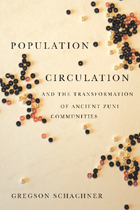 Population Circulation and the Transformation of Ancient Zuni Communities
Gregson Schachner
University of Arizona Press, 2012 Because nearly all aspects of culture depend on the movement of bodies, objects, and ideas, mobility has been a primary topic during the past forty years of archaeological research on small-scale societies. Most studies have concentrated either on local moves related to subsistence within geographically bounded communities or on migrations between regions resulting from pan-regional social and environmental changes. Gregson Schachner, however, contends that a critical aspect of mobility is the transfer of people, goods, and information within regions. This type of movement, which geographers term "population circulation," is vitally important in defining how both regional social systems and local communities are constituted, maintained, and—most important—changed. Schachner analyzes a population shift in the Zuni region of west-central New Mexico during the thirteenth century AD that led to the inception of major demographic changes, the founding of numerous settlements in frontier zones, and the initiation of radical transformations of community organization. Schachner argues that intraregional population circulation played a vital role in shaping social transformation in the region and that many notable changes during this period arose directly out of peoples' attempts to create new social mechanisms for coping with frequent and geographically extensive residential mobility. By examining multiple aspects of population circulation and comparing areas that were newly settled in the thirteenth century to some that had been continuously occupied for hundreds of years, Schachner illustrates the role of population circulation in the formation of social groups and the creation of contexts conducive to social change.
Population, Contact, and Climate in the New Mexican Pueblos
Ezra B. W. Zubrow
University of Arizona Press, 1974 The Anthropological Papers of the University of Arizona is a peer-reviewed monograph series sponsored by the School of Anthropology. Established in 1959, the series publishes archaeological and ethnographic papers that use contemporary method and theory to investigate problems of anthropological importance in the southwestern United States, Mexico, and related areas.
Population, Disease, and Land in Early Japan, 645–900
William Wayne Farris
Harvard University Press From tax and household registers, law codes, and other primary sources, as well as recent Japanese sources, William Wayne Farris has developed the first systematic, scientific analysis of early Japanese population, including the role of disease in economic development. This work provides a comprehensive study of land clearance, agricultural technology, and rural settlement. The function and nature of ritsuryō institutions are reinterpreted within the revised demographic and economic setting.
Farris’s text is illustrated with maps, population pyramids for five localities, and photographs and translations of portions of tax and household registers, which throw further light on the demography and economy of Japan in the seventh, eighth, and ninth centuries.
Population Dynamics and Supply Systems: A Transdisciplinary Approach
Edited by Diana Hummel
Campus Verlag, 2008
While industrialized nations are facing declining birth rates and aging populations, developing countries must deal with rapid urbanization, migration movements, and ongoing population growth. Population Dynamics and Supply Systems explores the links between demographic changes, the environment, and sustainable development. These complex interactions are illustrated with the provisioning structures for water and food. From an inter- and transdisciplinary perspective, this volume uses case studies from Europe, Asia, the Middle East, and Africa to propose innovative solutions for enhancing the adaptive capacity of supply systems to cope with demographic changes.
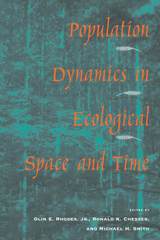 Population Dynamics in Ecological Space and Time
Olin E. Rhodes Jr., Ronald K. Chesser, and Michael H. Smith
University of Chicago Press, 1996 As profound threats to ecosystems increase worldwide, ecologists must move beyond studying single communities at a single point in time. All of the dynamic, interconnected spatial and temporal processes that determine the distribution and abundance of species must be understood in order to develop new conservation and management strategies.
This volume is the first to integrate mathematical and biological approaches to these crucial topics. The editors include not only a wide variety of theoretical approaches, but also a broad range of experimental and field studies, with chapters written by renowned experts in community ecology, ecological modeling, population genetics, and conservation biology.
In addition to providing new insights into well-known topics such as migration, the authors also introduce some less familiar subjects, including bacterial population genetics and ecotoxicology. For anyone interested in the study, management, and conservation of populations, this book will prove to be a valuable resource.
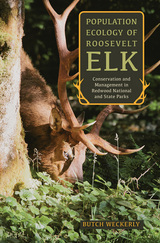 Population Ecology of Roosevelt Elk: Conservation and Management in Redwood National and State Parks
Butch Weckerly
University of Nevada Press, 2017 The Roosevelt elk populate the parks along California’s north coast and comprise the largest land mammals in the parks, some weighing up to 1,200 pounds. They are a stable terrestrial land mammal population, a fixture in the parks, but still require ongoing stewardship and management.
In a study spanning more than twenty years, Weckerly made key observations and conducted various investigations under a multitude of ecological conditions. Few authors have dedicated this much time and effort into a single research area. It is a testament to perseverance that his groundbreaking study of the Roosevelt elk was so successful. He was able to document the independent dynamics of several herds of female elk, experience the extinction of one of their subpopulations, and record scientific conclusions in the context of resiliency and redundancy of the elk population.
This book will be of considerable interest to those who investigate the ecology of big game animals, including naturalists, hunters, and individuals with particular interest in Redwood State and National Parks. It is an important book that contributes substantially to the persistence and viability of Roosevelt elk in the parks and the surrounding area.
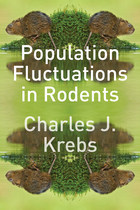 Population Fluctuations in Rodents
Charles J. Krebs
University of Chicago Press, 2013 How did rodent outbreaks in Germany help to end World War I? What caused the destructive outbreak of rodents in Oregon and California in the late 1950s, the large population outbreak of lemmings in Scandinavia in 2010, and the great abundance of field mice in Scotland in the spring of 2011? Population fluctuations, or outbreaks, of rodents constitute one of the classic problems of animal ecology, and in Population Fluctuations in Rodents, Charles J. Krebs sifts through the last eighty years of research to draw out exactly what we know about rodent outbreaks and what should be the agenda for future research. Krebs has synthesized the research in this area, focusing mainly on the voles and lemmings of the Northern Hemisphere—his primary area of expertise—but also referring to the literature on rats and mice. He covers the patterns of changes in reproduction and mortality and the mechanisms that cause these changes—including predation, disease, food shortage, and social behavior—and discusses how landscapes can affect population changes, methodically presenting the hypotheses related to each topic before determining whether or not the data supports them. He ends on an expansive note, by turning his gaze outward and discussing how the research on rodent populations can apply to other terrestrial mammals. Geared toward advanced undergraduate students, graduate students, and practicing ecologists interested in rodent population studies, this book will also appeal to researchers seeking to manage rodent populations and to understand outbreaks in both natural and urban settings—or, conversely, to protect endangered species.
 Population Genetics, Molecular Evolution, and the Neutral Theory: Selected Papers
Motoo Kimura
University of Chicago Press, 1994 One of this century's leading evolutionary biologists, Motoo Kimura revolutionized the field with his random drift theory of molecular evolution—the neutral theory—and his groundbreaking theoretical work in population genetics. This volume collects 57 of Kimura's most important papers and covers forty years of his diverse and original contributions to our understanding of how genetic variation affects evolutionary change.
Kimura's neutral theory, first presented in 1968, challenged the notion that natural selection was the sole directive force in evolution. Arguing that mutations and random drift account for variations at the level of DNA and amino acids, Kimura advanced a theory of evolutionary change that was strongly challenged at first and that eventually earned the respect and interest of evolutionary biologists throughout the world. This volume includes the seminal papers on the neutral theory, as well as many others that cover such topics as population structure, variable selection intensity, the genetics of quantitative characters, inbreeding systems, and reversibility of changes by random drift.
Background essays by Naoyuki Takahata examine Kimura's work in relation to its effects and recent developments in each area.
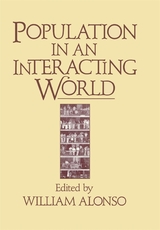 Population in an Interacting World
William Alonso
Harvard University Press, 1987 The earth’s five billion people are linked in a complex web that serves to shape population movements and patterns of births and deaths. In this book, nine experts illuminate the nature of this interplay linking rich and poor countries.
The demographic experience of each nation occurs in a larger context of social, political, economic, cultural, religious, military, and biological forces. On the premise that local population trends cannot be understood apart from such structural and historical factors, the book explores both the highly visible and the more subtle forms of demographic interplay, from the large recent flows of migrants and refugees to smaller yet still important flows such as those of tourists and governments-in-exile, from international shifts in the terms of trade to international programs of population control. It examines the historical roots and contemporary trends of these developments and probes their likely future courses.
The distinguished contributors present here some of the best writing to date on the topic: William H. McNeill on population flows in premodern times, Orlando Patterson on interactions in the West Atlantic region, the late Hedley Bull on the relation between migration and present world structure, Aristide R. Zolberg on guestworker programs, Juergen B. Donges on trade policies and economic migration, William Alonso on changing definitions of the identity of populations, Hans-Joachim Hoffmann-Nowotny on social and cultural dilemmas facing northern Europe, Francis X. Sutton on government policy issues, Myron Weiner on emigration and Third World development. Also discussed are the effects of medical advances on population growth, the implications of differing fertility rates, and the impact of the post-1945 transition from colonial empires to nation-states.
Too often such issues have been treated in disconnected fashion and viewed only as problems of the moment. As this outstanding book shows, they are richly intertwined, both with one another and with the history of world development.
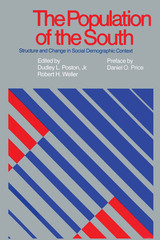 The Population of the South: Structure and Change in Social Demographic Context
Edited by Dudley L. Poston, Jr., and Robert H. Weller
University of Texas Press, 1981 The expression “the New South” was introduced by Henry Grady, editor of the Atlanta Constitution, to a New York audience in 1886; every generation of writers since has used the term. The southern population, unique in its socioeconomic and cultural characteristics, has always been a topic of major interest with U.S. demographers. The articles in this book, the majority of which were originally presented at the Southern Regional Demographic Group meeting in 1976, deal with fertility, mortality, migration, and the factors that influence these components. A number of the contributors trace patterns of demographic change in the South showing convergence with the rest of the United States. Questions are raised about whether the convergence represents a permanent trend—possibly due to increased communication—or whether further divergence may be expected in the future. The contributors include Dudley L. Poston, Jr., William J. Serow, Robert H. Weller, Ronald R. Rindfuss, Harry M. Rosenberg, Drusilla Burnham, David F. Sly, Omer R. Galle, Robert N. Stern, Joachim Singelmann, Susan E. Clarke, and George C. Myers.
 Population Policies Reconsidered: Health, Empowerment, and Rights
Gita Sen
Harvard University Press, 1994 Population Policies Reconsidered brings together a rare combination of scholars, feminists, social activists, and policy-makers across many disciplines to critically reexamine the scientific foundation of contemporary population policies. This book explores population policy dilemmas based on the perspective of ethics, women’s empowerment and health, and human rights. The seventeen chapters are centered around the premise that the single-minded pursuit of demographic goals may not be the most effective means of achieving policy objectives—for such may lead to the abuse or violation of choice and human rights, especially of women. Rather, the book explores the alternative idea that population policies should focus on those ultimate aims of development that are linked to human reproduction—health, social empowerment, and human rights. If respectful of individuals, especially women, such policies are likely to promote better individual welfare and may well also result in desirable demographic outcomes.
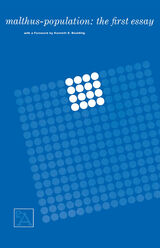 Population: The First Essay
Thomas R. Malthus
University of Michigan Press, 1959 Population: The First Essay by Thomas Robert Malthus examines the relationship between population growth and resources, outlining the principle that population must be kept in check by the means of subsistence. In this seminal work, Malthus contends that while food supply can only increase arithmetically, human population tends to grow geometrically, inevitably leading to a point where resources cannot support the burgeoning population. This imbalance, he argues, results in misery, famine, and mortality unless equilibrated by preventive or positive checks. The essay, originally sparked by a discussion on the future improvement of society, is presented with a foreword by Kenneth E. Boulding, who highlights the historical impact and enduring relevance of Malthus's ideas. The essay critically challenges overly optimistic views on human perfectibility and societal progress, standing as a crucial text in the fields of moral philosophy and the theory of history. It remains a pivotal work, fostering ongoing debates on population dynamics, resource limitations, and their implications for human society.
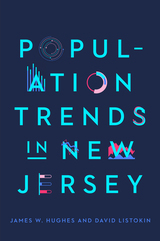 Population Trends in New Jersey
James W. Hughes
Rutgers University Press, 2022 To fully understand New Jersey in the 2020s and beyond, it is crucial to understand its ever-changing population. This book examines the twenty-first century demographic trends that are reshaping the state now and will continue to do so in the future. But trend analysis requires a deep historical context. Present-day New Jersey is the result of a long demographic and economic journey that has taken place over centuries, constantly influenced by national and global forces. This book provides a detailed examination of this journey. The result is present-day New Jersey.
The authors also highlight key trends that will continue to transform the state: domestic migration out of the state and immigration into it; increasing diversity; slower overall population growth; contracting fertility; the household revolution and changing living arrangements; generational disruptions; and suburbanization versus re-urbanization. All of these factors help place in context the result of the 2020 decennial U.S. Census.
While the book focuses on New Jersey, the Garden State is a template of demographic, economic, social, and other forces characterizing the United States in the twenty-first century.
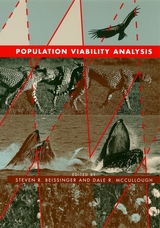 Population Viability Analysis
Edited by Steven R. Beissinger and Dale R. McCullough
University of Chicago Press, 2002 As human populations and the resources required to support societies continue to grow, an increasing number of plant and animal species around the world are facing extinction. Given limited time, space, and money, how do we decide which management actions will be most effective to avert extinctions?
In this book, many of the world's leading conservation and population biologists evaluate what has become a key tool in estimating extinction risk and evaluating potential recovery strategies—population viability analysis, or PVA. PVA integrates data on the life history, demography, and genetics of a species with information on environmental variability, using computer models ranging from simple measures of population growth rate to complex spatial simulations, to predict whether a given population will remain viable (i.e., not go extinct) under various management options. A synthetic and objective overview of the latest theoretical and methodological advances, Population Viability Analysis will be crucial reading for conservationists, land managers, and policy makers.
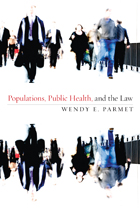 Populations, Public Health, and the Law
Wendy E. Parmet
Georgetown University Press, 2011 Law plays a crucial role in protecting the health of populations. Whether the public health threat is bioterrorism, pandemic influenza, obesity, or lung cancer, law is an essential tool for addressing the problem. Yet for many decades, courts and lawyers have frequently overlooked law’s critical importance to public health. Populations, Public Health, and the Law seeks to remedy that omission. The book demonstrates why public health protection is a vital objective for the law and presents a new population-based approach to legal analysis that can help law achieve its public health mission while remaining true to its own core values. By looking at a diverse range of topics, including food safety, death and dying, and pandemic preparedness, Wendy E. Parmet shows how a population-based legal analysis that recalls the importance of populations and uses the tools of public health can enhance legal decision making while protecting both public health and the rights and liberties of individuals and their communities.
 Populations, Species, and Evolution: An Abridgment of Animal Species and Evolution
Ernst Mayr
Harvard University Press, 1970 Representative of the international acclaim accorded Ernst Mayr’s Animal Species and Evolution, published in 1963, is Sir Julian Huxley’s description of it as “a magistral book…certainly the most important study of evolution that has appeared in many years—perhaps since the publication of On the Origin of Species.” In his extraordinary book, Mayr fully explored, synthesized, and evaluated man’s knowledge about the nature of animal species and the part they play in the process of evolution.
In this long-awaited abridged edition, Mayr’s definitive work is made available to the interested nonspecialist, the college student, and the general reader. The author has retained the dominant themes of his original study—themes now more widely accepted than they were in 1963: the species is the most important unit of evolution; individuals (and not genes) are the targets of natural selection, hence the fitness of “a” gene is a nebulous if not misleading concept; and the most important genetic phenomena in species are species-specific regulatory systems that give species internal cohesion.
Each of the twenty chapters of the original edition has been revised; six have been extensively reworked. Discussions of peripheral subjects and massive citations of the literature have been eliminated, but the glossary has been greatly expanded. The focal point of the volume is, naturally, the species—a reproductively isolated aggregate of interbreeding populations. Presenting an overview of evolutionary biology in Chapter 1, Mayr then considers the nature of species, their population structure, their biological interactions, the multiplication of species, and their role in evolution.
Because of the impossibility of experimenting with man and because an understanding of man’s biology is indispensable for safeguarding his future, emphasis throughout the book is placed on those findings from higher animals which are directly applicable to man. The last chapter, “Man as a Biological Species,” is of particular interest to the general reader. Mayr concludes that while modern man appears to be as well adapted for survival purposes as were his ancestors, there is much evidence to suggest that he is threatened by the loss of his most typically human characteristics.
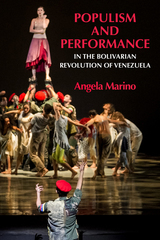 Populism and Performance in the Bolivarian Revolution of Venezuela
Angela Marino
Northwestern University Press, 2018 Populism and Performance in the Bolivarian Revolution of Venezuela explains how supporters of the emergent socialism of Hugo Chávez negotiated terms of national belonging and participatory democracy through performance. By foregrounding populism as an embodied act, Angela Marino draws attention to repertoires of populism that contributed to what is arguably the most significant social movement in the Americas since the Cuban Revolution.
Based on ethnographic and archival research, Marino focuses on performances of the devil figure, tracing this beloved trickster through religious fiestas, mid-century theater and film, and other media as it both antagonizes and unifies a movement against dictatorship and neoliberalism. She then demonstrates that performance became a vehicle through which cultural producers negotiated boundaries of inclusion and exclusion in ways that overcame the simplistic logic of good versus evil, us versus them. The result is a nuanced insight into the process of building political mobilization out of crisis and through monumental times of change.
The book will interest readers of Latin American politics, cultural studies, political science, and performance studies by providing a vital record of the revolution, with valuable insights into its internal dynamics and lessons towards building a populist movement of the left in contentious times.
 Populism in Latin America
Michael L. Conniff
University of Alabama Press, 1999 Populism in Latin America provides a lively, accessible, and up-to- date introduction to the fascinating populist leaders who dominated much of 20th-century Latin American politics. From the earliest years in the La Plata region to the end of the 1990s, Latin American populists proved amazingly successful at gaining high office, holding onto power, maintaining their followings, and renewing their careers. They raised more campaign money, got more voters to the polls, and held followers' allegiances far better than traditional politicians. Certainly some populist leaders corrupted their countries, others manipulated their followers, and still others disgraced themselves. Nevertheless, populist leaders were extraordinarily effective in reaching masses of voters, and some left positive legacies for future generations. Populism in Latin America provides an in-depth and thought-provoking assessment of the most prominent of these colorful and charismatic leaders, whose impact has been profound yet not fully recognized. Latin American scholars here survey the populist experiences in those nations most profoundly influenced by this distinctively Latin American way of conducting the public's business--Argentina, Brazil, Chile, Mexico, Peru, Venezuela, Ecuador, and Panama. Joel Horowitz, for example, examines Argentina's strong legacy of populism, beginning with the remarkable Hip-lito Yrigoyen, moving through the archetypal Juan and Evita Perón, and ending with still-active president Carlos Menem. Ximena Sosa-Buchholz provides a fascinating view of populism in Ecuador, a country often overlooked by students of modern politics. Kurt Weyland challenges the notion that neoliberal, or monetarist, economic policies are incompatible with populism. Other populist leaders profiled include Lazaro Cardenas, Romulo Betancourt, and Alberto Fujimori to name a few. In his epilogue and bibliographic essay, volume editor Michael Conniff suggests new directions for further research and offers a comprehensive survey of the evolution of major writings, theories, and methodologies in the field.
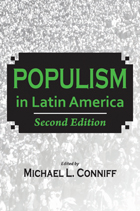 Populism in Latin America: Second Edition
Michael L. Conniff
University of Alabama Press, 2012 This updated edition of Populism in Latin America discusses new developments in populism as a political phenomenon and the emergence of new populist political figures in Mexico, Argentina, and Venezuela in particular. For more than one hundred years—from the beginning of the twentieth to the early twenty-first century—Latin American populists proved amazingly successful at gaining high office, holding on to power, maintaining their followings, and renewing their careers. They raised more campaign money, got more voters to the polls,and held followers’ allegiances far better than traditional politicians. Certainly some populist leaders were corrupt, others manipulated their followers, and still others disgraced themselves. Nevertheless, populist leaders were extraordinarily effective in reaching masses of voters, and some left positive legacies for future generations.
Populism in Latin America examines the notion of populism in the political and social culture of Latin American societies as expressed through the populist leaders of several Latin American countries including Argentina, Brazil, Mexico, Chile, Ecuador, Panama, Peru, and Venezuela. This second edition also includes a new preface by Kenneth M. Roberts, professor of comparative and Latin American politics and the Robert S. Harrison Director of the Institute for the Social Sciences at Cornell University. Contributors
Jorge Basurto / Michael L. Conniff / Paul W. Drake / Steve Ellner / Joel Horowitz /
Kenneth M. Roberts / W. Frank Robinson /Ximena Sosa / Steve Stein / Kurt Weyland
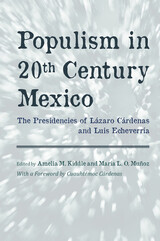 Populism in Twentieth Century Mexico: The Presidencies of Lázaro Cárdenas and Luis Echeverría
Edited by Amelia M. Kiddle and María L. Muñoz; Foreword by Cuauhtémoc Cárdenas
University of Arizona Press, 2010 Mexican presidents Lázaro Cárdenas (1934–1940) and Luis Echeverría (1970–1976) used populist politics in an effort to obtain broad-based popular support for their presidential goals. In spite of differences in administrative plans, both aimed to close political divisions within society, extend government programs to those on the margins of national life, and prevent foreign ideologies and practices from disrupting domestic politics. As different as they were in political style, both relied on appealing to the public through mass media, clothing styles, and music.
This volume brings together twelve original essays that explore the concept of populism in twentieth century Mexico. Contributors analyze the presidencies of two of the century’s most clearly populist figures, evaluating them against each other and in light of other Latin American and Mexican populist leaders. In order to examine both positive and negative effects of populist political styles, contributors also show how groups as diverse as wild yam pickers in 1970s Oaxaca and intellectuals in 1930s Mexico City had access to and affected government projects.
The chapters on the Echeverría presidency are written by contributors at the forefront of emerging scholarship on this topic and demonstrate new approaches to this critical period in Mexican history. Through comparisons to Echeverría, contributors also shed new light on the Cárdenas presidency, suggesting fresh areas of investigation into the work of Mexico’s quintessentially populist leader. Ranging in approach from environmental history to labor history, the essays in this volume present a complex picture of twentieth century populism in Mexico.
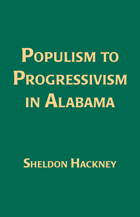 Populism to Progressivism In Alabama
Sheldon Hackney
University of Alabama Press, 2010 Library of Alabama Classics Winner of the Albert J. Beveridge Award of the American Historical Association “In this excellent study of Alabama politics, Hackney deftly analyzes the leadership, following, and essential character of Populism and Progressivism during the period from 1890 to 1910. The work is exceptionally well written; it deals with the personal, social, and political intricacies involved; and it combines traditional and quantitative techniques with a clarity and imagination that should serve as a spur and a model for many future studies.” – Annals of the American Academy of Political and Social Science “Whatever the ultimate judgment on its conclusions may be, this is an important study and one that should stimulate additional research.
“Hackney has very skillfully integrated his quantitative findings and the results of more traditional research. In this respect the book should for some time be a prime exhibit of the utility of the ‘new political history’ [and] we should receive Hackney’s contribution with both gratitude and admiration.” – Journal of Interdisciplinary History Sheldon Hackney is a native Alabamian, and -- perhaps aptly -- the son-in-law of courageous Alabama progressives Virginia and Clifford Durr. A student of C. Vann Woodward at Yale, Hackney taught at Princeton University, served as president of Tulane University (1975-80) and the University of Pennsylvania (1981-1993). In 1993 he was appointed by President Clinton as chairman of the National Endowment for the Humanities, where he served until 1997. After his NEH service he returned to the University of Pennsylvania as Boies Professor of United States History.
A Populist Assault: Sarah E. Van De Vort Emery on American Democracy 1862–1895
Pauline Adams and Emma Thornton
University of Wisconsin Press, 1982
Sarah E. Van De Vort Emery, a Michigan woman transplanted from the Finger Lakes region of New York, was for many years a voice for Populism in the late 19th century. Emery was a woman who believed and acted on her beliefs that freedom and the flowering of the human potential should not five way to the demands of the "money power."
The Populist Response to Industrial America: Midwestern Populist Thought
Norman Pollack
Harvard University Press Populism—progressive or retrogressive force? Posing this question, Norman Pollack draws on Populist manuscripts and newspapers, the best evidence for the movement's response to industrialism. In the words of farmers and workers, Populism springs to life, ceasing to be an abstraction. The author concludes that the movement, while primarily agrarian, had significant intellectual and labor support; accepting industrialization, it opposed capitalistic industrialism as alienating and degrading the individual. In this intellectual history—based on data most of which has been ignored—the author takes a first step toward a more comprehensive analysis of industrial America.
 Populist Revolt: A History of the Farmers' Alliance and the People's Party
John D. Hicks
University of Minnesota Press, 1931 Populist Revolt was first published in 1931. Minnesota Archive Editions uses digital technology to make long-unavailable books once again accessible, and are published unaltered from the original University of Minnesota Press editions. When The Populist Revolt was originally published, the New York Times critic called it "far and away the best account of populism that we have—and one not likely to be replaced." That prophecy proved right; the book has not been replaced, and historians and critics agree that it is the definitive work on its subject. Now it is made available once more, after being out of print for some time. This is a history of the Farmers' Alliance and the People's Party, under whose banners a great crusade for farm relief was waged in the 1880's and 1890's. As important as the chronicle of the political movement itself is the detailed picture which Professor Hicks gives of the conditions which set the stage for this agrarian revolt. He describes the inequities and malpractices which beset both the new settlers of the West and the poverty-ridden whites and Negroes of the South following the Civil War. The story of Populism itself is a lively one, people with such picturesque leaders as "Pitchfork" Ben Tillman of South Carolina, "Sockless" Jerry Simpson and Mary Elizabeth Lease—the "Patrick Henry in petticoats"—of Kansas, "Bloody Bridles" Waite of Colorado, Thomas E. Watson of Georgia, Dr. C. W. Macune of Texas, James B. Weaver of Iowa, and Ignatius Donnelly of Minnesota. In these pages, Professor Hicks has, as Frederic L. Paxson pointed out, "presented the case for Populism better than the Populists themselves could do it." Henry Steele Commanger calls the book a "thorough, scholarly, sympathetic and spirited history of the entire Populist movement."
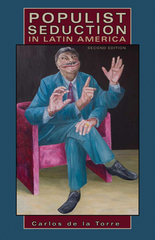 Populist Seduction in Latin America
Carlos de la Torre
Ohio University Press, 2010 Is Latin America experiencing a resurgence of leftwing governments, or are we seeing a rebirth of national-radical populism? Are the governments of Hugo Chávez, Evo Morales, and Rafael Correa becoming institutionalized as these leaders claim novel models of participatory and direct democracy? Or are they reenacting older traditions that have favored plebiscitary acclamation and clientelist distribution of resources to loyal followers? Are we seeing authentic forms of expression of the popular will by leaders who have empowered those previously disenfranchised? Or are these governments as charismatic, authoritarian, and messianic as their populist predecessors? This new and expanded edition of Populist Seduction in Latin America explores the ambiguous relationships between democracy and populism and brings de la Torre’s earlier work up to date, comparing classical nationalist, populist regimes of the 1940s, such as those of Juan Perón and José María Velasco Ibarra, with their contemporary neoliberal and radical successors. De la Torre explores their similarities and differences, focusing on their discourses and uses of political symbols and myths.
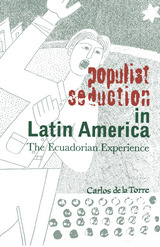 Populist Seduction in Latin America: The Ecuadorian Experience
Carlos De La Torre
Ohio University Press, 2000 Is Latin America experiencing a resurgence of leftwing governments, or are we seeing a rebirth of national-radical populism? Are the governments of Hugo Chávez, Evo Morales, and Rafael Correa becoming institutionalized as these leaders claim novel models of participatory and direct democracy? Or are they reenacting older traditions that have favored plebiscitary acclamation and clientelist distribution of resources to loyal followers? Are we seeing authentic forms of expression of the popular will by leaders who have empowered those previously disenfranchised? Or are these governments as charismatic, authoritarian, and messianic as their populist predecessors? This new and expanded edition of Populist Seduction in Latin America explores the ambiguous relationships between democracy and populism and brings de la Torre’s
earlier work up to date, comparing classical nationalist, populist regimes of the 1940s, such as those of Juan Perón and José María Velasco Ibarra, with their contemporary neoliberal and radical successors. De la Torre explores their similarities and differences, focusing on their discourses and uses of political symbols and myths.
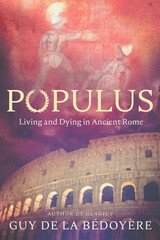 Populus: Living and Dying in Ancient Rome
Guy de la Bédoyère
University of Chicago Press, 2024 This revealing look at life in ancient Rome offers a compelling journey through the vivid landscape of politics, domestic life, entertainment, and inequality experienced daily by Romans of all social strata.
Frenzied crowds, talking ravens, the stench of the Tiber River: life in ancient Rome was stimulating, dynamic, and often downright dangerous. The Romans relaxed and gossiped in baths, stole precious water from aqueducts, and partied and dined to excess. Everyone from senators to the enslaved crowded into theaters and circuses to watch their favorite singers, pantomime, and comedies and scream their approval at charioteers. The lucky celebrated their accomplishments with elaborate tombs. Amid pervasive inequality and brutality, beauty also flourished through architecture, poetry, and art.
From the smells of fragrant cookshops and religious sacrifices to the cries of public executions and murderous electoral mobs, Guy de la Bédoyère’s Populus draws on a host of historical and literary sources to transport us into the intensity of daily life at the height of ancient Rome.
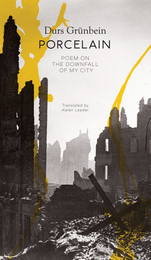 Porcelain: Poem on the Downfall of My City
Durs Grünbein
Seagull Books, 2020 A book-length cycle of forty-nine poems written over the course of more than a decade that together serve as a lament for Durs Grünbein’s hometown, Dresden, which was destroyed in the Allied firebombing of February 1945.
Porcelain is a book-length cycle of forty-nine poems written over the course of more than a decade that together serve as a lament for Durs Grünbein’s hometown, Dresden, which was destroyed in the Allied firebombing of February 1945. The book is at once a history and “declaration of love” to the famed “Venice on the Elbe,” so catastrophically razed by British bombs; a musical fusion of eyewitness accounts, family memories, and stories, of monuments and relics; the story of the city’s destiny as seen through a prism of biographical enigmas, its intimate relation to the “white gold” porcelain that made its fortune and reflections on the power and limits of poetry. Musical, fractured, ironic, and elegiac, Porcelain is controversial, too, in setting itself against what Grünbein calls the “myth” of the Germans as innocent victims of a war crime. At the same time, it never loses sight of the horror deliberately visited on an unwitting civilian population, nor the devastation that looms so large in the German memory. Published for the first time in English, on the seventy-fifth year anniversary of the firebombing, this edition contains new images, notes, Grünbein’s own reflections, and an additional canto—an extraordinary act of poetic kintsugi for the fractured remains of Dresden’s memory.
 The Porch: Meditations on the Edge of Nature
Charlie Hailey
University of Chicago Press, 2021 Come with us for a moment out onto the porch. Just like that, we’ve entered another world without leaving home. In this liminal space, an endless array of absorbing philosophical questions arises: What does it mean to be in a place? How does one place teach us about the world and ourselves? What do we—and the things we’ve built—mean in this world? In a time when reflections on the nature of society and individual endurance are so paramount, Charlie Hailey’s latest book is both a mental tonic and a welcome provocation. Solidly grounded in ideas, ecology, and architecture, The Porch takes us on a journey along the edges of nature where the outside comes in, hosts meet guests, and imagination runs wild.
Hailey writes from a modest porch on the Homosassa River in Florida. He sleeps there, studies the tides, listens for osprey and manatee, welcomes shipwrecked visitors, watches shadows on its screens, reckons with climate change, and reflects on his own acclimation to his environment. The profound connections he unearths anchor an armchair exploration of past porches and those of the future, moving from ancient Greece to contemporary Sweden, from the White House roof to the Anthropocene home. In his ruminations, he links up with other porch dwellers including environmentalist Rachel Carson, poet Wendell Berry, writers Eudora Welty and Zora Neale Hurston, philosopher John Dewey, architect Louis Kahn, and photographer Paul Strand.
As close as architecture can bring us to nature, the porch is where we can learn to contemplate anew our evolving place in a changing world—a space we need now more than ever. Timeless and timely, Hailey’s book is a dreamy yet deeply passionate meditation on the joy and gravity of sitting on the porch.
Porches of North America
Thomas Durant Visser
University Press of New England, 2012 The porch, whether simple or grand, evokes feelings of welcome, comfort, and nostalgia in all of us, yet there has been little published on the history of this omnipresent architectural feature. This book examines how porches in their many forms have evolved in the United States and Canada through innovations, adaptations, and revivals. Covering formal porches and verandas, as well as the many informal vernacular types, this book proffers insights into broad cultural customs and patterns, as well as regional preferences and usage. Lavishly illustrated with contemporary and historic photographs, Porches of North America provides a chronological and typological framework for identifying historic porches. All those who love to while away afternoons on a favorite porch will find this architectural history delightful as well as informative.
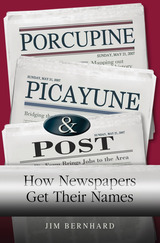 Porcupine, Picayune, & Post: How Newspapers Get Their Names
Jim Bernhard
University of Missouri Press, 2007
Why a Gazette? When one stops to think about it, Times or News is easy to understand, but why do some newspapers have strange names such as Jimplecute or Bazoo? And not to be picayune, but why Picayune?
Word sleuth Jim Bernhard stopped to consider such questions and began a quest that resulted in the only book-length account of the history of newspaper titles. Cataloging names from the most common to the most bizarre, Porcupine, Picayune, & Post explores the history and etymology of newspapers’ names—names that, by their very peculiarity, cry out for explanation.
Bernhard focuses on printed general-interest English-language dailies and weeklies, from the Choteau (Montana) Acantha to the Moab (Utah) Zephyr, with everything in between—including the Gondolier of Venice, Florida, and the Iconoclast of Crawford, Texas. He explains why there are more Heralds, Journals, Posts, and Tribunes than you can shake a typestick at. He also goes beyond America’s borders to consider such oddities as the Banbury Cake in England and the Gawler Bunyip in Australia.
As Bernhard shows, the reasons for newspaper names vary: sometimes their origins are political or historical, sometimes personal or simply whimsical. Many names have lost their original purposes over time but were chosen with care to symbolize a philosophy or mission or else were created by word association with the paper’s location or community role.
This book is bursting with little-known facts that will delight anyone who picks up a daily paper: how the Oil City Derrick in Pennsylvania got its name from a seventeenth-century English hangman, why a Londoner printed a newspaper on calico and named it the Handkerchief, and what meaning lurks behind the Unterrified Democrat of Linn, Missouri. There’s even a chapter on noteworthy fictional newspapers, from Superman’s Daily Planet to Lake Wobegon’s Herald-Star.
With the naming of newspapers fast becoming a lost art, Porcupine, Picayune, & Post tells what’s behind the banners we see each day but probably never stop to think about. Thanks to Bernhard, we may never see them in the same way again.
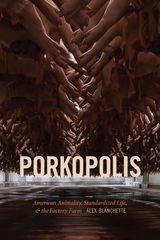 Porkopolis: American Animality, Standardized Life, and the Factory Farm
Alex Blanchette
Duke University Press, 2020 In the 1990s a small midwestern American town approved the construction of a massive pork complex, where almost 7 million hogs are birthed, raised, and killed every year. In Porkopolis Alex Blanchette explores how this rural community has been reorganized around the life and death cycles of corporate pigs. Drawing on over two years of ethnographic fieldwork, Blanchette immerses readers into the workplaces that underlie modern meat, from slaughterhouses and corporate offices to artificial insemination barns and bone-rendering facilities. He outlines the deep human-hog relationships and intimacies that emerge through intensified industrialization, showing how even the most mundane human action, such as a wayward touch, could have serious physical consequences for animals. Corporations' pursuit of a perfectly uniform, standardized pig—one that can yield materials for over 1000 products—creates social and environmental instabilities that transform human lives and livelihoods. Throughout Porkopolis, which includes dozens of images by award-winning photographer Sean Sprague, Blanchette uses factory farming to rethink the fraught state of industrial capitalism in the United States today.
 Porn Archives
Tim Dean, Steven Ruszczycky and David Squires, eds.
Duke University Press, 2014 While sexually explicit writing and art have been around for millennia, pornography—as an aesthetic, moral, and juridical category—is a modern invention. The contributors to Porn Archives explore how the production and proliferation of pornography has been intertwined with the emergence of the archive as a conceptual and physical site for preserving, cataloguing, and transmitting documents and artifacts. By segregating and regulating access to sexually explicit material, archives have helped constitute pornography as a distinct genre. As a result, porn has become a site for the production of knowledge, as well as the production of pleasure.
The essays in this collection address the historically and culturally varied interactions between porn and the archive. Topics range from library policies governing access to sexually explicit material to the growing digital archive of "war porn," or eroticized combat imagery; and from same-sex amputee porn to gay black comic book superhero porn. Together the pieces trace pornography as it crosses borders, transforms technologies, consolidates sexual identities, and challenges notions of what counts as legitimate forms of knowledge. The collection concludes with a valuable resource for scholars: a list of pornography archives held by institutions around the world.
Contributors. Jennifer Burns Bright, Eugenie Brinkema, Joseph Bristow, Robert Caserio, Ronan Crowley, Tim Dean, Robert Dewhurst, Lisa Downing, Frances Ferguson, Loren Glass, Harri Kahla, Marcia Klotz, Prabha Manuratne, Mireille Miller-Young, Nguyen Tan Hoang, John Paul Ricco, Steven Ruszczycky, Melissa Schindler, Darieck Scott, Caitlin Shanley, Ramon Soto-Crespo, David Squires, Linda Williams
 Porn Studies
Linda Williams, ed.
Duke University Press, 2004 In her pioneering book Hard Core, Linda Williams put moving-image pornography on the map of contemporary scholarship with her analysis of the most popular and enduring of all film and video genres. Now, fifteen years later, she showcases the next generation of critical thinking about pornography and signals new directions for study and teaching. Porn Studies resists the tendency to situate pornography as the outer limit of what can be studied and discussed. With revenues totaling between ten and fourteen billion dollars annually—more than the combined revenues of professional football, basketball, and baseball—visual, hard-core pornography is a central feature of American popular culture. It is time, Williams contends, for scholars to recognize this and give pornography a serious and extended analysis. The essays in this volume move beyond feminist debates and distinctions between a “good” erotica and a “bad” hard core. Contributors examine varieties of pornography from the tradition of the soft-core pin-up through the contemporary hard-core tradition of straight, gay, and lesbian videos and dvds to the burgeoning phenomenon of pornography on the Internet. They explore, as examples of the genre, individual works as divergent as The Starr Report, the pirated Tommy Lee/Pamela Anderson honeymoon video, and explicit Japanese “ladies’ comics” consumed by women. They also probe difficult issues such as the sexualization of race and class and the relationship of pornography to the avant-garde. To take pornography seriously as an object of analysis also means teaching it. Porn Studies thus includes a useful annotated bibliography of readings and archival sources important to the study of pornography as a cultural form. Contributors. Heather Butler, Rich Cante, Jake Gerli, Minette Hillyer, Nguyen Tan Hoang, Despina Kakoudaki, Franklin Melendez, Ara Osterweil, Zabet Patterson, Constance Penley, Angelo Restivo, Eric Schaefer, Michael Sicinski, Deborah Shamoon, Maria St. John, Tom Waugh, Linda Williams
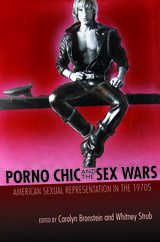 Porno Chic and the Sex Wars: American Sexual Representation in the 1970s
Carolyn Bronstein
University of Massachusetts Press, 2016 For many Americans, the emergence of a “porno chic” culture provided an opportunity to embrace the sexual revolution by attending a film like Deep Throat (1972) or leafing through an erotic magazine like Penthouse. By the 1980s, this pornographic moment was beaten back by the rise of Reagan-era political conservatism and feminist anti-pornography sentiment.
This volume places pornography at the heart of the 1970s American experience, exploring lesser-known forms of pornography from the decade, such as a new, vibrant gay porn genre; transsexual/female impersonator magazines; and pornography for new users, including women and conservative Christians. The collection also explores the rise of a culture of porn film auteurs and stars as well as the transition from film to video. As the corpus of adult ephemera of the 1970s disintegrates, much of it never to be professionally restored and archived, these essays seek to document what pornography meant to its producers and consumers at a pivotal moment.
In addition to the volume editors, contributors include Peter Alilunas, Gillian Frank, Elizabeth Fraterrigo, Lucas Hilderbrand, Nancy Semin Lingo, Laura Helen Marks, Nicholas Matte, Jennifer Christine Nash, Joe Rubin, Alex Warner, Leigh Ann Wheeler, and Greg Youmans.
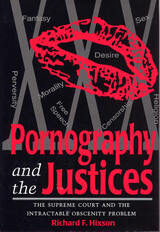 Pornography and the Justices: The Supreme Court and the Intractable Obscenity Problem
Richard F. Hixson
Southern Illinois University Press, 1996
Discussing Supreme Court decisions regarding obscenity, Richard F. Hixson highlights the views of Justices William J. Brennan and John Paul Stevens, borrows from the pioneer decisions of Judge Learned Hand, and consults the work of contemporary First Amendment scholars; finally, though, he relies not on public debate or political machinations but on the justices’ own published opinions, which are, as he says, "the most tantalizing documents of all."
Hixson proceeds chronologically through eleven chapters, with each chapter featuring a specific aspect of the constitutional problem and the approach or solution espoused by a particular justice. Through his case-by-case analysis of the many Supreme Court obscenity rulings, Hixson relates each decision to the temper of the times.
In this investigation of the Supreme Court’s dealings with obscenity, Hixson asks—and answers in detail—a series of pertinent questions. Do Congressional politics and public opinion prejudice the Court’s ability to interpret the Constitution fairly? Must adults be treated the same as children? What are the limits, if any, of "content restriction" on obscene materials? How much "expressive activity" is, or should be, protected by the First Amendment? Does pornography discriminate against women? How protective of the individual can the Supreme Court be and, at the same time, allow as many voices as possible to be heard?
Pornography and the Justices differs from other studies of pornography in its unique focus and its fresh conclusion, which is a composite of views garnered from the Supreme Court justices. As long as there is ample protection of minors and nonconsenting adults, Hixson argues, obscenity should be up to the individual. Separating himself from others who have discussed the issue, Hixson contends that the freedom to speak is as important as the freedom to be heard: it is essential to be able to speak whether or not anyone is listening.
For Hixson, the clear trajectory of Supreme Court opinions implies that the freedom to purchase obscene pornographic matter should be restricted only by time, place, and manner considerations. If a person wants pornography, he or she should be able to get it, albeit perhaps from a higher shelf, in a secluded room, or at a theater clearly marked for adults.
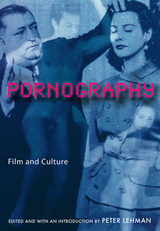 Pornography: Film and Culture
Lehman, Peter
Rutgers University Press, 2006 Porn is big business. By some estimates, it grosses more revenue per year than the entire "legitimate" film and entertainment industry. Most large hotel chains offer pay-for-view adult movies, many video stores have adult movie rental sections, and Internet porn sites have proliferated by the thousands. With porn so ubiquitous in mainstream American culture, why is it that when "respectable" people talk about this phenomenon, they act puzzled, as if they cannot imagine who would watch such worthless and meaningless smut?
In this collection of path-breaking essays, thirteen respected scholars bring critical insights to the reality of porn and what it can tell us about ourselves sexually, culturally, and economically. Moving beyond simplistic feminist and religious positions that cast these films as categorical evils-a collective preserve of sexual perversion, misogyny, pedophilia, and racism-the contributors to this volume raise the bar of the debate and push porn studies into intriguing new territory.
The essays are divided into two sections. The first reprints important debates on the topic and traces the evolution of pornographic film, including comparing its development to that of Hollywood cinema. The second part presents new essays that consider current trends in the field, including pornography's expansion into new technologies.
This book separates this compelling genre from the sensation and shame that have long surrounded and obscured it. It will be of interest to general readers and film scholars alike.
Pornography, the Theory: What Utilitarianism Did to Action
Frances Ferguson
University of Chicago Press, 2004 Pornography first developed in western Europe during the late eighteenth century in tandem with the rise of utilitarianism, the philosophical position that stresses the importance of something's usefulness over its essence. Through incisive readings of Sade, Flaubert, Lawrence, and Bret Easton Ellis, Frances Ferguson here shows how pornography—like utilitarian social structures—diverts our attention from individual identities to actions and renders more clearly the social value of such actions through concrete literary representations.
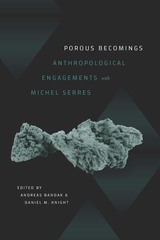 Porous Becomings: Anthropological Engagements with Michel Serres
Andreas Bandak and Daniel M. Knight, editors
Duke University Press, 2024 One of the foremost intellectuals of his generation, French philosopher of science Michel Serres (1930–2019) broke free from disciplinary dogmas. His reflections on science, culture, technology, art, and religion have proved foundational to scholars across the humanities. The contributors to Porous Becomings bring the inspirational and enigmatic world of Serres to the attention of anthropology. Through ethnographic encounters as diverse as angels and religious conversion in Ethiopia, the percolation of war in Bosnia, and incarcerated bodies crossing the Atlantic, the contributors showcase how Serres’s interrogation of the fundamentals of human existence opens new pathways for anthropological knowledge. Proposing the notion of "porosity" to characterize permeability across boundaries of time, space, literary genre, and academic discipline, they draw on Serres to map the constellations that connect humans, time, technology, and planet Earth. The volume concludes with a conversation between the editors and Vibrant Matter author Jane Bennett.
Contributors. Andreas Bandak, Jane Bennett, Tom Boylston, Steven D. Brown, Matei Candea, Alberto Corsín Jiménez, David Henig, Michael Jackson, Daniel M. Knight, Celia Lowe, Morten Nielsen, Stavroula Pipyrou, Elizabeth Povinelli, Andrew Shryock, Arpad Szakolczai
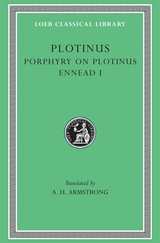 Porphyry on Plotinus. Ennead I
Plotinus
Harvard University Press Plato’s most influential disciple and proponent.
Plotinus (AD 204/5–270), possibly of Roman descent, but certainly a Greek in education and environment, was the first and greatest of Neoplatonic philosophers. Practically nothing is known of his early life, but at the age of 28 he went to Alexandria, and studied philosophy with Ammonius “Saccas” for eleven years. Wishing to learn the philosophy of the Persians and Indians, he joined the expedition of Gordian III against the Persians in 243, not without subsequent danger. Aged 40 he settled in Rome and taught philosophy there till shortly before his death. In 253 he began to write, and continued to do so till the last year of his life. His writings were edited by his disciple Porphyry, who published them many years after his master’s death in six sets of nine treatises each (the Enneads).
Plotinus regarded Plato as his master, and his own philosophy is a profoundly original development of the Platonism of the first two centuries of the Christian era and the closely related thought of the Neopythagoreans, with some influences from Aristotle and his followers and the Stoics, whose writings he knew well but used critically. There is no real trace of Oriental influence on his thought, and he was passionately opposed to Gnosticism. He is a unique combination of mystic and Hellenic rationalist. His thought dominated later Greek philosophy and influenced both Christians and Muslims, and is still alive today because of its union of rationality and intense religious experience.
The Loeb Classical Library edition of Plotinus is in seven volumes.
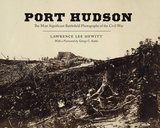 Port Hudson: The Most Significant Battlefield Photographs of the Civil War
Lawrence Lee Hewitt
University of Tennessee Press, 2021 In 1978, Lawrence Lee Hewitt became the first manager of the Port Hudson State Historic Site. There, he began collecting photographs related to the Civil War battle. Carefully analyzing a vast and remarkable photographic record of Port Hudson, Hewitt has now brought his four decades of research and collecting together in this book. The quantity, diversity, and in some cases uniqueness of these photos help widen our perspective not only on Port Hudson and the Civil War’s impact on its people and environment, but also on the history of photography.
Together the six cameramen claimed many “firsts,” including the first-ever photograph of soldiers engaged in battle, first exterior shots at night, and first “composition print.” The collection—arranged chronologically—allows readers to follow the changes in the landscape during and after the siege. The sheer range of subjects represented is impressive. A cotton gin, a grist mill, and a Methodist church—all showing signs of damage—caught the eyes of photographers. At the request of a Union soldier’s mother, there was a photograph taken of his burial site. There is even the only known photograph of a Confederate army surrendering. Biographies of the photographers and the captions in this volume also brim with fresh information about both the photographs and the campaign, attesting to the author’s meticulous scholarship and skilled analysis.
Though Port Hudson may never receive the level of attention of Gettysburg or Vicksburg, this well-conceived collection of photographs will make those with a serious interest in the conflict or photography not only reexamine Port Hudson but also the importance of the Civil War’s photographic record.
 Port Newark and the Origins of Container Shipping
Angus Kress Gillespie
Rutgers University Press, 2023 Container shipping is a vital part of the global economy. Goods from all around the world, from vegetables to automobiles, are placed in large metal containers which are transported across the ocean in ships, then loaded onto tractor-trailers and railroad flatbeds. But when and where did this world-changing invention get started?
This fascinating study traces the birth of containerization to Port Newark, New Jersey, in 1956 when trucker Malcom McLean thought of a brilliant new way to transport cargo. It tells the story of how Port Newark grew rapidly as McLean’s idea was backed by both New York banks and the US military, who used containerization to ship supplies to troops in Vietnam. Angus Gillespie takes us behind the scenes of today’s active container shipping operations in Port Newark, talking to the pilots who guide the ships into port, the Coast Guard personnel who help manage the massive shipping traffic, the crews who unload the containers, and even the chaplains who counsel and support the mariners. Port Newark shines a spotlight on the unsung men and women who help this complex global shipping operation run smoothly.
Since McLean's innovation, Port Newark has expanded with the addition of the nearby Elizabeth Marine Terminal. This New Jersey complex now makes up the busiest seaport on the East Coast of the United States. Some have even called it “America’s Front Door.” The book tells the story of the rapid growth of worldwide containerization, and how Port Newark has adapted to bigger ships with deeper channels and a raised bridge. In the end, there is speculation of the future of this port with ever-increasing automation, artificial intelligence, and automation.
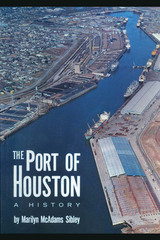 The Port of Houston: A History
By Marilyn McAdams Sibley
University of Texas Press, 1968 Sam Houston's army reached Buffalo Bayou on April 18, 1836, and the ensuing Battle of San Jacinto called attention to the "meandering stream" as a link between the interior of sprawling Texas and the sea. Early in Texas history, the waterway that would one day be known as the Houston Ship Channel evoked dreams in the minds of the enterprising. How these dreams became realities that surpassed all expectation is the subject of Marilyn McAdams Sibley's The Port of Houston: A History. It is the story of the growth of an unlikely inland port situated at a "tent city" that many Texans thought would die young. It proves, as an early visitor to Houston noted, that future greatness depends not so much on location of port or town as on an enterprising population. Controversy between dreamers and promoters is a large part of the story. Was Houston or Harrisburg the head of navigation? Was the shallow stream valuable enough to the nation to warrant the costly deep-water dredging? Was Houston or Galveston to command the trade where land and water meet? As the issues were settled, Houston had spread out to overtake Harrisburg; deep water was achieved in 1914 and was celebrated by ceremonies in which the President of the United States played a part; and Galveston grew into a self-contained island metropolis while Houston became, in the words of Sibley, "the perennial boom town of twentieth-century Texas." As the Port of Houston continued to grow into a multi-billion-dollar institution serving and served by the cotton, wheat, oil, and space industries, its full economic impact on the city of Houston, the state, and the nation cannot be estimated in dollars and cents. But a glance at the trade statistics in the Appendix alone will give some idea of the world-wide value of this thriving port. The many interesting illustrations accompanying Mrs. Sibley's story show in graphic terms the growth of a small town on a stream "of a very inconvenient size;—not quite narrow enough to jump over, a little too deep to wade through without taking off your shoes" into an international complex through which almost $4 billion in cargo passed in its fiftieth-anniversary year.
Portable Biosensors and Point-of-Care Systems
Spyridon E. Kintzios
The Institution of Engineering and Technology, 2017 Portable Biosensors and Point-of-Care Systems describes the principles, design and applications of a new generation of analytical and diagnostic biomedical devices, characterized by their very small size, ease of use, multi-analytical capabilities and speed to provide handheld and mobile point-of-care (POC) diagnostics.
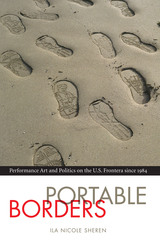 Portable Borders: Performance Art and Politics on the U.S. Frontera since 1984
By Ila Nicole Sheren
University of Texas Press, 2015 After World War II, the concept of borders became unsettled, especially after the rise of subaltern and multicultural studies in the 1980s. Art at the U.S.-Mexico border came to a turning point at the beginning of that decade with the election of U.S. President Ronald Reagan. Beginning with a political history of the border, with an emphasis on the Chicano movement and its art production, Ila Sheren explores the forces behind the shift in thinking about the border in the late twentieth century. Particularly in the world of visual art, borders have come to represent a space of performance rather than a geographical boundary, a cultural terrain meant to be negotiated rather than a physical line. From 1980 forward, Sheren argues, the border became portable through performance and conceptual work. This dematerialization of the physical border after the 1980s worked in two opposite directions—the movement of border thinking to the rest of the world, as well as the importation of ideas to the border itself. Beginning with site-specific conceptual artwork of the 1980s, particularly the performances of the Border Art Workshop/Taller de Arte Fronterizo, Sheren shows how these works reconfigured the border as an active site. Sheren moves on to examine artists such as Guillermo Gómez-Peña, Coco Fusco, and Marcos Ramirez “ERRE.” Although Sheren places emphasis on the Chicano movement and its art production, this groundbreaking book suggests possibilities for the expansion of the concept of portability to contemporary art projects beyond the region.
Portable Gray, volume 4 number 2 (Fall 2021)
The University of Chicago Press
University of Chicago Press Journals, 2021 This is volume 4 issue 2 of Portable Gray. Portable Gray (PG), interdisciplinary in scope and dedicated to experimentation, offers a forum for artists and scholars to consider how collaboration can enrich their practices and foster new discoveries. Encouraging contributors to play with artistic and literary forms and modes in order to challenge long-held ideas, PG features essays, interviews, poetry, art, and musical compositions, among other works.
Portable Gray, volume 5 number 1 (Spring 2022)
The University of Chicago Press
University of Chicago Press Journals, 2022 This is volume 5 issue 1 of Portable Gray. Portable Gray (PG), interdisciplinary in scope and dedicated to experimentation, offers a forum for artists and scholars to consider how collaboration can enrich their practices and foster new discoveries. Encouraging contributors to play with artistic and literary forms and modes in order to challenge long-held ideas, PG features essays, interviews, poetry, art, and musical compositions, among other works.
Portable Gray, volume 5 number 2 (Fall 2022)
The University of Chicago Press
University of Chicago Press Journals, 2022 This is volume 5 issue 2 of Portable Gray. Portable Gray (PG), interdisciplinary in scope and dedicated to experimentation, offers a forum for artists and scholars to consider how collaboration can enrich their practices and foster new discoveries. Encouraging contributors to play with artistic and literary forms and modes in order to challenge long-held ideas, PG features essays, interviews, poetry, art, and musical compositions, among other works.
Portable Gray, volume 6 number 2 (Fall 2023)
The University of Chicago Press
University of Chicago Press Journals, 2023 This is volume 6 issue 2 of Portable Gray. Portable Gray (PG), interdisciplinary in scope and dedicated to experimentation, offers a forum for artists and scholars to consider how collaboration can enrich their practices and foster new discoveries. Encouraging contributors to play with artistic and literary forms and modes in order to challenge long-held ideas, PG features essays, interviews, poetry, art, and musical compositions, among other works.
Portable Gray, volume 7 number 1 (Spring 2024)
The University of Chicago Press
University of Chicago Press Journals, 2024 This is volume 7 issue 1 of Portable Gray. Portable Gray (PG), interdisciplinary in scope and dedicated to experimentation, offers a forum for artists and scholars to consider how collaboration can enrich their practices and foster new discoveries. Encouraging contributors to play with artistic and literary forms and modes in order to challenge long-held ideas, PG features essays, interviews, poetry, art, and musical compositions, among other works.
Portable Gray, volume 7 number 2 (Fall 2024)
The University of Chicago Press
University of Chicago Press Journals, 2024 This is volume 7 issue 2 of Portable Gray. Portable Gray (PG), interdisciplinary in scope and dedicated to experimentation, offers a forum for artists and scholars to consider how collaboration can enrich their practices and foster new discoveries. Encouraging contributors to play with artistic and literary forms and modes in order to challenge long-held ideas, PG features essays, interviews, poetry, art, and musical compositions, among other works.
Portable Gray, volume 8 number 1 (Spring 2025)
The University of Chicago Press
University of Chicago Press Journals, 2025 This is volume 8 issue 1 of Portable Gray. Portable Gray (PG), interdisciplinary in scope and dedicated to experimentation, offers a forum for artists and scholars to consider how collaboration can enrich their practices and foster new discoveries. Encouraging contributors to play with artistic and literary forms and modes in order to challenge long-held ideas, PG features essays, interviews, poetry, art, and musical compositions, among other works.
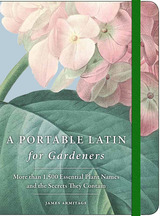 A Portable Latin for Gardeners: More than 1,500 Essential Plant Names and the Secrets They Contain
James Armitage
University of Chicago Press, 2017 Having an understanding of botanical Latin unlocks an entirely new layer of the plant world. Gardeners deciding between a Crocus flavus and Crocus graveolens will know that one produces deep yellow flowers while the other boasts a prominent smell. They can tell whether a plant should have one (unifolius), two (diphyllus), or even nine leaves (enneaphyllus). And they can catch the nods to Sir Joseph Banks in Cordyline banksia and Queen Victoria in Agave victoriae-reginae.
A Portable Latin for Gardeners is the perfect quick reference for working in the garden, shopping for plants, or doing botanical research—and no prior knowledge of Latin is required. The 1,500 terms are grouped by categories, making it easy to describe color, size, form, habitat, scent, taste, and time. Gardeners will make new connections and discoveries in a way standard alphabetical lists simply don’t allow. Alternately, gardeners who want to look up a particular term can jump right into the alphabetical index. Each entry includes the different forms of the term, a basic pronunciation guide, the definition, and an example plant species.
Rich botanical illustrations make this guide as beautiful as it is useful, while a durable flexi-bound cover means the book can withstand both days in the garden and evenings on the nightstand.
Portable Manuscripts and their Utility in the Late Middle Ages
Julia Bruch
Arc Humanities Press, 2025 This book explores the mobility of merchants’ manuscripts—understood as written records in various forms—and their role in shaping and reflecting late medieval social structures. Focusing on merchants as key agents of manuscript circulation, it highlights their impact across fairs and markets in the Holy Roman Empire. Blending cultural and economic history, the chapters span fifteenth- and sixteenth-century case studies that challenge conventional periodization. Drawing on interdisciplinary methods, the book traces manuscripts from production to dissemination and the formation of reading communities. It argues that the history of the premodern economy is incomplete without accounting for the movement of manuscripts as material and social objects.
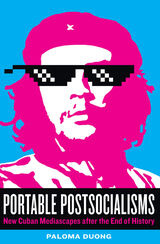 Portable Postsocialisms: New Cuban Mediascapes after the End of History
Paloma Duong
University of Texas Press, 2024 2025 Honorable Mention, Bryce Wood Book Award, Latin American Studies Association
A study of Cuban culture and media in the twenty-first century as both a global phenomenon and a local reality, at a time when the declared death of socialism coexists in tension with emerging anticapitalist movements worldwide.
Why does Cuban socialism endure as an object of international political desire, while images of capitalist markets consume Cuba’s national imagination? This bold new study argues that Cuba’s changing media cultures are key to our understanding of the global postsocialist condition and its competing political imaginaries.
Portable Postsocialisms calls on a vast multimedia archive to offer a groundbreaking cultural interpretation of Cuban postsocialism. Paloma Duong examines songs, artworks, advertisements, memes, literature, jokes, and networks that refuse exceptionalist and exoticizing visions of Cuba. Expanding postsocialist critical theory to read this complex mediascape, Duong argues that a materialist critique of Cuba’s revolutionary legacy must account for Cubans’ everyday demands for agency and self-representation. This long overdue reassessment of Cuba’s place in Latin American and post-Marxist studies shows Cuban postsocialism to be an urgent and indispensable referent for core debates on the politics of participatory cultures in new media studies. Portable Postsocialisms performs the crucial task of redefining how we envision imaginaries of social change in Latin America and the Caribbean.
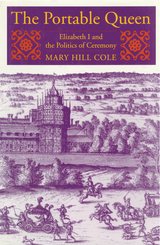 The Portable Queen: Elizabeth I and the Politics of Ceremony
Mary Hill Cole
University of Massachusetts Press, 1999 Every spring and summer of her forty-four years as queen, Elizabeth I (1533–1603) insisted that her court go "on progress," a series of royal visits to towns and aristocratic homes in southern England. These trips provided the only direct contact most people had with a monarch who made popularity a cornerstone of her reign. Public appearances gave the queen a stage on which to interact with her subjects in a calculated effort to keep their support. The progresses were both emblematic of Elizabeth's rule and intrinsic to her ability to govern.
In this book, Mary Hill Cole provides a detailed analysis of the progresses. Drawing on royal household accounts, ministerial correspondence, county archives, corporation records, and family papers, she examines the effects of the visits on the queen's household and government, the individual and civic hosts, and the monarchy of the Virgin Queen.
Cole places the progresses in the sixteenth-century world of politics and images, where the queen and her hosts exchanged ceremonial messages that advanced their own agendas. The heart of the progresses was the blend of politics, socializing, and ceremony that enabled the queen to accomplish royal business on the move while satisfying the needs of those courtiers, townspeople, and country residents who welcomed her into their communities.
While all Renaissance monarchs engaged in occasional travel, in Elizabeth's case the progresses provided the settings in which she crafted her royal authority. Although the trips inconvenienced the government and strained her treasury, Elizabeth found power in the turmoil of an itinerant court and in a continuing ceremonial dialogue with her subjects.
The Portable Radio in American Life
Michael Brian Schiffer
University of Arizona Press, 1991 As an artifact of culture, the portable radio is an unusual but perfect subject for investigation by archaeologist Schiffer. Seeing the history of everyday objects as the history of the life of a people, he shows how the portable radio has reflected changes in American society as surely as clay pots have for ancient cultures.
 Portage Into The Past
J. Arnold Bolz
University of Minnesota Press, 1999 A Minnesota canoe enthusiast retraces the routes of the voyageurs. The wilderness of the Boundary Waters is as rich in history as it is in natural beauty. Almost three hundred years ago, French Canadian voyageurs traveled through this area, which straddles the border of the United States and Canada, paddling birch-bark canoes along the St. Lawrence-Superior route to northwestern Canada. In this work of travel and adventure, Bolz recounts a journey he took in 1958, retracing the voyageurs’ route from Grand Portage on Lake Superior through the Quetico-Superior country to Rainy Lake. His canoe and paddle served as a time machine as he re-created a trip first taken centuries ago. Beautifully illustrated by Francis Lee Jaques, Portage into the Past draws from the journals and maps of the early explorers of the region. Today’s adventurers of the north country will treasure this classic, an ideal guidebook to the region’s remarkable past. “At times, the transition is so smooth that it is with a start that we realize we have suddenly been carried two hundred years into the past.” Canoeing ISBN 0-8166-0919-5 Paper £00.00 $14.95192 Pages 6 x 8 1/4 AprilFesler-Lampert Minnesota Heritage Book SeriesTranslation inquiries: University of Minnesota Press
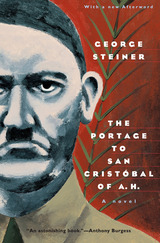 The Portage to San Cristobal of A. H.: A Novel
George Steiner
University of Chicago Press, 1999 Imagine, thirty years after the end of World War II, Israeli Nazi-hunters, some of whom lost relatives in the gas chambers of Nazi Germany, find a silent old man deep in the Amazon jungle. He is Adolph Hitler. The narrative that follows is a profound and disturbing exploration of the nature of guilt, vengeance, language, and the power of evil—each undiminished over time. George Steiner's stunning novel, now with a new afterword, will continue to provoke our thinking about Nazi Germany's unforgettable past.
"Two readings have convinced me that this is a fiction of extraordinary power and thoughtfulness. . . . [A] remarkable novel."—Bernard Bergonzi, Times Literary Supplement
"In this tour de force Mr. Steiner makes his reader re-examine, to whatever conclusions each may choose, a history from which we would prefer to avert our eyes."—Edmund Fuller, Wall Street Journal
"Portage largely avoids both the satisfactions of the traditional novel and the horrifying details of Holocaust literature. Instead, Steiner has taken as his model the political imaginings of an Orwell or Koestler. . . . He has produced a philosophic fantasy of remarkable intensity."—Otto Friedrich, Time
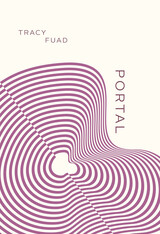 PORTAL
Tracy Fuad
University of Chicago Press, 2024 A poetry collection exploring inheritance and reproduction through the lenses of parenthood, etymology, postcoloniality, and climate anxiety.
Tracy Fuad’s second collection of poems, PORTAL, probes the fraught experience of bringing a new life into a world that is both lush and filled with gloom. A baby is born in a brutalist building; the planet shrinks under the new logic of contagion; roses washed up from a shipwreck centuries ago are blooming up and down the cape. PORTAL documents a life that is mediated, even at its most intimate moments, by flattening interfaces of technology and in which language—and even intelligence—is no longer produced only by humans. The voices here are stalked by eco-grief and loneliness, but they also brim with song and ecstasy, reveling in the strangeness of contemporary life while grieving losses that cannot be restored. Through Fuad’s frank, honest poetry, PORTAL vibrates with pleasure and dread.
Peeling back the surfaces of words to reveal their etymologies, Fuad embraces playfulness through her formal range, engaging styles from the tersely lineated to the essayistic as she intertwines topics of replication, reproduction, technology, language, history, and biology.
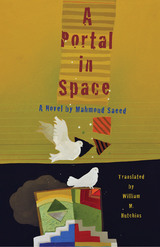 A Portal in Space
By Mahmoud Saeed, Translated by William M. Hutchins
University of Texas Press, 2015 A Portal in Space, set in Basra, Iraq, during the Iran-Iraq War (1980–1988), follows the lives of Anwar, a newly minted architect, and the other members of his affluent family as they attempt to maintain a sense of normality during the frequent bombing attacks from Iran. When Anwar joins the Iraqi army and then goes missing in action, his family struggles to cope with uncertainty over his fate. His mother falls into depression and secludes herself in the family home, while his father shifts his attention from his duties as a judge to the weekly pilgrimage to Baghdad seeking information on his son—and to Zahra, the young widow he meets there. Emotionally engaging, A Portal in Space is a wry, wise tale of human beings striving to retain their humanity during a war that is anything but humane. Mahmoud Saeed succeeds brilliantly in bringing the sights and sounds of Iraq to life on the page—whether in a bunker on the front lines of the Iran-Iraq War or in the parlor of a fortune-teller in Baghdad. As Zahra says of the novel she is writing: “It is a normal novel that contains love, war, life, deceit, and death.”
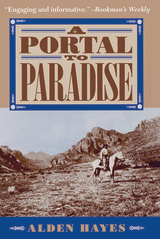 A Portal to Paradise
Alden C. Hayes
University of Arizona Press, 1999 Arizona's rugged Chiricahua Mountains have a special place in frontier history. They were the haven of many well-known personalities, from Cochise to Johnny Ringo, as well as the home of prospectors, cattlemen, and hardscrabble farmers eking out a tough living in an unforgiving landscape. In this delightful and well-researched book, Alden Hayes shares his love for the area, gained over fifty years.
From his vantage point near the tiny twin communities of Portal and Paradise on the eastern slopes of the Chiricahuas, Hayes brings the famous and the not-so-famous together in a profile of this striking landscape, showing how place can be a powerful formative influence on people's lives. When Hayes first arrived in 1941 to manage his new father-in-law's apple orchard, he met folks who had been born in Arizona before it became a state. Even if most had never personally worried about Indian attacks, they had known people who had. Over the years, Hayes heard the handed-down stories about the area's early days of Anglo settlement. He also researched census records, newspaper archives, and the files of the Arizona Historical Society to uncover the area's natural history, prehistory, Spanish and Mexican regimes, and particularly its Anglo history from the mid nineteenth century to the beginning of World War II. His book is a rich account of the region and more, a celebration of rural life, brimming with tales of people whose stories were shaped by the landscape.
Today the Chiricahuas are a magnet for outdoor enthusiasts and the site of the American Museum of Natural History's Southwestern Research Station—and still a rugged area that remains off the beaten track. Hayes brings his straightforward and articulate style to this captivating account of earlier days in southeastern Arizona and opens up a portal to paradise for readers everywhere.
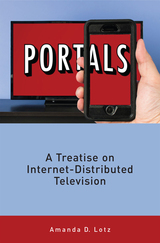 Portals: A Treatise on Internet-Distributed Television
Amanda D. Lotz
Michigan Publishing, 2017 Television audiences and its industry alike have been confused by the emergence of new ways to watch television. On one hand, the programs seem every bit like the television we’ve long known, while the way we can watch, what we can watch, and the business models supporting them differ significantly.
Portals: A Treatise on Internet-Distributed Television pushes understandings of the business of television to keep pace with the considerable technological change of the last decade. It explains why shows such as Orange is the New Black or Transparent are indeed television despite coming to screens over internet connection and in exchange for a monthly fee. It explores how internet-distributed television is able to do new things – particularly, allow different people to watch different shows chosen from a library of possibilities. This technological ability allows new audience behaviors and new norms in making television.
Portals are the “channels” of internet-distributed television, and Portals identifies how the task of curating a library of shows differs from channels’ task of building a schedule. It explores the business model—subscriber funding—that supports many portals, and identifies the key differences from advertiser or direct purchase. Portals considers what we know about the future of television, even though we remain early in a process of transformative change.
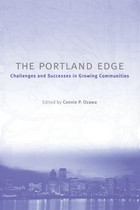 The Portland Edge: Challenges And Successes In Growing Communities
Edited by Connie P. Ozawa
Island Press, 2005 Portland, Oregon, is often cited as one of the most livable cities in the United States and a model for "smart growth." At the same time, critics deride it as a victim of heavy-handed planning and point to its skyrocketing housing costs as a clear sign of good intentions gone awry. Which side is right? Does Portland deserve the accolades it has received, or has hype overshadowed the real story? In The Portland Edge, leading urban scholars who have lived in and studied the region present a balanced look at Portland today, explaining current conditions in the context of the people and institutions that have been instrumental in shaping it. Contributors provide empirical data as well as critical insights and analyses, clarifying the ways in which policy and planning have made a difference in the Portland metropolitan region. Because of its iconic status and innovative approach to growth, Portland is an important case study for anyone concerned with land use and community development in the twenty-first century. The Portland Edge offers useful background and a vital overview of region, allowing others to draw lessons from its experience.
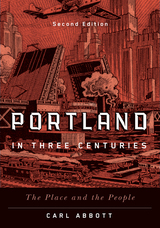 Portland in Three Centuries: The Place and the People
Carl Abbott
Oregon State University Press, 2022 A compact and comprehensive history of Portland from first European contact to the twenty-first century, Portland in Three Centuries introduces the women and men who have shaped Oregon’s largest city. The expected politicians and business leaders appear, but Carl Abbott also highlights workers and immigrants, union members and dissenters, women at work and in the public realm, artists and activists, and other movers and shakers.
Incorporating social history and contemporary scholarship in his narrative, Abbott examines current metropolitan character and issues, giving close attention to historical background. He explores the context of opportunities and problems that have helped to shape the rich mosaic that is Portland.
This revised and updated second edition includes greater attention to the Indigenous peoples of the Portland region, Portland’s communities of color, and the challenges of recent years that have thrust Portland into the national spotlight.
A highly readable character study of a city, and enhanced by more than sixty historic and contemporary images, Portland in Three Centuries will appeal to readers interested in Portland, in Oregon, and in Pacific Northwest history.
 Portland's Audacious Champion: How Bill Naito Overcame Anti-Japanese Hate and Became an Intrepid Civic Leader
Erica Naito-Campbell
Oregon State University Press, 2024 William “Bill” Sumio Naito (1925–1996) was a remarkable and visionary individual—the Portland-born son of Japanese immigrants who became one of the city’s most significant business and civic leaders. Every day thousands of people drive on Naito Parkway alongside Portland’s Waterfront Park, yet little has been written about the man for whom it was named. In this first biography, Erica Naito-Campbell, Bill’s granddaughter, shows how his story is also the story of Portland, the city he loved. Naito’s life, from the Great Depression and World War II through Portland’s rebirth in the 1970s and its profound growth, tracked most of the major events in the city and was the catalyst for many of them. Through hard-earned success in importing and real estate with his brother Sam, Naito came to wield considerable power in the city, and his leadership led to much of what we consider iconic Portland today: the “Portland Oregon” sign near the Burnside Bridge, the annual Christmas tree in Pioneer Courthouse Square, and Harbor Drive’s conversion to Waterfront Park. Naito’s name became synonymous with civic leadership, whether it was growing Portland’s urban tree canopy, revitalizing its downtown, or preserving historic buildings. But less is known about his difficult childhood—with a father who worked twelve-hour days and a mother whose treatment of him was harsh at best—and the racism he endured during World War II. After the expulsion of Japanese Americans following Pearl Harbor and his military service in Occupied Japan, Naito overcame great emotional turmoil to return to Portland and become one of its greatest change-makers. Erica Naito-Campbell uses anecdotes, rich details, and previously unknown stories about Bill Naito to bring Portland’s history to life—while acknowledging that the cost of his success was a family rife with resentments and envy. Her book reveals the emotional wounds that drove Naito to become one of Portland’s most inspiring civic leaders, a pivotal player in the city’s journey from a moribund downtown to a national model for livability, urban renewal, and historic preservation.
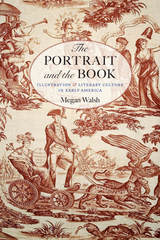 The Portrait and the Book: Illustration and Literary Culture in Early America
Megan Walsh
University of Iowa Press, 2017 In the nineteenth century, new image-making methods like steel engraving and lithography caused a surge in the publication of illustrated books in the United States. Yet even before the widespread use of these technologies, Americans had already established the illustrated book format as central to the nation’s literary culture. In The Portrait and the Book, Megan Walsh argues that colonial-era author portraits, such as Benjamin Franklin’s and Phillis Wheatley’s frontispieces; political portraits that circulated during the debates over the Constitution, such as those of the Founders by Charles Willson Peale; and portraits of beloved fictional characters in the 1790s, such as those of Samuel Richardson’s heroine Pamela, shaped readers’ conceptions of American literature.
Illustrations played a key role in American literary culture despite the fact there was little demand for books by American writers. Indeed, most of the illustrated books bought, sold, and shared by Americans were either imported British works or reprinted versions of those imported editions. As a result, in addition to embellishing books, illustrations provided readers with crucial information about the country’s status as a former colony.
Through an examination of readers’ portrait-collecting habits, writers’ employment of ekphrasis, printers’ efforts to secure American-made illustrations for periodicals, and engravers’ reproductions of British book illustrations, Walsh uncovers in late eighteenth-century America a dynamic but forgotten visual culture that was inextricably tied to the printing industry and to the early US literary imagination.
Portrait Cultures of the Early Modern Cardinal
Piers Baker-Bates
Amsterdam University Press, 2021 The visual legacy of early modern cardinals constitutes a vast and extremely rich body of artworks, many of superb quality, in a variety of media, often by well-known artists and skilled craftsmen. Yet cardinal portraits have primarily been analyzed within biographical studies of the represented individual, in relation to the artists who created them, or within the broader genre of portraiture. Portrait Cultures of the Early Modern Cardinal addresses questions surrounding the production, collection, and status of the cardinal portrait, covering diverse geographies and varied media. Examining the development of cardinals' imagery in terms of their multi-layered identities, this volume considers portraits of 'princes of the Church' as a specific cultural phenomenon reflecting cardinals' unique social and political position.
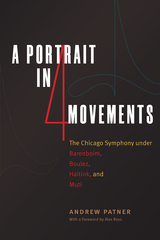 A Portrait in Four Movements: The Chicago Symphony under Barenboim, Boulez, Haitink, and Muti
Andrew Patner
University of Chicago Press, 2019 “Playing in an orchestra in an intelligent way is the best school for democracy.”—Daniel Barenboim
The Chicago Symphony Orchestra has been led by a storied group of conductors. And from 1994 to 2015, through the best work of Daniel Barenboim, Pierre Boulez, Bernard Haitink, and Riccardo Muti, Andrew Patner was right there. As a classical music critic for the Chicago Sun-Times and WFMT radio, Patner was able to trace the arc of the CSO’s changing repertories, all while cultivating a deep rapport with its four principal conductors.
This book assembles Patner’s reviews of the concerts given by the CSO during this time, as well as transcripts of his remarkable radio interviews with these colossal figures. These pages hold tidbits for the curious, such as Patner’s “driving survey” that playfully ranks the Maestri he knew on a scale of “total comfort” to “fright level five,” and the observation that Muti appears to be a southpaw on the baseball field. Moving easily between registers, they also open revealing windows onto the sometimes difficult pasts that brought these conductors to music in the first place, including Boulez’s and Haitink’s heartbreaking experiences of Nazi occupation in their native countries as children. Throughout, these reviews and interviews are threaded together with insights about the power of music and the techniques behind it—from the conductors’ varied approaches to research, preparing scores, and interacting with other musicians, to how the sound and personality of the orchestra evolved over time, to the ways that we can all learn to listen better and hear more in the music we love. Featuring a foreword by fellow critic Alex Ross on the ethos and humor that informed Patner’s writing, as well as an introduction and extensive historical commentary by musicologist Douglas W. Shadle, this book offers a rich portrait of the musical life of Chicago through the eyes and ears of one of its most beloved critics.
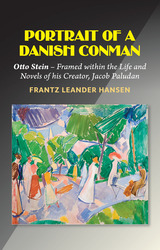 Portrait of a Danish Conman: Otto Stein – Framed within the Life and Novels of his Creator, Jacob Paludan
Frantz Leander Hansen
Sussex Academic Press, 2022 Jacob Paludan's Danish classic novel Jrgen Stein; (1933) includes the subordinate character Otto Stein, a man about town in the roaring 1920s and a promising barrister. Involvement in small-time crime leads to large-scale confidence trickery which ends in decline, fall, and suicide. This literary portrait of an epoch of deceit and fraud as a cultural phenomenon brings to the fore the economics and criminal psychology of the period. Otto Stein is viewed as an ultra-topical figure of our time, someone whose impact on the modern world is important and felt within the spheres of literature, philosophy, jurisprudence, and criminal investigation of contemporary fraudulent behaviour. Inquiry focuses on the path that leads to his suicide. Literary sources of inspiration that contributed to the moulding of the character of Otto Stein are investigated, especially those of Herman Bang, Thomas Mann, and Fjodor Dostjevskij. Relevant are Jacob Paludan's other five novels that were published prior to Jrgen Stein;, where seeds to Otto's character are sown. Critical to understanding the novel and the character is the scam that deprived Paludan of a financial inheritance. Herewith a superb novelistic example of how a writer merges the historical with the contemporary to reveal a psychology of exploitation dangerously meaningful to us all.
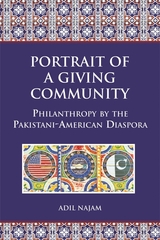 Portrait of a Giving Community: Philanthropy by the Pakistani-American Diaspora
Adil Najam
Harvard University Press, 2006 Portrait of a Giving Community is based on a nationwide survey of the giving habits of Pakistani-Americans. This study, the first of its kind, not only examines the history, demography, and institutional geography of Pakistani-Americans but also looks at how this immigrant community manages its multiple identities through charitable giving and volunteering. It provides a snapshot in time of a generous and giving community whose philanthropy has become increasingly “American” without being less “Pakistani.”
Who are the Pakistani-Americans? What is the extent of their diaspora giving to Pakistan? What can be done to increase and channel their philanthropy for more equitable development in Pakistan? How much do they give within the U.S. and to causes unrelated to Pakistan? How does this community manage the hyphen in “Pakistani-American”? These are some of the questions that motivate this book.
 Portrait of a Greek Imagination: An Ethnographic Biography of Andreas Nenedakis
Michael Herzfeld
University of Chicago Press, 1997 Anthropologist Michael Herzfeld first met Greek novelist Andreas Nenedakis in the drafty courtyard of a public library. This encounter led to an enduring intellectual relationship that prompted Herzfeld to reconsider both the contours of fiction and the nature of anthropology. Portrait of a Greek Imagination, part biography and part ethnography, is Herzfeld's contextualization of Nenedakis's life, as it was both lived and fictionalized.
Herzfeld explores how personal vision intersects with national cultures by examining the Greek author's novels and recollections as historical accounts. Bringing together the methods of the novelist and the anthropologist in their common concern with both social and lived experience, Herzfeld shows how different perspectives shape the historical record. Nenedakis has endured persecution, exile, imprisonment, and torture under Greece's military dictatorship, and his novels—excerpted here in English for the first time—offer an individual version of historical events. As one of his characters ask, "For was not his life, and are not the lives of all of us, a novel?"
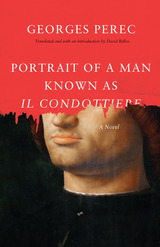 Portrait of a Man Known as Il Condottiere
Georges Perec
University of Chicago Press, 2015 Puckish and playful, Georges Perec infused avant-garde and experimental fiction with a wit and wonder that belied the serious concerns and concepts that underpinned it. A prominent member of the OuLiPo, and an abiding influence on fiction writers today, Perec used formal constraints to dazzling effect in such works as A Void—a murder mystery that contains nary an “e”—and Life A User’s Manual, in which an apartment building, systematically canvassed, unfolds secrets and, ultimately offers a reflection on creation, destruction, and the devotion to art.
Before embarking on these experiments, however, Perec tried his hand at a relatively straightforward novel, Portrait of a Man. His first book, it was rejected by publishers when he submitted it in 1960, after which he filed it away. Decades after Perec’s death, David Bellos discovered the manuscript, and through his translation we have a chance to enjoy it in English for the first time. What fans will find here is a thriller that combines themes that would remain prominent in Perec’s later work, such as art forgery, authenticity, and murder, as well as craftsman Gaspard Winckler, who whose namesakes play major roles in Life A User’s Manual and W or The Memory of Childhood.
Engaging and entertaining on its own merits, and gaining additional interest when set in the context of Perec’s career, Portrait of a Man is sure to charm the many fans of this postmodern master.
|
|

